FEBRUARY 2023

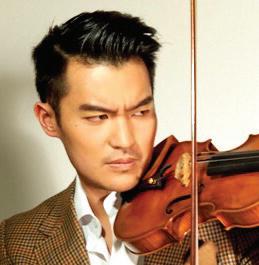
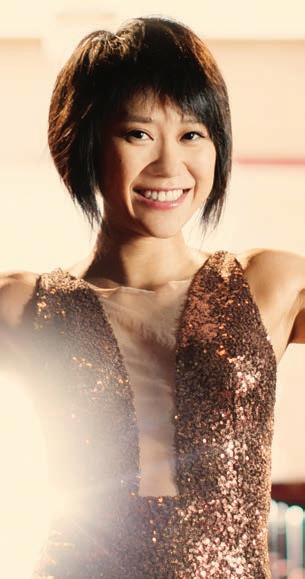
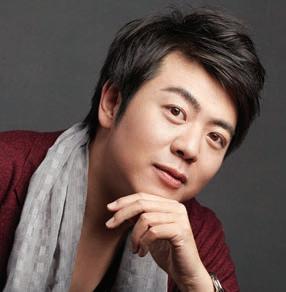

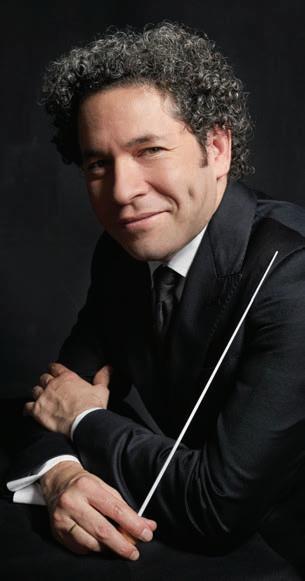
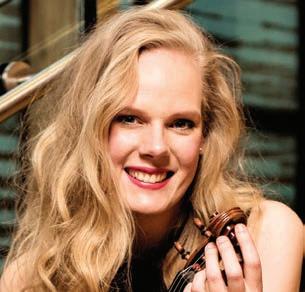
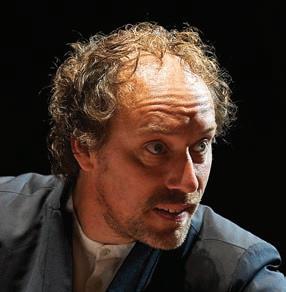

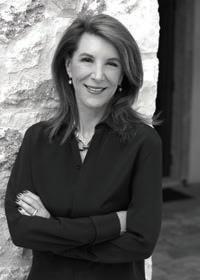
310.623.3650 | Linda@LindaMay.com | LindaMay.com JUST A NOTE TO SAY, HAPPY VALENTINE’S DAY! ©2022 Carolwood Partners Inc. If your property is currently listed, please disregard this notice. It is not our intention to solicit the offerings of other Brokers. The accuracy of all information is deemed reliable, but not guaranteed. Equal Housing Opportunity. DRE 02200006
BOOK I • FEBRUARY 1–12
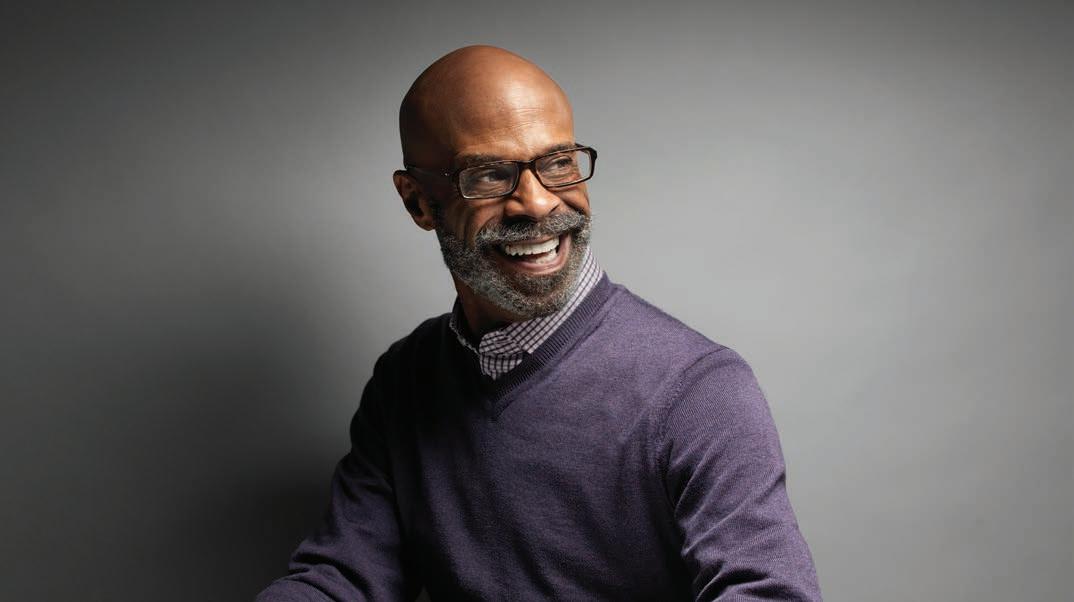
FEB 1
Colburn Celebrity Recital
Emanuel Ax
FEB 3–4
LA Phil
Ray Chen Plays Mendelssohn
FEB 7
Green Umbrella
LA Phil New Music Group with Paolo Bortolameolli
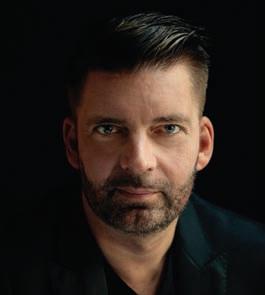
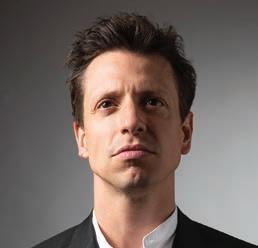

FEB 9
LA Phil
Yuja Wang & Dudamel: Rachmaninoff Concerto 1
FEB 10
LA Phil
Yuja Wang & Dudamel: Rachmaninoff’s Rhapsody
FEB 11–12
LA Phil
Yuja Wang & Dudamel: Rachmaninoff Concerto 2
BOOK II • FEBRUARY 16–28
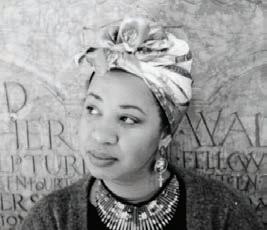
FEB 16–17
LA Phil
Yuja Wang & Dudamel: Rachmaninoff Concerto 3
FEB 18–19
LA Phil
Yuja Wang & Dudamel: Rachmaninoff Concerto 4
FEB 23
LA Phil Lang Lang Plays Grieg
FEB 24–26
LA Phil Bruch and Brahms
FEB 25
Sounds About Town
American Youth Symphony and National Children’s Chorus
FEB 28
Chamber Music
Schubert and Prokofiev
CONTENTS 6 WELCOME MESSAGE FROM THE CEO 7 ABOUT THE LA PHIL 22 SUPPORT THE LA PHIL P1 PROGRAM NOTES
FEBRUARY 2023
2
Cover images, clockwise from top left: Gustavo Dudamel, Lang Lang, Emanuel Ax, Yuja Wang, Otto Tausk, Simone Lamsma, Ray Chen (center).
Paolo Bortolameolli
Courtney Bryan
Matthias Pintscher
My wealth. My priorities. My

spent your life accumulating wealth. And, no
wealth
many forms, sits in many places, and
managed
many advisors.
of
creates gaps that can
wealth
full potential.
Private Bank can help. The Private Bank uses a proprietary approach called the LIFE Wealth Cycle SM to find those gaps—and help you achieve what is important to you.
learn more,
visit unionbank.com/theprivatebank or contact:
partner. ©2023 MUFG Union Bank, N.A. All rights reserved. Member FDIC. Union Bank is a registered trademark and brand name of MUFG Union Bank, N.A. Wills, trusts, foundations, and wealth planning strategies have legal, tax, accounting, and other implications. Clients should consult a legal or tax advisor. Sanjay Chugani Senior Private Wealth Advisor sanjay.chugani@unionbank.com 323-630-0112 NMLS ID #637487
You’ve
doubt, that
now takes
is
by
Unfortunately, that kind
fragmentation
hold your
back from its
The
To
please
Los Angeles Philharmonic Publications 2023
Editor Ricky O’Bannon
Art Director Natalie Suarez
Design Studio Fuse

Editorial Coordinator
Michail Sklansky
Explore more at: laphil.com
Publisher Jeff Levy
Art Director Carol Wakano
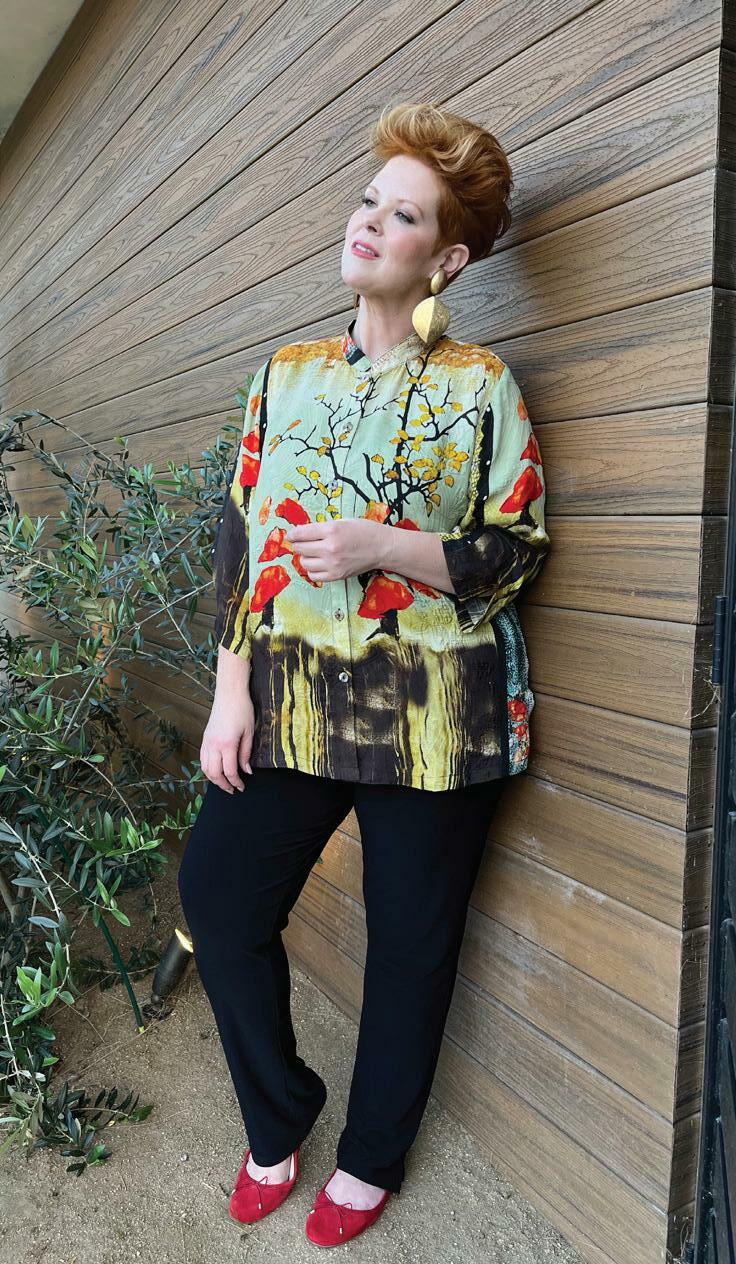
Production Manager
Glenda Mendez
Production Artist
Diana Gonzalez
Digital Program Manager


Audrey Duncan Welch
Digital Manager
Lorenzo Dela Rama
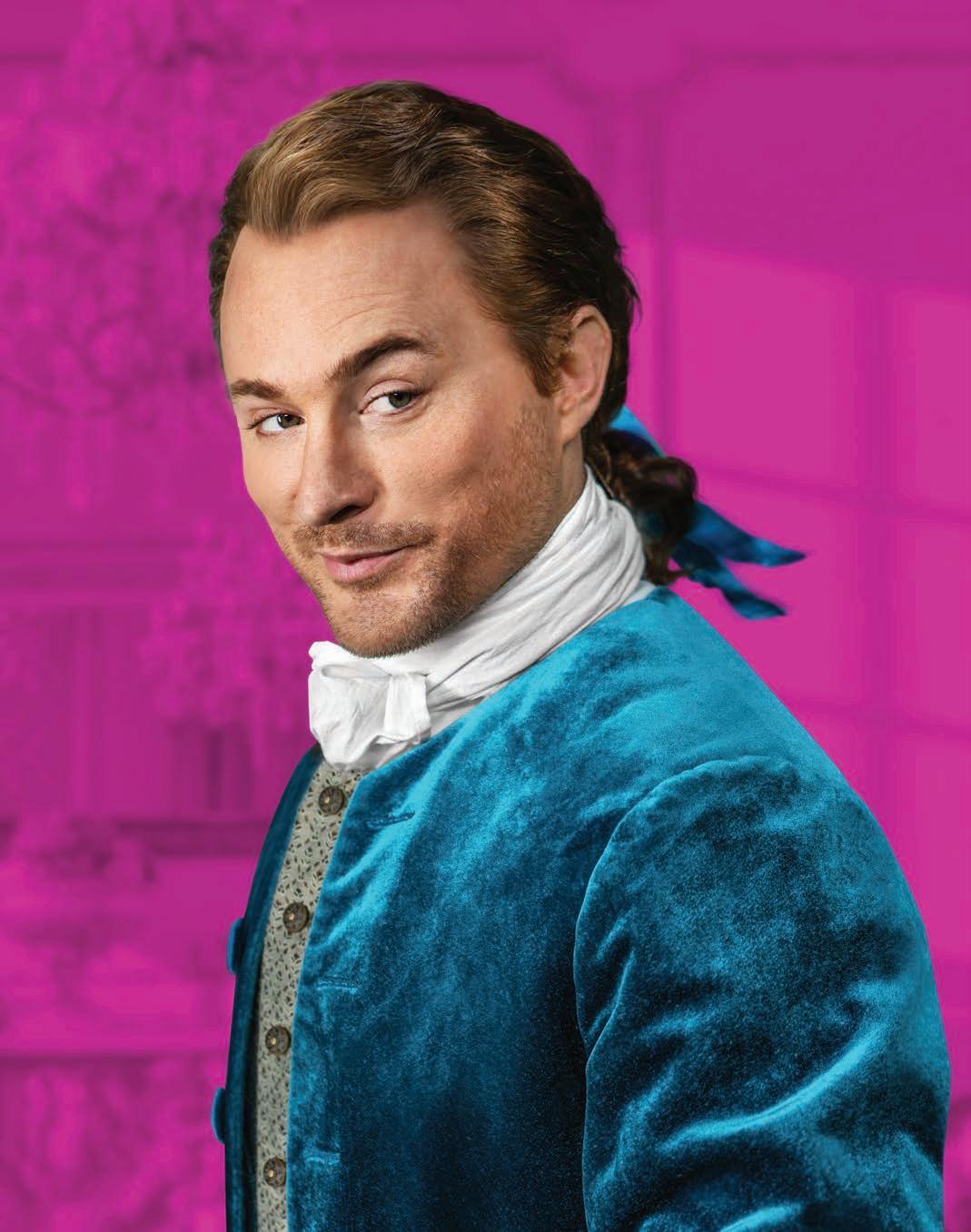
Advertising Director

Walter Lewis
Account Directors
Kerry Baggett, Jan Bussman, Jean Greene, Tina Marie Smith
Circulation Manager
Christine Noriega-Roessler
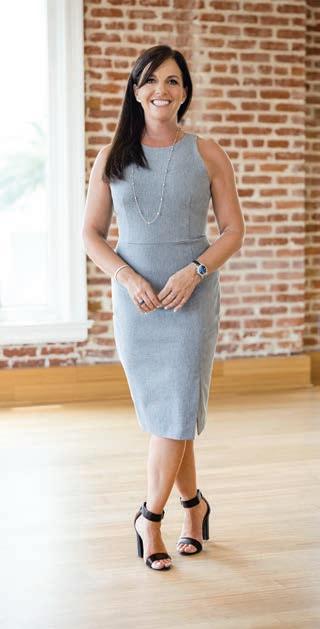
Business Manager
Leanne Killian Riggar
Marketing/
Production manager
Dawn Kiko Cheng
Contact Us
Advertising
Walter.Lewis@ CaliforniaMediaGroup.com
Website Lorenzo.DelaRama@ CaliforniaMediaGroup.com
Circulation
Christine.Roessler@ CaliforniaMediaGroup.com
Honorary President Ted Levy
For information about advertising and rates contact California Media Group 3679 Motor Ave., Suite 300 Los Angeles, CA 90034 Phone: 310.280.2880 Fax: 310.280.2890
Visit Performances Magazine online at socalpulse.com
Performances
is

4 PERFORMANCES MAGAZINE
the West.
Printed in the United States. AN UPSCALE BOUTIQUE SIZES 12 UP 13606 VENTURA BLVD. SHERMAN OAKS 818.990.6128 AbundancePlusSizes.com Background art by Vecteezy Best Performance ...By A Realtor In The South Bay Lauren Forbes CEO / Founder 310.901.8512 lauren@laurenforbes.com laurenforbesgroup.com DRE 01295248 $1B+ Career Sales Volume Compass is a real estate broker licensed by the State of California and abides by Equal Housing Opportunity laws. License Number 01991628, 01527235, 1527365. All material presented herein is intended for informational purposes only and is compiled from sources deemed reliable but has not been verified. Changes in price, condition, sale or withdrawal may be made without notice. No statement is made as to accuracy of any description. All measurements and square footage are approximate.
Magazine
published by California Media Group to serve performing arts venues throughout
© 2023 California Media Group. All Rights Reserved.
























LAOPERA.ORG • 213.972.8001 Tickets for A Budgets CHRISTOPHER KOELSCH JAMES CONLON RICHARD SEAVER MUSIC DIRECTOR PRESIDENT AND CHIEF EXECUTIVE OFFICER SEBASTIAN PAUL AND MARYBELLE MUSCO FIRST COMES LOVE, THEN COMES MARRIAGE HOLLYWOOD MEETS HAUTE COUTURE IN OPERA’S GREATEST COMEDY, WITH DIRECTOR JAMES GRAY AND DESIGNER CHRISTIAN LACROIX MOZART'S conducted by JAMES CONLON FEB 4—26 SHENANIGANS
WELCOME!
One of our highlights this month is an exploration of both the music and life of Sergei Rachmaninoff. The extraordinary Russian pianist and composer wrote some of the most beloved piano works ever performed. Yuja Wang describes Rachmaninoff’s work as “the most sensuous and passionate thing,” a gift to play.
But many might forget that Rachmaninoff was both a naturalized American citizen and an Angeleno, passing away in his home on North Elm Drive in Beverly Hills. The LA Phil Humanities Initiative presents Rachmaninoff Was Here: The Golden Age of Beverly Hills, featuring a series of events celebrating the world the composer found here in the 1940s, including avant-garde artists, musicians, authors, and filmmakers— many of whom shared his émigré background.
Rachmaninoff joins countless past and present-day stories of immigrant artists being welcomed by our community, adding their perspectives and experiences, and building upon those they find here. At one point, two of the architects of 20th-century revolution in classical music—Igor Stravinsky and Arnold Schoenberg—lived only a few miles apart in Los Angeles. This legacy serves to remind us of a Southern California history worth remembering and to highlight a spirit of openness that we continue to foster and renew, in our music and in our communities.
Chad Smith Chief Executive Officer
David C. Bohnett Chief Executive Officer Chair Los Angeles Philharmonic Association
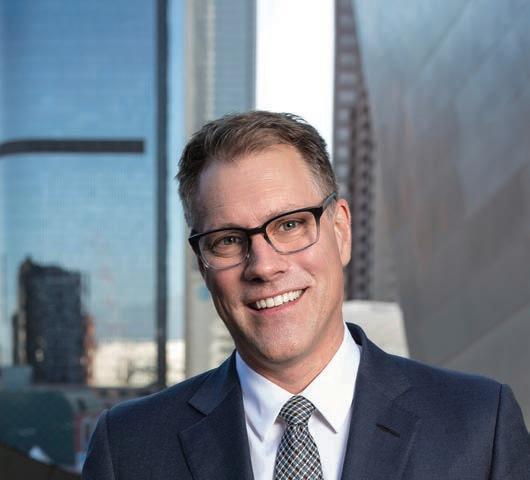
Board of Directors
CHAIR
Thomas L. Beckmen*
CEO
Chad Smith
VICE CHAIRS
David C. Bohnett*
Reveta Bowers*
Jane B. Eisner*
David Meline*
Diane Paul*
Jay Rasulo*
DIRECTORS
Nancy Abell
Gregory A. Adams
Julie Andrews
Linda Brittan
Jennifer Broder
Kawanna Brown
Andrea Chao-Kharma*
R. Martin Chavez
Christian D. Chivaroli, JD
Donald P. de Brier*
Louise D. Edgerton
Lisa Field
David A. Ford
Alfred Fraijo, Jr.
Jennifer Miller Goff*
Carol Colburn Grigor
Marian L. Hall
Antonia Hernandez*
Teena Hostovich
Jonathan Kagan*
Darioush Khaledi
Winnie Kho
Francois Mobasser
Margaret Morgan
Leith O’Leary
Andy Park
Sandy Pressman
Richard Raffetto
Geoff Rich
Laura Rosenwald
G. Gabrielle Starr
Jay Stein*
Christian Stracke*
Jason Subotky
Ronald D. Sugar*
Vikki Sung
Jack Suzar
Sue Tsao
Jon Vein
Megan Watanabe
Regina Weingarten
Alyce de Roulet
Williamson
Irwin Winkler
Debra Wong Yang
HONORARY LIFE DIRECTORS
Frank Gehry
Lenore S. Greenberg
Bowen H. “Buzz” McCoy
*Executive Committee Member as of October 1, 2022

6 PERFORMANCES MAGAZINE
LOS ANGELES PHILHARMONIC ASSOCIATION
LETTER FROM THE CEO
GUSTAVO DUDAMEL

Music & Artistic Director, Walt and Lilly Disney Chair
of legendary film composer John Williams with a Gala event. Further highlights with the LA Phil include a fall tour with performances at Carnegie Hall, Boston, and Mexico City and Guanajuato as part of the Cervantino Festival; a multi-week exploration of the piano/orchestral works of Rachmaninoff with Yuja Wang; and the return of Wagner’s Tristan und Isolde, directed by Peter Sellars, with video by Bill Viola.
Gustavo Dudamel is driven by the belief that music has the power to transform lives, to inspire, and to change the world. Through his dynamic presence on the podium and his tireless advocacy for arts education, Dudamel has introduced classical music to new audiences around the globe and has helped to provide access to the arts for countless people in underserved communities. He currently serves as the Music & Artistic Director, Walt and Lilly Disney Chair, of the Los Angeles Philharmonic and Music Director of the Opéra National de Paris and Simón Bolívar Symphony Orchestra.
Dudamel’s bold programming and expansive vision led The New York Times to herald the LA Phil as “the most important orchestra in America—period.” In the 2022/23 season, Dudamel and the LA Phil continue their visionary, multiyear Pan-American Music Initiative and celebrate the 90th birthday
Following his inaugural season as Music Director of the Paris Opera, the 2022/23 season features Dudamel leading productions of Puccini’s Tosca, Wagner’s Tristan und Isolde, a new production of John Adams’ Nixon in China, and Thomas Adès’ Dante Project, choreographed by Wayne McGregor. Dudamel has led over 30 staged and semi-staged operas as well as concert productions across the world’s major stages, including five productions with Teatro alla Scala, productions at the Berlin and Vienna State Operas, the Metropolitan Opera in New York, and 13 operas in Los Angeles, with repertoire ranging from Così fan tutte to Carmen, from Otello to Tannhäuser, from West Side Story to contemporary operas by composers like John Adams and Oliver Knussen. In April 2022, Dudamel conducted the LA Phil and a star-studded cast in a new production of Beethoven’s opera Fidelio, produced in collaboration with Los Angeles’ Tony Award®-winning Deaf West Theatre, Deaf performers of El Sistema Venezuela’s Coro de Manos Blancas (White Hands Choir), and the Dudamel Foundation.
Dudamel’s advocacy for the power of music to unite, heal, and inspire is global in scope. Shaped by his transformative experience as a youth in El Sistema,
Venezuela’s immersive musical training program, Dudamel with the LA Phil and its community partners founded YOLA (Youth Orchestra Los Angeles) in 2007, now providing 1,500 young people with free instruments, intensive music instruction, academic support, and leadership training. In October 2021, YOLA opened its first permanent, purpose-built facility: The Judith and Thomas L. Beckmen YOLA Center at Inglewood, designed by architect Frank Gehry. Dudamel also created the Dudamel Foundation in 2012 with the goal “to expand access to music and the arts for young people by providing tools and opportunities to shape their creative futures.”
One of the few classical musicians to become a bona fide pop-culture phenomenon, Dudamel was honored with a star on the Hollywood Walk of Fame in 2019, joining Hollywood greats as well as musical luminaries such as Leonard Bernstein, Duke Ellington, and Arturo Toscanini. He conducted the score to Steven Spielberg’s new film adaptation of Bernstein’s West Side Story and starred as the subject of the documentary ¡Viva Maestro!
Dudamel’s extensive, multipleGrammy Award®-winning discography numbers 65 releases, including recent Deutsche Grammophon LA Phil recordings of Mahler’s Symphony No. 8, which won the Grammy® for Best Choral Performance, and the complete Charles Ives symphonies and Andrew Norman’s Sustain, which both won the Grammy Award® for Best Orchestral Performance.
For more information about Gustavo Dudamel, visit his official website at gustavodudamel.com and the Dudamel Foundation at dudamelfoundation.org.
PERFORMANCES MAGAZINE 7 ABOUT THE LA PHIL
“THE RARE CLASSICAL ARTIST TO HAVE CROSSED INTO POP-CULTURE CELEBRITY.”
— The New York Times’ Zachary Woolfe and Laura Cappelle
LOS ANGELES PHILHARMONIC

The Los Angeles Philharmonic, under the vibrant leadership of Music & Artistic Director Gustavo Dudamel, presents an inspiring array of music through a commitment to foundational works and adventurous explorations. Both at home and abroad, the LA Phil—recognized as one of the world’s outstanding orchestras—is leading the way in groundbreaking and diverse programming, onstage and in the community, that reflects the orchestra’s artistry and demonstrates its vision. The 2022/23 season is the orchestra’s 104th.
More than 250 concerts are either performed or presented by the LA Phil at its three iconic venues: the Frank Gehry-designed Walt Disney Concert Hall, The Ford, and the famed Hollywood Bowl. During its winter season at Walt Disney Concert Hall, with approximately 165 performances, the LA Phil creates festivals, artist residencies, and other thematic programs designed to enhance the audience’s experience of orchestral music. Since 1922, its summer home has been the worldfamous Hollywood Bowl, host to the finest artists from all genres
of music. Situated in a 32-acre park and under the stewardship of the LA Phil since December 2019, The Ford presents an eclectic summer season of music, dance, film, and family events that are reflective of the communities that comprise Los Angeles. The orchestra’s involvement with Los Angeles extends far beyond its venues, with wide-ranging performances in the schools, churches, and neighborhood centers of a vastly diverse community. Among its influential and multifaceted learning initiatives is YOLA (Youth Orchestra Los Angeles), inspired by Venezuela’s revolutionary El Sistema. Through YOLA, the LA Phil and its community partners now provide free instruments, intensive music instruction, and leadership training to 1,500 students from underserved neighborhoods, empowering them to become vital citizens, leaders, and agents of change. In the fall of 2021, YOLA opened its own permanent, purpose-built facility: the Judith and Thomas L. Beckmen YOLA Center at Inglewood, designed by Frank Gehry.
The orchestra also undertakes tours, both domestically and
internationally, including regular visits to New York, London (where the orchestra is the Barbican Centre’s International Orchestral Partner), Paris, and Tokyo. As part of its global Centennial activities, the orchestra visited Seoul, Tokyo, Mexico City, London, Boston, and New York. The LA Phil’s first tour was in 1921, and the orchestra has made annual tours since the 1969/70 season.
The LA Phil has released an array of critically acclaimed recordings, including world premieres of the music of John Adams and Louis Andriessen, along with Grammy Award®-winning recordings featuring the music of Johannes Brahms, Charles Ives, and Andrew Norman. Deutsche Grammophon has released a comprehensive box set in honor of the orchestra’s centennial.
The Los Angeles Philharmonic was founded in 1919 by William Andrews Clark, Jr., a wealthy amateur musician. Walter Henry Rothwell became its first Music Director, serving until 1927; since then, 10 renowned conductors have served in that capacity. Their names are Georg Schnéevoigt (1927-1929), Artur Rodziński (1929-1933), Otto Klemperer (1933-1939), Alfred Wallenstein (1943-1956), Eduard van Beinum (1956-1959), Zubin Mehta (1962-1978), Carlo Maria Giulini (1978-1984), André Previn (1985-1989), Esa-Pekka Salonen (1992-2009), and Gustavo Dudamel (2009-present).
“SO FAR AHEAD OF OTHER AMERICAN ORCHESTRAS THAT IT IS IN COMPETITION MAINLY WITH ITS OWN PAST ACHIEVEMENTS.”
8 PERFORMANCES MAGAZINE ABOUT THE LA PHIL
— The New Yorker ’s Alex Ross
LOS ANGELES PHILHARMONIC
Gustavo Dudamel
Music & Artistic
Director
Walt and Lilly Disney Chair
Zubin Mehta
Conductor Emeritus
Esa-Pekka Salonen
Conductor Laureate
Susanna Mälkki
Principal Guest
Conductor Ann Ronus Chair
Paolo Bortolameolli
Associate Conductor
John Adams
John and Samantha Williams Creative Chair
Herbie Hancock Creative Chair for Jazz
FIRST VIOLINS
Martin Chalifour
Principal Concertmaster
Marjorie Connell Wilson Chair
Nathan Cole
First Associate
Concertmaster
Ernest Fleischmann Chair
Bing Wang
Associate Concertmaster
Barbara and Jay Rasulo Chair
Akiko Tarumoto
Assistant
Concertmaster
Philharmonic Affiliates Chair
Rebecca Reale
Michele Bovyer
Deanie and Jay Stein Chair
Rochelle Abramson
Camille Avellano
Margaret and Jerrold
L. Eberhardt Chair
Minyoung Chang
I.H. Albert Sutnick Chair
Tianyun Jia
Jordan Koransky
Mischa Lefkowitz
Edith Markman
Ashley Park
Stacy Wetzel
Justin Woo
SECOND VIOLINS
Lyndon Johnston Taylor
Principal
Dorothy Rossel Lay Chair
Mark Kashper Associate Principal
Kristine Whitson
Johnny Lee
Dale Breidenthal
Mark Houston Dalzell and James DaoDalzell Chair for Artistic Service to the Community
Ingrid Chun
Jin-Shan Dai
Chao-Hua Jin
Jung Eun Kang
Nickolai Kurganov
Varty Manouelian
Michelle Tseng
Suli Xue
Gabriela Peña-Kim*
Sydney Adedamola*
Eugene and Marilyn Stein LA Phil Resident Fellow Chair
VIOLAS
Teng Li Principal
John Connell Chair
Ben Ullery
Assistant Principal
Dana Lawson
Richard Elegino
John Hayhurst
Ingrid Hutman
Michael Larco
Hui Liu
Meredith Snow
Leticia Oaks Strong
Minor L. Wetzel
Jarrett Threadgill*
Nancy and Leslie Abell
LA Phil Resident Fellow Chair
CELLOS
Robert deMaine
Principal
Bram and Elaine Goldsmith Chair
Ben Hong
Associate Principal
Sadie and Norman
Lee Chair
Dahae Kim
Assistant Principal
Jonathan Karoly
David Garrett
Barry Gold
Jason Lippmann
Gloria Lum
Linda and Maynard
Brittan Chair
Serge Oskotsky
Brent Samuel Ismael Guerrero*
BASSES
Christopher Hanulik
Principal
Diane Disney Miller and Ron Miller Chair
Kaelan Decman
Associate Principal
Oscar M. Meza
Assistant Principal
David Allen Moore
Ted Botsford
Jack Cousin
Jory Herman
Brian Johnson
Peter Rofé+
Nicholas Arredondo*
FLUTES
Denis Bouriakov
Principal
Virginia and Henry Mancini Chair
Catherine
Ransom Karoly
Associate Principal
Mr. and Mrs. H. Russell Smith Chair
Elise Shope Henry
Mari L. Danihel Chair
Sarah Jackson
Piccolo
Sarah Jackson
OBOES
Marc Lachat
Principal
Carol Colburn Grigor Chair
Marion Arthur Kuszyk
Associate Principal
Anne Marie Gabriele
Carolyn Hove
English Horn
Carolyn Hove
Alyce de Roulet Williamson Chair
CLARINETS
Boris Allakhverdyan
Principal
Michele and Dudley Rauch Chair
Burt Hara
Associate Principal
Andrew Lowy
E-Flat Clarinet
Andrew Lowy
BASSOONS
Whitney Crockett
Principal
Shawn Mouser
Associate Principal
Ann Ronus Chair
Michele Grego
Evan Kuhlmann
Contrabassoon
Evan Kuhlmann
HORNS
Andrew Bain
Principal
John Cecil Bessell Chair
Gregory Roosa
Alan Scott Klee Chair
Amy Jo Rhine
Loring Charitable Trust Chair
Elyse Lauzon
Reese and Doris
Gothie Chair
Ethan Bearman
Assistant
Bud and Barbara Hellman Chair
TRUMPETS
Thomas Hooten
Principal
M. David and Diane
Paul Chair
James Wilt
Associate Principal
Nancy and Donald
de Brier Chair
Christopher Still
Ronald and Valerie
Sugar Chair
Jeffrey Strong
TROMBONES
David Rejano
Cantero Principal
James Miller
Associate Principal
Judith and Thomas L. Beckmen Chair
Paul Radke
Bass Trombone
John Lofton Miller and Goff Family Chair
TUBA
James Mason Soria
TIMPANI
Joseph Pereira
Principal
Cecilia and Dudley Rauch Chair
David Riccobono
Assistant Principal
PERCUSSION
Matthew Howard Principal
James Babor
Perry Dreiman+
David Riccobono
Justin Ochoa*
KEYBOARDS
Joanne Pearce Martin
Katharine Bixby Hotchkis Chair
HARP
Emmanuel Ceysson Principal
Ann Ronus Chair
LIBRARIANS
Stephen Biagini
Benjamin Picard
KT Somero
CONDUCTING FELLOWS
Rodolfo Barráez
Linhan Cui
Chloé Dufresne
Luis Toro Araya
* Judith and Thomas L. Beckmen L A Phil Resident Fellow
+ on sabbatical
The Los Angeles Philharmonic string section utilizes revolving seating on a systematic basis. Players listed alphabetically change seats periodically.
The musicians of the Los Angeles Philharmonic are represented by Professional Musicians Local 47, AFM.
PERFORMANCES MAGAZINE 9
A healthy note from Kaiser Permanente:

Official partner in health & harmony
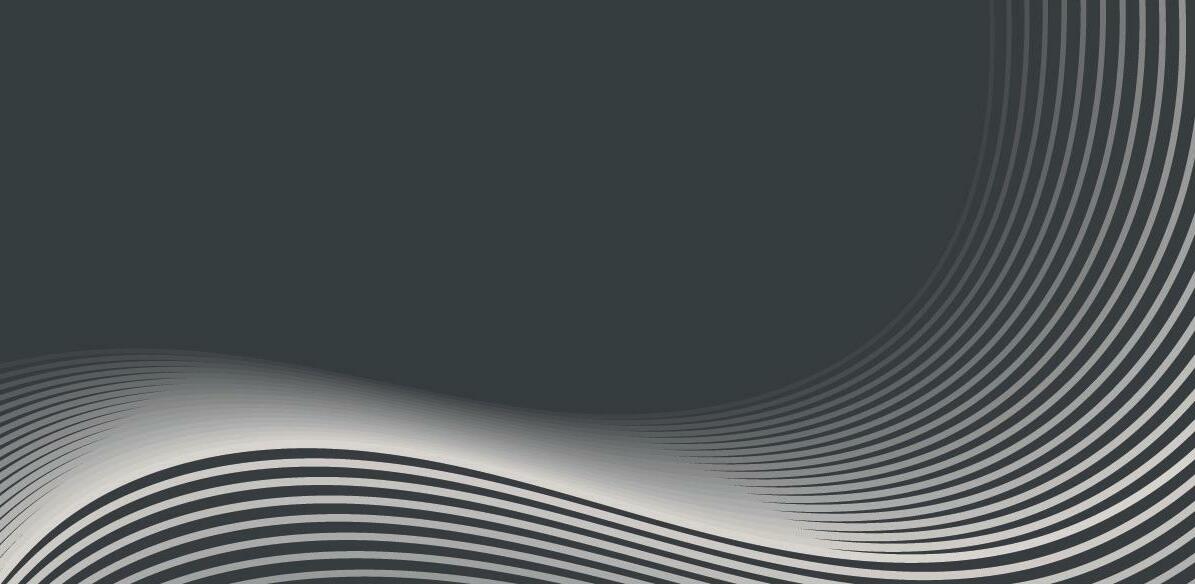
Music is good for you — mind, body, and spirit.



Chad Smith
CHIEF EXECUTIVE OFFICER
David C. Bohnett Chief Executive Officer Chair
Paula Michea
EXECUTIVE ASSISTANT TO THE CHIEF EXECUTIVE OFFICER
EXECUTIVE TEAM
Summer Bjork
CHIEF OF STAFF
Nora Brady
SENIOR VICE PRESIDENT, MARKETING & COMMUNICATIONS
Glenn Briffa
CHIEF FINANCIAL OFFICER
Margie Kim
CHIEF PHILANTHROPY OFFICER
Emanuel Maxwell
CHIEF TALENT AND EQUITY OFFICER
Renae Williams Niles
CHIEF CONTENT & ENGAGEMENT OFFICER
Mona Patel
GENERAL COUNSEL
Daniel Song
CHIEF OPERATING OFFICER
Meghan Umber
SENIOR VICE PRESIDENT, PROGRAMMING
SENIOR MANAGEMENT
TEAM
Laura Connelly
GENERAL MANAGER, HOLLYWOOD BOWL; VICE PRESIDENT, PRODUCTION
Cynthia Fuentes
DIRECTOR, THE FORD
Elsje
Kibler-Vermaas
VICE PRESIDENT, LEARNING
Sara Kim
VICE PRESIDENT, PHILANTHROPY
Johanna Rees
VICE PRESIDENT, PRESENTATIONS
Carlos Singer
DIRECTOR, GOVERNMENT & COMMUNITY ENGAGEMENT
Julia Ward
DIRECTOR, HUMANITIES
ADMINISTRATION
Stephanie Bates
COVID MONITOR
Michael Chang
DATABASE ADMINISTRATOR
Alex Hernandez
MANAGER, OFFICE SERVICES
Kevin Higa
CLOUD INFRASTRUCTURE
ENGINEER
Dean Hughes
SYSTEM SUPPORT III
Charles Koo
INFRASTRUCTURE MANAGER
Kevin Ma
SENIOR MANAGER, STRATEGIC INITIATIVES
Jeff Matchan
DIRECTOR, INFORMATION
TECHNOLOGY
Sergio Menendez
SYSTEM SUPPORT I
Edward Mesina
INFRASTRUCTURE ENGINEER
Angela Morrell
TESSITURA SUPPORT
Marius Olteanu
IT SUPPORT ENG I
Sean Pinto
DATABASE APPLICATIONS
MANAGER
Miguel A. Ponce, Jr.
SYSTEM SUPPORT I
Christopher Prince
TESSITURA SUPPORT
Mark Quinto
DIRECTOR, IT SERVICES
Aly Zacharias
DIRECTOR, LEGAL
ARTISTIC PLANNING & PRESENTATIONS
Emily Davis ARTIST LIAISON
Kristen
Flock-Ritchie
PROGRAMMING MANAGER
Brian Grohl
PROGRAM MANAGER, POPS /
MANAGER, HOLLYWOOD BOWL
ORCHESTRA
Ljiljana Grubisic
ARCHIVES AND MUSEUM
DIRECTOR
Daniel Mallampalli
SENIOR PROGRAMMING
MANAGER
Rafael Mariño
PROGRAM MANAGER
Meredith Reese
DIGITAL ASSET MANAGER
Ayrten Rodriguez
SENIOR PROGRAM MANAGER
Stephanie Yoon
ARTIST SERVICES MANAGER
AUDIENCE SERVICES
Denise Alfred REPRESENTATIVE
Vilma Alvarez
SUPERVISOR
Brendan Broms
SUPERVISOR
Diego Delatorre
SUPERVISOR
Jacquie Ferger
REPRESENTATIVE
Jennifer Hugus
PATRON SERVICES
Erika Jenko
PATRON SERVICES
Bernie Keating
REPRESENTATIVE
William Minor
REPRESENTATIVE
Rosa Ochoa
AUDIENCE SERVICES MANAGER
Karen O’Sullivan

REPRESENTATIVE
Eden Palomino
REPRESENTATIVE
Teresa Phillips
SUPERVISOR
Richard Ponce
REPRESENTATIVE
Michelle Sov
REPRESENTATIVE
WALT DISNEY
CONCERT HALL BOX OFFICE
Donella Coffey
2ND ASSISTANT TREASURER
Christy Galasso
1ST ASSISTANT TREASURER
Veronika Garcia
1ST ASSISTANT TREASURER
Alex Hennich
TICKET SELLER
Amy Lackow
2ND ASSISTANT TREASURER
Elia Luna
TICKET SELLER
Page Messerly
TREASURER
Ariana Morales
1ST ASSISTANT TREASURER
Carolina Orellana
2ND ASSISTANT TREASURER
Cathy Ramos
TICKET SELLER
Elias Santos
2ND ASSISTANT TREASURER
John Tadena
TICKET SELLER
Carlie Tomasulo
2ND ASSISTANT TREASURER
FINANCE
Jyoti Aaron CONTROLLER
Adriana Aguilar PAYROLL ADMINISTRATOR
Steven Cao
ACCOUNTING MANAGER
Katherine Franklin
VENUE ACCOUNTING SUPERVISOR
Lisa Hernandez
ACCOUNTS PAYABLE MANAGER
LaTonya Lindsey
ACCOUNTS PAYABLE COORDINATOR
Debbie Marcelo
FINANCIAL PLANNING MANAGER
Wade Mueller PAYROLL MANAGER
Kristine Nichols
PAYROLL COORDINATOR
Yuri Park FINANCIAL PLANNING ANALYST
Nina Phay PAYROLL ADMINISTRATOR
Lisa Renteria ACCOUNTS PAYABLE SPECIALIST
Sierra Shultz
STAFF ACCOUNTANT
HOLLYWOOD BOWL & THE FORD
Steve Arredondo
TRANSIT MANAGER
Gabriella Isabel
Hernandez COORDINATOR, THE FORD
Norm Kinard
PARKING & TRAFFIC MANAGER
Mark Ladd DIRECTOR, OPERATIONS/ HOLLYWOOD BOWL
Gina Leoni OPERATIONS MANAGER, THE FORD
Megan Ly-Lim OPERATIONS COORDINATOR, HOLLYWOOD BOWL
Tom Waldron
OPERATIONS MANAGER, HOLLYWOOD BOWL
HUMAN
RESOURCES
Melissa Magdaleno
HR COORDINATOR
Bryan Namba
HR BUSINESS PARTNER
Frank Patano
BENEFITS MANAGER
LEARNING
Anthony Crespo
PROGRAM MANAGER, YOLA AT TORRES
Camille DelaneyMcNeil
DIRECTOR, YOLA
Fabian Fuertes
SENIOR MANAGER, YOLA
Julie Hernandez
FACILITIES MANAGER, BECKMEN YOLA CENTER
Lorenzo Johnson
PROGRAM MANAGER, YOLA AT INGLEWOOD
Mariam Kaddoura
MANAGER, LEARNING
Diana Melgar
ASSISTANT MANAGER, YOLA
Gaudy Sanchez
YOLA ARTISTIC ADMINISTRATOR
MARKETING & COMMUNICATIONS
Micaela AccardiKrown MANAGER, SOCIAL MEDIA
Mary Allen
SENIOR MANAGER, SOCIAL MEDIA
Lushia Anson
MARKETING & COMMUNICATIONS COORDINATOR
Scott Arenstein
SENIOR DIRECTOR, BRAND
Janice Bartczak
DIRECTOR, RETAIL SERVICES
Lisa Burlingham
DIRECTOR, MARKETING
Charles Carroll
MANAGER, MARKETING
COMMUNICATIONS
Joe Carter SENIOR DIRECTOR, SALES & CUSTOMER EXPERIENCE
Elias Feghali ASSOCIATE DIRECTOR, AUDIENCE STRATEGIES & ANALYTICS
Justin Foo ASSOCIATE DIRECTOR, SALES & CUSTOMER ENGAGEMENT
Caila Gale
DIGITAL PRODUCER
Tara Gardner MANAGER, DIGITAL MARKETING
Karin Haule
GRAPHIC DESIGNER
Annisha Hinkle
SENIOR MANAGER, PROMOTIONS & PARTNERSHIPS
Jennifer Hoffner
ASSOCIATE DIRECTOR, ADVERTISING
Linda Holloway
PATRON SERVICES MANAGER
Sophie Jefferies
DIRECTOR, PUBLIC RELATIONS
Alexis Kaneshiro
SENIOR GRAPHIC DESIGNER
Jediah McCourt
MANAGER, CORPORATE PARTNERSHIPS
Ino Mercado
RETAIL MANAGER, MERCHANDISING
Ricky O’Bannon
DIRECTOR, CONTENT
Erin Puckett
MARKETING COORDINATOR, PROMOTIONS & PARTNERSHIPS
Andrew Radden DIRECTOR, CORPORATE PARTNERSHIPS
Anna Ress
SENIOR DIRECTOR, COMMUNICATIONS
Tristan Rodman
SENIOR PRODUCT MANAGER
Martin Sartini Garner
CREATIVE COPYWRITER
Mary Smudde
ASSOCIATE CREATIVE DIRECTOR
Natalie Suarez
SENIOR CREATIVE DIRECTOR
Kahler Suzuki
VIDEO PRODUCER
Jonathan Thomas
MARKETING DATABASE
SPECIALIST
Holly Wallace
PUBLICIST
Lauren Winn
SENIOR PROJECT MANAGER, CREATIVE SERVICES
ORCHESTRA
MANAGEMENT & MEDIA INITIATIVES
Shana Bey
DIRECTOR, ORCHESTRA
MANAGEMENT
Kristie Chan
DIRECTOR, ORCHESTRA
PERSONNEL
Jessica Farber
ASSOCIATE DIRECTOR, MEDIA INITIATIVES
Raymond Horwitz
PROJECT MANAGER, MEDIA INITIATIVES
Maren Slaughter
MANAGER, ORCHESTRA
PERSONNEL
PRODUCTION
Isabella Gorden
PRODUCTION ASSOCIATE
Alex Grossman
PRODUCTION MANAGER
Tina Kane
SCHEDULING MANAGER
Taylor Lockwood
ASSOCIATE PRODUCTION
MANAGER
Kimberly Mitchell
PRODUCTION MANAGER
Christopher Slaughter
PRODUCTION MANAGER
Michael Vitale
DIRECTOR, PRODUCTION
Kelvin Vu
TECHNICAL DIRECTOR
Bill Williams
PRODUCTION ADMINISTRATOR
PHILANTHROPY
Robert Albini
DIRECTOR, MAJOR GIFTS
Joshua Alvarenga
SENIOR MAJOR GIFTS OFFICER
Nancy Baxter
DIRECTOR OF GIFT PLANNING
Taylor Burrows
SENIOR COORDINATOR, GIFT PLANNING
Julia Cole
DIRECTOR, INSTITUTIONAL GIVING
Chelsea Downes
DIRECTOR, ANNUAL GIVING
Valeri Estrada
PHILANTHROPY OPERATIONS
SPECIALIST
Joel Fernandez
SENIOR RESEARCH ANALYST
Elan Fields GIFT & DATA SPECIALIST
Clara Fuhrman
SENIOR COORDINATOR, MAJOR GIFTS
Freyja Glover ASSISTANT MANAGER, ANNUAL FUND
Genevieve Goetz
GIFT PLANNING OFFICER
Angelina Grego
SENIOR COORDINATOR OF AFFILIATES/ANNUAL FUND
Gerry Heise
SENIOR MAJOR GIFTS OFFICER
Ashley Helm
ASSISTANT MANAGER, SPECIAL EVENTS
Crystal Jones
ASSOCIATE DIRECTOR, MAJOR GIFTS
Julian Kehs
MANAGER, INSTITUTIONAL GIVING
Emily Lair MAJOR GIFTS OFFICER
Christina Magaña
DONOR RELATIONS ASSOCIATE
Allison Mitchell
DIRECTOR, BOARD RELATIONS
Gisela Morales
MAJOR GIFTS OFFICER
Ryan Murphy
ASSISTANT MANAGER, SPECIAL EVENTS
Sophie Nelson
DONOR RELATIONS ASSISTANT
Ragan Reviere DIRECTOR/PRODUCER, SPECIAL EVENTS
Carina Sanchez
SENIOR MANAGER, RESEARCH AND PROSPECT DEVELOPMENT
Erica Sitko
DIRECTOR, STEWARDSHIP & PRINCIPAL GIFT STRATEGY
Peter Szumlas ASSOCIATE DIRECTOR, PHILANTHROPY OPERATIONS
Tyler Teich
SENIOR GIFT AND DATA SPECIALIST
Derek Traub MANAGER, PHILANTHROPY COMMUNICATIONS
Kevin Tsao ASSISTANT MANAGER, ANNUAL GIVING & SPECIAL PROJECTS
Morgan Walton ASSOCIATE DIRECTOR, SPECIAL EVENTS AND AFFILIATES
Richard T. Watkins ASSOCIATE DIRECTOR, PHILANTHROPY
The Philharmonic Box Office and Audience Services Center are staffed by members of IATSE Local 857, Treasurers and Ticket Sellers.
LOS ANGELES PHILHARMONIC STAFF 12 PERFORMANCES MAGAZINE
MAR 3 & MAR 4
Shamel Pitts TRIBE
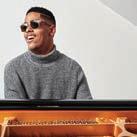

Touch of Red
Freud Playhouse
MAR 11
DakhaBrakha
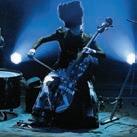
The Theatre at Ace Hotel
MAR 25
Sam Green
32 Sounds
The Theatre at Ace Hotel
APR 29
Perla Batalla & Quetzal
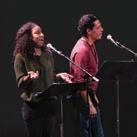
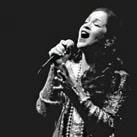
Royce Hall
APR 30
Dream House Quartet
Katia & Marielle Làbeque, Bryce Dessner & David Chalmin

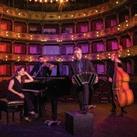
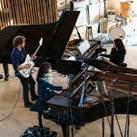
Royce Hall
2023 SPRING PROGRAMS
Tickets on sale January 26
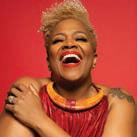
Visit cap.ucla.edu/spring2023
MAY 7
Avery*Sunshine
The Theater at Ace Hotel
MAY 11
Quinteto Astor
Piazzolla

Royce Hall
MAY 12
The Small Glories
Royce Hall Terrace
MAY 21
Matthew Whitaker
The Theater at Ace Hotel
JUN 22
Dan Froot & Company Podcast

Royce Hall
Rehearsal Room
By Harlow Robinson

When Russian composer/pianist Sergei Rachmaninoff (1873–1943) settled in Los Angeles in early 1942, he joined a large community of European musicians and composers seeking refuge under the palm trees and sunshine from the rising dangers of fascism, Communism, anti-Semitism, and violence in their home countries.

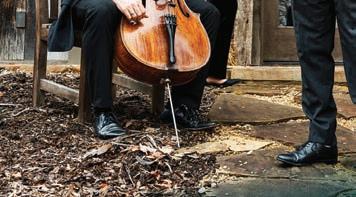
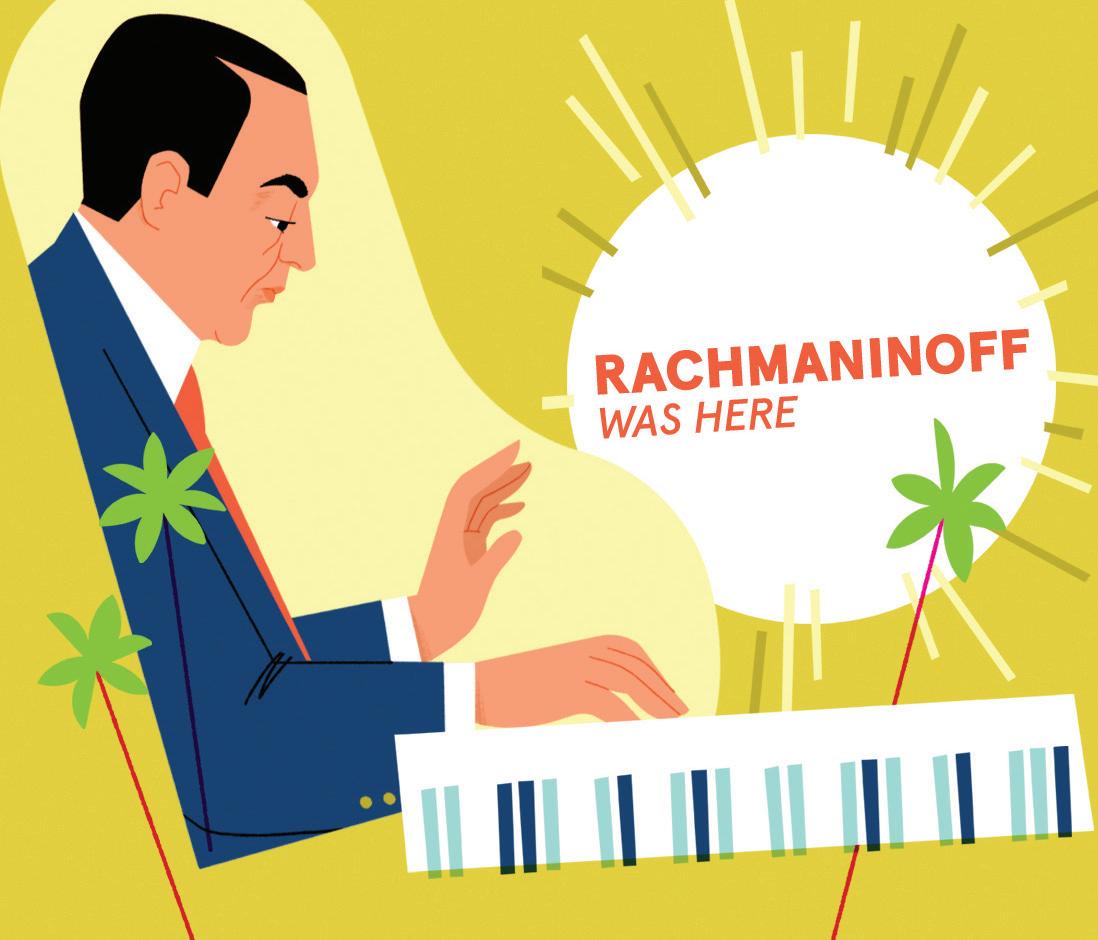
Austrian Arnold Schoenberg (1874–1951), father of the New Viennese School of serial composition, had arrived in 1933 and would remain in LA until his death in 1951. He taught at UCLA from 1936 to 1944; the university’s music building bears his name. Russian Igor Stravinsky (1882–1971) of Firebird and Rite of Spring fame had settled in the City of Angels in 1940 after years of nomadic
existence spent outside Russia. Eventually, Stravinsky and his wife, Vera, took up permanent residence in a trim little house at 1260 North Wetherly Drive in West Hollywood, where he remained for nearly 30 years. “If there ever was a home for Stravinsky, it was the house in West Hollywood,” EsaPekka Salonen, Conductor Laureate of the Los Angeles Philharmonic, once observed.
Many other, less famous, European émigré composers also gravitated to the safety and opportunities (especially in the fast-growing movie business) of Los Angeles in the 1930s and ’40s: Austrian Erich Korngold, Russians Vernon Duke (né Vladimir Dukelsky) and Dimitri Tiomkin, Hungarian Miklós Rózsa, Czech Ernst Krenek. Hundreds of prominent émigré
Continued on page 16

14 PERFORMANCES MAGAZINE FEATURE
WINTER @ THE WALLIS
FEB 2-5
Dahlak Brathwaite: Try/Step/Trip
FEB 12
SUNDAY FUNDAY: Parker Bent, Broadway Babies, Dance Sunday with Debbie Allen & Friends: Flamenco

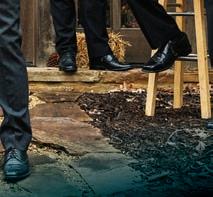

FEB 17-18
Luminario Ballet of Los Angeles

FEB 23
Anthony McGill & The Pacifica Quartet



FEB 25
Santa Cecilia Orchestra

2022/2023
SEASON
GET YOUR TICKETS! TheWallis.org
ANTHONY MCGILL & THE PACIFICA QUARTET
SANTA CECILIA ORCHESTRA LUMINARIO BALLET OF LOS ANGELES
DANCE THEATER FAMILY MUSIC THE WALLIS IS THE PROUD RECIPIENT OF GENEROUS SUPPORT AND RECOGNITION FROM:
SINGLE TICKETS NOW ON SALE!
DAHLAK BRATHWAITE: TRY/STEP/TRIP
musicians also set up shop here, including (to name only a few) violinist Jascha Heifetz (from Lithuania), and pianist Vladimir Horowitz and cellist Igor Piatigorsky, both born in Ukraine.
By the time he settled in LA, Rachmaninoff had been in emigration for nearly 25 years and was in the twilight of his career. His production of new works declined drastically after he fled Bolshevik Russia in 1918, but he had become wealthy and celebrated from his extensive tours as a piano virtuoso. At first, he lived in Europe, but moved to Long Island in 1939 to escape the coming war, then finally to California. At age 69, he was seriously ill, suffering from a variety of ailments: sclerosis, lumbago, neuralgia, high blood pressure, and headaches. He leased a house on Tower Road in

Benedict Canyon in Beverly Hills, complete with swimming pool, garden, sweeping views, and a music room that could accommodate two grand pianos. There he loved to play twopiano works and adaptations with his friend Vladimir Horowitz.
On occasion, the two keyboard titans hosted domestic recitals. Rachmaninoff’s friend Sergei Bertensson attended a particularly memorable one on June 15, 1942, featuring a program of works by Mozart and Rachmaninoff (the Second Suite for two pianos). “After the last note, no one spoke— time seemed to have stopped.

I, for one, forgot that I was living in Hollywood, where the word ‘art’ has a habit of slipping from one’s memory.”
Rachmaninoff and his guests also did lots of talking, especially
about the worsening situation in Europe and its impact on their family and friends. “Over dinner with the Horowitzes and other expatriate friends, the composer would talk about his feelings of guilt that he should be living in such luxury,” Bertensson later recalled. A few months later, Rachmaninoff bought a small house on Elm Drive in Beverly Hills, where he continued to host musical evenings. Around the same time, he was offered the position of music director of the Los Angeles Philharmonic, but turned it down, owing to his precarious health and dislike of the routine of conducting. (The position had been vacant since 1939, when Otto Klemperer departed for health reasons.) Sadly, Rachmaninoff
Continued on page 18
16 PERFORMANCES MAGAZINE
Above: Sergei Rachmaninoff. Right: Program for his 1942 performance with the Los Angeles Philharmonic led by Bruno Walter.
FEATURE
For 50 years, California Institute of the Arts has been a place where creative individuals come together to experiment, practice, teach, and learn as a community of artists. Their impact and influence have transformed the cultural landscape of Los Angeles and beyond.

As we celebrate this milestone anniversary, we look to our artists to challenge what has come before and show us what could be for generations to come.

Celebrating California Institute of the Arts’ 50th Anniversary





O ering undergraduate and graduate degrees in: Art • Critical Studies • Dance • Film/Video • Music • Theater
Top right: Fall 2022 photoshoot for The Sharon Disney Lund School of Dance at CalArts. Photo: Josh Rose.
Bottom right: From The School of Theater’s production of The Glass Mountain
calarts.edu
At left: From a CalArts School of Art Practicum course titled, Waste Not
lived in his new house for only a few months before he died of cancer on March 28, 1943. His funeral was held in the tiny Russian Orthodox Church on Micheltorena Street in Silver Lake, whose incongruous onion domes rise today above the crush of traffic on the 101 Freeway.
When Rachmaninoff moved to Los Angeles, he was much better known in America than Stravinsky—or Schoenberg. In planning the animated musical feature that became Fantasia, Walt Disney at first envisioned Rachmaninoff playing his Second Piano Concerto. “I don’t know anything about music,” Disney is alleged to have told Leopold Stokowski, longtime conductor of the Philadelphia Orchestra, “but I have heard of Rachmaninoff for a long time.” In the end, Rachmaninoff never worked on any Hollywood projects, but his late romantic style was widely imitated in film scores, and his music was used in numerous


films, including Vincente Minelli’s The Story of Three Loves (featuring the Rhapsody on a Theme of Paganini) and David Lean’s Brief Encounter (Second Piano Concerto).
Rachmaninoff’s social circle in Los Angeles consisted mainly of other émigrés, mostly Russian. The Stravinskys lived nearby and received an invitation to dinner. At that historic meeting of two of the greatest Russian composers of all time, the conversation (according to Bertensson) dealt not with important aesthetic questions, however, but rather with nuts-and-bolts matters of the American music business, especially concert bureaus and royalties. “A few days later,” writes Stravinsky’s biographer Stephen Walsh, “Rachmaninoff arrived on his colleague’s doorstep with a huge jar of honey, a product for which Stravinsky had confessed a liking.”
A devout Russian Orthodox believer, Rachmaninoff was known for his generosity
to those in need. When his longtime friend, stage and film actor/director/ pedagogue Michael Chekhov (nephew of playwright Anton Chekhov), who had emigrated to the USA in 1935, was facing financial ruin in New York, Rachmaninoff spared no expense in helping to bring him to Hollywood, where Chekhov found work and stability.
Chekhov was deeply touched by Rachmaninoff’s kindness, extended when the composer was already seriously ill. “I kept waiting for the day when I could personally thank him for his indispensable help,” wrote Chekhov in his memoirs, “but he was quickly slipping away, and I did not have the opportunity to see him. Just a few days before his death, I did manage to send him a short note and a bouquet of red roses. I thanked him in my thoughts when I kissed his cold, beautiful hand at the funeral service in the small Russian church.”
—HARLOW ROBINSON
Rachmaninoff called Beverly Hills home for a brief but important period from 1942 to 1943. The LA Phil Humanities Initiative explores the creative communities of the time in a series of special events.
18 PERFORMANCES MAGAZINE FEATURE
at
Learn more
laphil.com/humanities
The LA Phil Humanities Initiative is generously supported by Linda and David Shaheen.
THE STORY THAT DEFINED A GENERATION. AN UNMISSABLE WORLD PREMIERE.

In Tulsa, Oklahoma, 1967, the hardened hearts and aching souls of Ponyboy Curtis, Johnny Cade and their chosen family of ‘outsiders’ are in a fight for survival and a quest for purpose in a world that may never accept them. A story of the bonds that brothers share and the hopes we all hold on to, this gripping new musical reinvigorates the timeless tale of ‘haves and have nots’, of protecting what’s yours and fighting for what could be.
BEGINS FEB 19
TICKETS WILL SELL OUT! PRODUCTION

SPONSORS

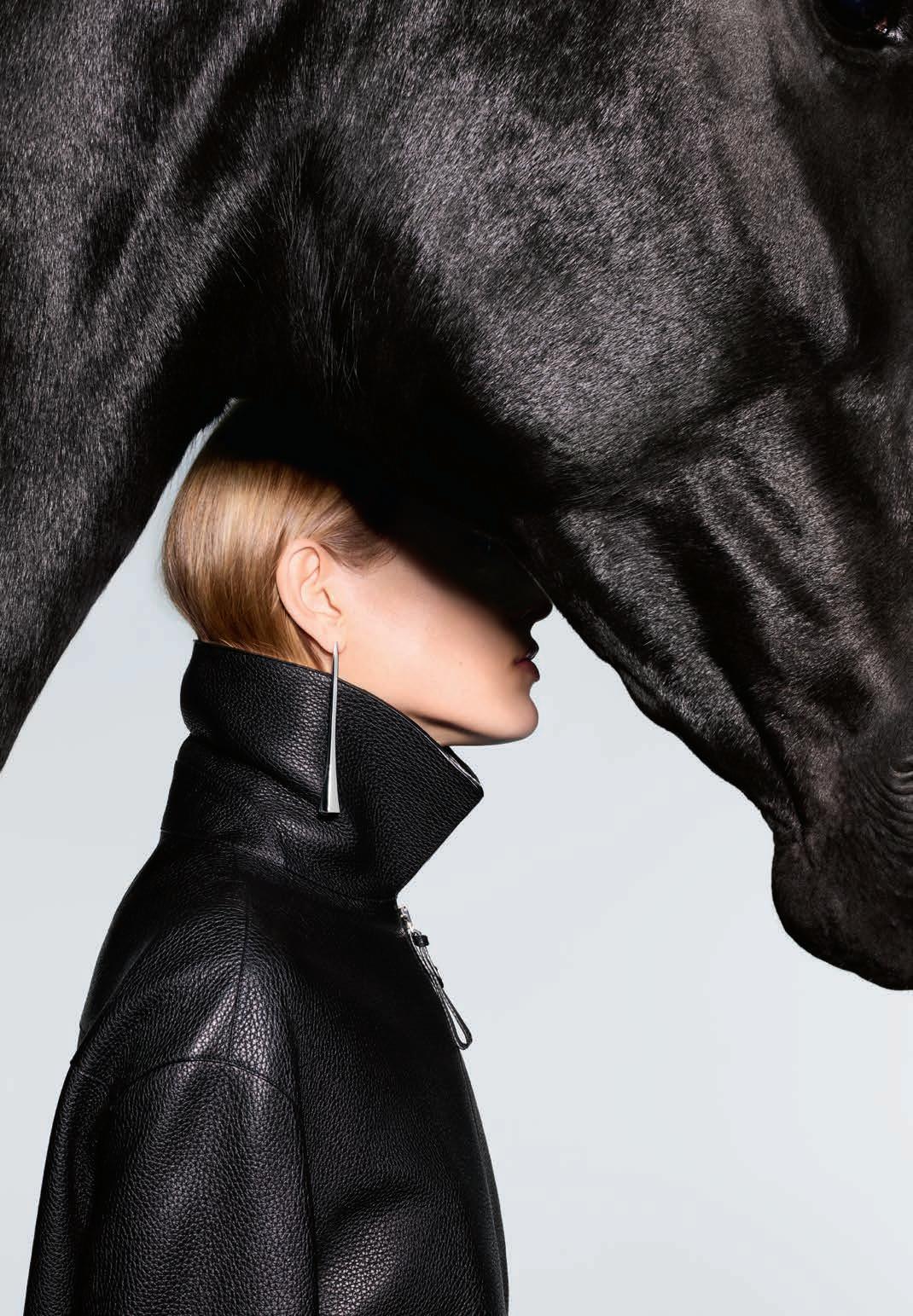
Emanuel Ax
Emanuel Ax, piano
SCHUBERT Piano Sonata in A major, D. 664, Op. posth. 120 (c. 20 minutes)
Allegro moderato
Andante
Allegro
SCHUBERT-LISZT Four Songs (c. 18 minutes)
“Aufenthalt”
“Liebesbotschaft”
“Der Müller und der Bach”
“Horch, horch! Die Lerch”
LISZT Années de pèlerinage, I. Suisse, S. 160 (c. 12 minutes)
6. Vallée d’Obermann
INTERMISSION
SCHUBERT Piano Sonata in B-flat major, D. 960 (c. 40 minutes)
Molto moderato
Andante sostenuto
Scherzo: Allegro vivace con delicatezza—Trio
Allegro ma non troppo
Programs and artists subject to change.
WEDNESDAY
FEBRUARY 1, 2023 8PM
Moritaka Kina is c hief piano technician for the Los Angeles Philharmonic Association.
Media Sponsor: KPCC
PERFORMANCES MAGAZINE P1
COLBURN CELEBRITY RECITAL
AT A GLANCE
Complementary Contrasts
Schubert the introverted poet, Liszt the extroverted showman... Though there are reasons why these stereotypes developed, neither serve their respective artists well, as this intersection of Romantic contrasts reveals. There is brilliant muscular work as well as eloquent soulfulness aplenty in these two Schubert sonatas, some
of which clearly presages the extravagant outbursts of Liszt’s Vallée d’Obermann. And Liszt’s sensitivity to Schubert’s lyricism and textures is as apparent in the moody opening of Vallée d’Obermann as it is in his amplification of Schubert’s songs, where protean virtuosity is bent to expressive lyrical purpose. —John
Henken
SONATA IN A MAJOR, D. 664 (OP. POSTH. 120)
Franz Schubert (1797–1828)
Composed: 1819
When certain concert works are labeled, there is danger that truth in advertising is not entirely present. For example, Schubert’s Symphony in C, the one formerly known as No. 9, always carries with it the subtitle “The Great.” Similarly, the composer’s Piano Sonata in A of 1828 is dubbed a “grand” sonata. These designations, if they are used to describe the length and scope of the works in question, are perfectly valid. But unfortunately they tend to undermine, in the first case, Schubert’s delightful Sixth Symphony, also in C, and in the second case, his equally delightful but earlier Piano Sonata in A. No matter. The pleasures of the A-major Sonata on this program are both great and grand. Probably written in 1819, this work, with but three concise movements, is the
most direct and economical of the Schubert sonatas; it surely is one of the most endearing. The first movement’s main theme, although tailor-made for the keyboard, is another of those countless Schubert melodies that could be set to words. Cannily, however, the composer endowed the melody with a distinctive dotted-note figure that is highly developable, sonata-allegro style. In his characteristic manner, Schubert turns the second sentence of the theme to the minor, a procedure that occurs frequently throughout the movement. A triplet figure distinguishes the airy second theme, and in fact the ascending triplet scale in single notes that leads to the second theme generates the only brilliant passage in the movement, by way of a series of scales in octaves at the beginning of the development. In contrast to this slight virtuosic indulgence, Schubert ends the movement with a six-measure coda that reflects on the main theme with simple, sighing poignance.
The slow movement is a model of concentrated expressiveness. Built on but a single melodic idea appearing at times in uneven phrase lengths, the music unfolds with the miraculous variety of the changes of harmony, rhythm, and accompaniment. At midpoint, a transition phrase has a quasi-ominous ring as repeated drumbeats in the low bass remind us of the composer’s keen orchestral consciousness. The last movement is something of a whirlwind, but a charming whirlwind. There’s a lot of dance here, especially in the second theme’s rhythmic lilt. (Remember that Schubert composed dozens of dances for the piano, many ineffably lovely, some unbelievably banal.) There is also plenty of finely tuned bravura that is neither unmotivated nor excessive. The Sonata’s balances are, in fact, so wonderfully gauged and the materials so appealing, one (certainly this one) is tempted to label this Sonata “The Perfect.” —Orrin Howard
P2 PERFORMANCES MAGAZINE
ABOUT THE PROGRAM
FOUR SONGS
Franz Schubert / Franz Liszt
Composed: 1833-46
As a composer, teacher, and pianist, Franz Liszt developed new methods in his compositions—both imaginative and technical—which left their mark upon his progressive concepts and procedures. He also developed the method of “transformation of themes” as part of his revolution in form, made radical experiments in harmony, and invented the orchestral symphonic poem.
The reputation of Schubert did not extend far beyond his native Vienna, and he was virtually unknown in several key European cities. Liszt attempted to correct the situation by transcribing 56 songs of Schubert for piano solo. These transcriptions are at times simple replicas of the melodic line written for voice, yet they can also take the form of free paraphrase. It is remarkable that the vocal line has been retained in the midst of so much pianistic virtuosity.
The transcriptions were begun in 1833, five years after the death of Schubert, and the last one was completed in 1846. Liszt’s love of Schubert is evident in “Der Müller und der Bach” (“The Miller and the Brook”), taken from Die schöne Müllerin. This beautiful melody is sung twice in the original song; here Liszt allows us to hear it three times. The second verse particularly has some of his most exquisite piano writing,
the bell-like melody singing elegantly above pedaled staccatos and arpeggios.
“Aufenthalt” (“Resting Place”) is the fifth song from Schubert’s Schwanengesang, D. 957. This sweet melody in E minor unfolds to a turbulent and moving line, modulating through unexpected and complex harmonic territory.
Like “Aufenthalt,” “Liebesbotschaft” comes from Schubert’s Schwanengesang cycle, composed in August 1828. Liszt keeps Schubert’s brook continually rippling, while moving the melody around in the texture, demanding extraordinary virtuosity of touch to keep it singing.
“Horch, horch! Die Lerch” is one of four songs Schubert wrote on lyrics by Shakespeare (in German translations) in July 1826. Liszt’s affectionate treatment greatly expands the range and technique required without fundamentally altering Schubert’s characterization.
Franz Liszt was himself one of the greatest virtuosi on the pianoforte; he fully understood the instrument’s potential and perceived its capabilities in full, which he never failed to exhaust in his compositions. In the works of Liszt, we find an example of a composer writing almost exclusively for the piano. The smaller-scaled piano works, such as his numerous etudes and assorted short pieces with poetic names, are among the most significant.
—Ileen Zovluck
© 2000 Columbia Artists Management, Inc.
ANNÉES DE PÈLERINAGE I: “VALLÉE D’OBERMANN”
Franz Liszt (1811–1886)
Composed: 1865
A student of Carl Czerny’s, Franz Liszt was a composer who never had a problem identifying extramusical ideas behind his compositions. A child prodigy and a leading figure in the Romantic cult of the virtuoso, Liszt consciously and successfully adopted the model of violinist Nicolò Paganini’s stagecraft, the black costumes and mannered air of mystery. The term “recital” was coined for his solo appearances, and he toured throughout Europe almost continually from 1839 to 1847.
For those performances, he composed, arranged, and transcribed a huge body of work, much of it appearing in several different versions. Exploiting the new capabilities of the rapidly developing piano, Liszt created a new playing style full of technical dazzle and color over the whole range of the instrument. He firmly believed in the power of music to express extramusical subjects, the “intrinsic and poetic meanings of things,” as he wrote in the preface to his early collection of character pieces, Album d'un voyageur. Literature, painting, and sculpture, scenes from nature, history, and legend, all inspired Liszt to compositions great and small. His goal was to express his response to the subject as much as to depict the thing itself in sound. He gathered two volumes of such pieces from his touring years under the title Années de pèlerinage (Years of Pilgrimage).
“Vallée d’Obermann” (Obermann’s Valley) was inspired by Étienne Pivert de Senancour’s novel of the same title and first appeared in Part 1 of Album d’un voyageur, subtitled “Impressions et Poesies.” The piece was extensively rewritten before being included as No. 6 in Première année: Suisse (First Year: Switzerland), S. 160, published in 1855. —Adapted from program notes by John Henken
PERFORMANCES MAGAZINE P3 ABOUT THE PROGRAM
SONATA IN B-FLAT MAJOR, D. 960
Franz Schubert
Composed: 1828
The great B-flat Sonata, written only weeks before his death in November 1828, closed forever Schubert’s catalog of solo piano works. What a final-year legacy: three grand piano sonatas, three smallish piano pieces, and the superb String Quintet in C. Even taking into consideration all the incalculable strokes of genius existing in the Schubert canon, the B-flat Sonata must be considered extraordinary. Like the first two of the last three sonatas, it is an expansive composition, each of its four movements built on a large scale. Yet, unlike many another Schubert masterwork “of heavenly length,” there is not a wasted note here. From the exalted opening measures to the exuberant final ones, pure inspiration never faltered; substance and craft are married in a miraculous union.
This well-nigh-perfect sonata begins with a theme of other-
worldly serenity, at the end of the first statement of which a trill in the lower depths of the bass rumbles quietly but ominously on two notes foreign to the key — G-flat and A-flat. After the main theme is repeated, another low trill takes us directly into the unrelated key of G-flat, where now the theme smiles with almost heartbreaking tenderness. This kind of expressiveness, intensified by sudden modulations and tonal ambiguity, is one of the most conspicuous and lifelong marks of the Schubert genius; in the mature works the effect can be overwhelming. One could easily get caught up in a detailed account of this movement’s wonders, but suffice it to mention only the development section. It starts with the main theme in tragic C-sharp minor in a marvelously lean fabric, and then travels a gripping course, ending in D minor just before the exquisitely poised recapitulation, heralded by that now familiar low trill.
For the slow movement, in C-sharp minor, Schubert takes us to a remote place of
austere and poignant calm, the rhythmic regularity acting as hypnotic momentum leading to an extended consoling section in A major. The main theme returns with elaborate ornamentation, and the movement ends with an “amen” benediction in C-sharp major.
The scene changes completely with the arrival of the third-movement Scherzo. Here is bounding, stylized, spiritualized joy in threequarter time, breezing along with only a brief interruption by a solemn Trio in B-flat minor.
C-minor (!) makes a surprise appearance at the beginning of the last movement, but it is quickly ejected and the movement proceeds on a buoyant and humorous B-flatmajor course. The opening seriousness is a recurring element in the proceedings, and there is a forceful section in F minor. But always the clouds part, and finally there is a very fast and exhilarating passage that closes the Schubert piano sonata ledger with brilliant, breathtaking finality. —Orrin Howard
P4 PERFORMANCES MAGAZINE ABOUT THE PROGRAM
EMANUEL AX
Born to Polish parents in what is today Lviv, Ukraine, Emanuel Ax moved to Winnipeg, Canada, with his family when he was a young boy. Ax made his New York debut in the Young Concert Artists Series, and in 1974 won the first Arthur Rubinstein International Piano Competition in Tel Aviv. In 1975 he won the Michaels Award of Young Concert Artists, followed four years later by the Avery Fisher Prize.
In the fall of 2021, he resumed a post-COVID touring schedule that included concerts with the Colorado, Pacific, Cincinnati,
and Houston symphonies as well as the Minnesota, Philadelphia, and Cleveland orchestras and the Los Angeles and New York philharmonics. 2022/23 will include a tour with Itzhak Perlman “and Friends” and a continuation of the Beethoven for Three touring and recording project with partners Leonidas Kavakos and Yo-Yo Ma.
In recital he can be heard in Palm Beach, Los Angeles, St. Louis, Chicago, Washington, D.C., Houston, Las Vegas, and New York and with orchestras in Atlanta, Detroit, Boston, San Francisco, San Diego, New York, Naples (FL), Portland (OR), Toronto, Philadelphia, Pittsburgh, and Cleveland. Touring in Europe in the fall and spring includes concerts in Germany, the U.K., Switzerland, and France.
Ax has been a Sony Classical exclusive recording artist since 1987. Following the success of the Brahms trios with Kavakos and Ma, the trio launched an ambitious, multiyear project to record all of Beethoven’s
trios and symphonies arranged for trio. The first two albums were released in 2022. Ax has received Grammy® Awards for the second and third volumes of his cycle of Haydn’s piano sonatas. He has also made a series of Grammy-winning recordings of the Beethoven and Brahms cello sonatas with Yo-Yo Ma. In the 2004/05 season Ax contributed to an International Emmy® Awardwinning BBC documentary commemorating the Holocaust, which aired on the 60th anniversary of the liberation of Auschwitz. In 2013, Ax’s recording Variations received the ECHO Klassik Award for Solo Recording of the Year (19th Century Music/Piano).
Ax is a Fellow of the American Academy of Arts and Sciences and holds honorary doctorates from Skidmore College, New England Conservatory of Music, Yale University, and Columbia University.
For more information about Ax’s career, please visit EmanuelAx.com

PERFORMANCES MAGAZINE P5 ABOUT THE ARTIST
Ray Chen Plays Mendelssohn
Los Angeles Philharmonic
Matthias Pintscher, conductor
Ray Chen, violin
FRIDAY
FEBRUARY 3, 2023 8PM
SATURDAY
FEBRUARY 4 8PM
Olga NEUWIRTH Masaot/Clocks without Hands (c. 20 minutes)
except friday
MENDELSSOHN Violin Concerto in E minor, Op. 64 (c. 28 minutes)
Allegro molto appassionato Andante
Allegretto non troppo—Allegro molto vivace
Ray Chen
INTERMISSION
except friday
BRAHMS, Piano Quartet in G minor, Op. 25 (c. 45 minutes)
Orch. SCHOENBERG Allegro
Intermezzo: Allegro ma non troppo—Trio: Animato
Andante con moto
Rondo alla Zingarese: Presto
Official and exclusive timepiece of the Los Angeles Philharmonic at Walt Disney Concert Hall
Friday’s performance is generously supported by Pasadena Showcase House for the Arts
Classical Partner (2/03): KUSC
Programs and artists subject to change.
P6 PERFORMANCES MAGAZINE LOS ANGELES PHILHARMONIC
AT A GLANCE
Variety and Variation
In one sense, variation is just variety with a constant, and this program has plenty of both. “Developing variation” was one aspect of Brahms’ craft that Schoenberg greatly admired, and the Brahms piano quartet that he orchestrated here in Los Angeles is a classic locus of that technique, brilliantly applied. In linking all three movements of his Violin Concerto and shifting the
position—and effect—of the cadenza, Mendelssohn created something like “developing structure,” or meta-variation, which was highly influential. The recombination of thematic elements in Olga Neuwirth’s rowdy Masaot/Clocks without Hands drives a sort of contextual variation, and its Eastern European nods make a framing connection with Brahms’ “gypsy” finale. —John Henken
MASAOT / CLOCKS WITHOUT HANDS
Olga Neuwirth (b. 1968)
Composed: 2014
Orchestration: 3 flutes (1st=piccolo), 3 oboes, 3 clarinets (1st=E-flat clarinet, 3rd=bass clarinet), 2 bassoons, contrabassoon, 3 horns, 3 trumpets, 2 trombones, bass trombone, tuba, percussion (tubular bells, 3 gongs, 10 cymbals, 3 tom-toms, 3 suspended cymbals, 6 cowbells, 2 woodblocks, 2 toy ratchets, 3 metronomes, metal guiro with metal brush, Japanese bells, glockenspiel, small snare drum, large drum, 2 triangles, jingle bundle, temple bells, tam-tam, vibraphone), celesta, and strings
First LA Phil performance.
In 2010, the Vienna Philharmonic asked Olga Neuwirth to write an orchestral work for the 100th anniversary of Gustav Mahler’s death. Since she had to finish two operas by the end of 2011, she had to decline. When the commission was postponed until 2015, she decided that she did not want to drop the idea she had had while reflecting on Mahler in 2010.
Neuwirth made the multiethnic origins of her refugee grandfather the inspirational source of this
orchestral work. It’s a musical river journey. And the Danube, the massive waterway on which her grandfather grew up, is the quiet protagonist. It connects Neuwirth’s diverse and abruptly changing acoustic landscapes with the tableaux of citations into one musical tale. Along this waterway, the plot develops, so to speak, through her grandfather’s different cultures like a series of musical postcards. Masaot/ Clocks combines fragments of melodies from very different places and experiences from her grandfather’s life.
It opens with a tutti chord in triple forte that thrusts the iridescent initial sounds of the strings upon us. Soon the first snippets from her grandfather’s Eastern European Jewish song heritage can be heard—a poetic reflection on the search for identity and fading memories. They are the strands of tradition on a journey (in Hebrew masa’ot also means history and story, figuratively as well) through a broad, not merely musical, multiple homeland (Mehrheimat).
The composition evolves within a kind of grid in which song fragments resound and are recombined. Simultaneously, there is a “musical object,”
based on metronome beats, that makes time not only audible but palpable. Just like with a revolving carousel, these metronome beats appear and disappear. Through this ticking of the metronome, through time’s externally regulated pulsation, time itself becomes a subjective, timeless realm of the subconscious. Ultimately, time appears to dissolve into … clocks without hands.
Neuwirth’s grandfather was born in a seaside town with a turbulent history, but grew up in the Danube River Basin, on the border between Croatia and Hungary. The many different (musical) stories are carried to sea by a river; in her case, the Danube. Neuwirth wanted to look back at the world of Kakania from the perspective of her present life. In the search for identity and origin—because for her, Heimat (homeland, native country) is something nebulous. In Masaot/Clocks without Hands, she responds to the idea of someone having several homelands, namely, by composing music that is both native and foreign—with familiar and unfamiliar sounds beyond any form of nostalgia. —Adapted from program notes by Olga
Neuwirth
PERFORMANCES MAGAZINE P7 ABOUT THE PROGRAM
VIOLIN CONCERTO IN E MINOR, OP. 64 Felix Mendelssohn (1809–1847)
Composed: 1844
Orchestration: 2 flutes, 2 oboes, 2 clarinets, 2 bassoons, 2 horns, 2 trumpets, timpani, strings, and solo violin
First LA Phil performance: January 2, 1920, Walter Henry Rothwell conducting, with Sylvain Noack, soloist
Mendelssohn participated as early as the age of nine in musical performances in his family’s Berlin home and wrote a charming concerto for violin and string orchestra in his 13th year. That work, in D minor, was not written for his own performance, but rather for his—only slightly older—teacher, Eduard Rietz, later to become a founder of the Berlin Philharmonic Society and concertmaster for Mendelssohn’s epochal 1829 revival of the Bach St. Matthew Passion
If the D-minor Concerto is the handiwork of a precocious youth, betraying its indebtedness to earlier models, the present work,
the Concerto in E minor, is not only the creation of a mature master, but also sui generis: brimming with lyric inspiration and structural inventiveness. It was written for another violinist friend of the composer, Ferdinand David, whom Mendelssohn had appointed his concertmaster when he became conductor of the Leipzig Gewandhaus Orchestra in 1835.
“I would like to write a concerto for you,” Mendelssohn wrote to David in 1838, “one with an E-minor theme that keeps running through my head, preventing me from thinking about anything else.” The work was begun shortly thereafter, but completion was delayed by other projects and by Mendelssohn’s frequent bouts of ill health. He never abandoned the score for long, however, and at intervals showed sketches to David, soliciting practical advice from its eventual dedicatee every step of the way.
The composer was particularly interested in David’s opinion regarding the cadenza: not only whether it would be too difficult to play, but also whether its unusual positioning
would prove detrimental to the whole. The cadenza, as it turns out, is the work’s pivotal episode and one of the composer’s great inspirations—one that would separate it from past concertos and set a course for composers of the future.
In earlier concertos, the cadenza constituted an often unwelcome break in continuity at the end of the first movement, the orchestra banished to allow the soloist opportunity for—more often than not, mindless—solo display. In his two earlier major concertos, for piano, Mendelssohn omitted cadenzas altogether, solving the problem by avoiding it.
Here, instead of placing the cadenza at the end of the first movement, Mendelssohn introduces it just beyond midpoint, allowing it to serve an integral function, growing out of the development and enriching everything to come in a score that is seamless, literally and figuratively: the three movements are not only played without a break, but might be regarded as variations on a single, evolving thought. —Herbert
Glass
P8 PERFORMANCES MAGAZINE ABOUT THE PROGRAM
PIANO QUARTET IN G MINOR, OP. 25
Johannes Brahms (1833–1897), orch. Arnold Schoenberg
Composed: 1861; 1937
Orchestration: 3 flutes (3rd= piccolo), 3 oboes (3rd = English horn), E-flat clarinet, 2 clarinets (2nd = bass clarinet), 3 bassoons (3rd = contrabassoon), 4 horns, 3 trumpets, 3 trombones, tuba, timpani, percussion (bass drum, cymbals, glockenspiel, snare drum, tambourine, triangle, and xylophone), and strings
First LA Phil performance: May 7, 1938, Otto Klemperer conducting
In a series of lectures from 1947 entitled “Brahms the Progressive,” Arnold Schoenberg (1874-1951) relates an instance of Brahms dealing with one of his fans. “Contemporaries found various ways to annoy him,” writes Schoenberg of Brahms. “A musician or a music lover might intend to display his own great understanding, good judgment of music, and acquaintance with ‘some’ of Brahms’ music. Hence, he dared say, he had observed that Brahms’ First Piano Sonata was very similar to Beethoven’s ‘Hammerklavier’ Sonata. No wonder that Brahms, in his straightforward manner, spoke out: ‘Every jackass notices that!’ ”
You don’t have to know about either composer or his works to understand why Brahms might sour at such a comment. He spent much of his life having his place in the history of German music found for him by others. His First Symphony was called “Beethoven’s Tenth.”
To Wagner’s detractors, Brahms represented everything that was good about German music and to Wagner’s fans, everything that was bad about it. It’s easy to point out the commonalities between Brahms and the generations that preceded him; finding what makes him a unique, progressive force in German music takes a bit more effort, and that was the point of Schoenberg’s lectures, and, in a sense, of his orchestration of one of Brahms’ chamber masterpieces.
Brahms’ Quartet had its premiere in Hamburg in 1861; Schoenberg orchestrated the work in 1937, and it was premiered in 1938 by the Los Angeles Philharmonic under the baton of then-Music Director Otto Klemperer at one of the orchestra’s Saturday Evening Concerts. Schoenberg explained the rationale behind his orchestration in a letter to Alfred Frankenstein, the music critic of the San Francisco Chronicle, almost a year after the premiere:
1. I like the piece
2. It is seldom played
3. It is always very badly played, because the better the pianist, the louder he plays, and you hear nothing from the strings. I wanted once to hear everything, and this I achieved.
Schoenberg liked the piece as a great example of “developing variation,” a Brahms innovation he discussed in his talks on “Brahms the Progressive.” The idea is really quite simple: Brahms would subject his thematic material to variations and transformations as soon as he introduced
them, rather than waiting until the development section of a sonata-form movement. This allowed him to create larger structures from these constantly developing materials.
An example comes right at the opening of the first movement. Brahms introduces a four-note motive that becomes the basis of the entire movement, undergoing numerous transformations throughout. The secondmovement intermezzo is the type of movement Brahms would fine-tune over the course of his career as a replacement for the traditional scherzo; it moves at a relaxed pace and exudes a warm elegance. The Andante con moto is a slow movement entirely typical of Brahms, radiant and serene. Schoenberg’s orchestral setting opens with a solo violin, a texture favored by Brahms in some of the slow movements of his symphonies. In fact, all three movements, aside from some cymbal crashes during the climactic pages of the first, could have been orchestrated by Brahms, although Schoenberg does favor some instrumental contributions that would have been a stretch in 1861. The finale, a “gypsy rondo,” is exhilarating and fiery, permeated by rhythm and given a suitably exciting treatment by Schoenberg, who really lets loose with a percussion section that, until now, he has held in check. When Klemperer premiered the score, he thought the orchestration a great success. He declared:
“You can’t even hear the original quartet, so beautiful is the arrangement.” —John
Mangum
PERFORMANCES MAGAZINE P9 ABOUT THE PROGRAM
MATTHIAS PINTSCHER

The 2022/23 season is Matthias Pintscher’s final season as Music Director of the Ensemble Intercontemporain (EIC), the world’s foremost contemporary music ensemble, founded in 1980 by Pierre Boulez. In his decadelong artistic leadership of the EIC, Pintscher continued and expanded the cultivation of new works by emerging composers of the 21st century, alongside performances of iconic works by the pillars of the avant-garde of the 20th century.
As conductor, Pintscher enjoys and maintains relationships with several of the world’s most distinguished orchestras,
among them the Bavarian Radio Symphony Orchestra (BRSO), the Los Angeles Philharmonic, Amsterdam’s Royal Concertgebouw Orchestra, and the BBC Scottish Symphony Orchestra. He is also Creative Partner for the Cincinnati Symphony. As guest conductor in Europe, he makes debut appearances this season with the Wiener Symphoniker and Gürzenich Orchester of Cologne and returns to the Royal Concertgebouw, BRSO, BBC Scottish Symphony Orchestra, Barcelona Symphony, and Berlin’s Boulez Ensemble. In North America, he will make prominent debuts with the Philadelphia Orchestra and Kansas City Symphony, in addition to regular visits to the Cincinnati Symphony and repeat guest engagements with the Detroit Symphony, Baltimore Symphony, Los Angeles Philharmonic, and New World Symphony. Pintscher has also conducted several opera productions for the Berliner Staatsoper (Beat Furrer’s Violetter Schnee, Wagner’s Lohengrin), Wiener Staatsoper (Olga Neuwirth’s
Orlando), and the Théâtre du Châtelet in Paris. He returns to the Berliner Staatsoper in 2023 for Die Fliegende Holländer.
Pintscher is well known as a composer, and his works appear frequently on the programs of major symphony orchestras throughout the world. In August 2021, he was the focus of the Suntory Hall Summer Festival—a weeklong celebration of his works with the Tokyo Symphony Orchestra as well as a residency by the EIC with symphonic and chamber music performances. His third violin concerto, Assonanza, written for Leila Josefowicz, premiered in January 2022 with the Cincinnati Symphony. Another 2021/22 world premiere was neharot, a co-commission of Suntory Hall, Orchestre Philharmonique de Radio France, Orchestre de la Suisse Romande, the Los Angeles Philharmonic, and Staatskapelle Dresden, where he was named Capell-Compositeur. In the 2016/17 season, he was the inaugural composer-in-residence of the Elbphilharmonie Hamburg, and from 2014 to 2017, he was artist-in-residence at the Danish National Symphony Orchestra.
P10 PERFORMANCES MAGAZINE ABOUT THE ARTISTS
RAY CHEN
Ray Chen is a violinist who redefines what it is to be a classical musician in the 21st century. With a media presence that enhances and inspires the classical audience, reaching out to millions through his unprecedented online following, Ray Chen conveys his remarkable musicianship to a global audience that is reflected in his engagements with the foremost orchestras and concert halls around the world.
Initially coming to attention via the Yehudi Menuhin (2008) and Queen Elizabeth (2009) competitions, of which he was First Prize winner, Ray has built a profile in Europe, Asia, and the U.S. as well as his native Australia, both live and on disc. Signed in 2017 to Decca Classics, he recorded the first album of this partnership with the London Philharmonic in the summer of that year, as a followup to his three previous critically acclaimed albums on Sony, the
first of which (Virtuoso) received an ECHO Klassik Award. Ray has been described as “one to watch” by The Strad and Gramophone magazines, and his profile has grown to encompass his being featured in the Forbes list of 30 most influential Asians under 30, appearing in the online TV series Mozart in the Jungle, a multiyear partnership with Giorgio Armani (who designed the cover of the Mozart album he recorded with Christoph Eschenbach), and performing at major media events such as France’s Bastille Day (for an audience of 800,000), the Nobel Prize Concert in Stockholm (telecast across Europe), and the BBC Proms.
He has appeared with the London Philharmonic Orchestra, National Symphony Orchestra, Leipzig Gewandhausorchester, Munich Philharmonic, Filarmonica della Scala, Orchestra Nazionale della Santa Cecilia, and Los Angeles Philharmonic, and his recent and upcoming debuts include the SWR Symphony, San Francisco Symphony, Pittsburgh Symphony, Berlin Radio Symphony, and Bavarian Radio Chamber Orchestra. He works with conductors such as Riccardo Chailly, Vladimir Jurowski, Sakari Oramo, Manfred Honeck, Daniele Gatti, Kirill Petrenko, Krzysztof Urbański, Juraj Valčuha, and many others. From 2012 to 2015, he was artist-in-residence at the Dortmund Konzerthaus.
His presence on social media makes Ray Chen a pioneer in an artist’s interaction with his audience, utilizing the new opportunities of modern technology. His appearances and interactions with music students and musicians are instantly disseminated to a new public in a contemporary and relatable way. He is the first musician to be invited to write a lifestyle blog for the largest Italian publishing house, RCS Rizzoli (Corriere della Sera, Gazzetta dello Sport, Max). He has been featured in Vogue magazine and is currently releasing his own design of violin cases for the industry manufacturer GEWA. His commitment to music education is paramount and inspires the younger generation of music students with his series of self-produced videos combining comedy and music. Through his online promotions, his appearances regularly sell out and draw an entirely new demographic to the concert hall.

Born in Taiwan and raised in Australia, at age 15 Ray was accepted to the Curtis Institute of Music, where he studied with Aaron Rosand and was supported by Young Concert Artists. He plays the 1715 “Joachim” Stradivarius violin on loan from the Nippon Music Foundation. This instrument was once owned by the famed Hungarian violinist Joseph Joachim (1831-1907).
camimusic.com/ray-chen
PERFORMANCES MAGAZINE P11 ABOUT THE ARTISTS
LA Phil New Music Group with Paolo Bortolameolli
LA Phil New Music Group
Paolo Bortolameolli, conductor
Courtney Bryan, piano
Nathan Cole, violin
Akiko Tarumoto, violin
Teng Li, viola
Jonathan Karoly, cello
Carolina HEREDIA Ausencias/Ausências/Absences (c. 17 minutes)
I. Violeta
II. Alfonsina
III. Ana C.
Nathan Cole, violin I
Akiko Tarumoto, violin II
Teng Li, viola
Jonathan Karoly, cello
Erika VEGA No oyes ladrar a los perros (c. 13 minutes) (world premiere, LA Phil commission with generous support from the Deborah Borda Women in the Arts Initiative)
INTERMISSION
Katherine BALCH all around the sea blazed gold (c. 13 minutes) (world premiere, LA Phil commission)
Courtney BRYAN Piano Concerto, House of Pianos (c. 22 minutes) (world premiere, LA Phil commission with generous support from the MaddocksBrown Fund for New Music)
I. rent party
II. jam session
III. homecoming
IV. sanctuary
V. praise house
Courtney Bryan, piano
Programs and artists subject to change.
TUESDAY
FEBRUARY 7, 2023 8PM
Moritaka Kina is c hief piano technician for the Los Angeles Philharmonic Association.
P12 PERFORMANCES MAGAZINE GREEN UMBRELLA
AT A GLANCE
At Play in Fields of Perception
More than just gender and generation unite this wide-ranging yet also tightly complementary program of new music by young female composers. There is a strong line of literary reference and inspiration, appreciation for vernacular music, and an interest in
memory and dream-world reflection. These aspects may be more apparent in some of these pieces than others, but all share a joy in creative sonority and the act of performance, as well as a sense of style as personal and particular expression rather than dogma. —John Henken
AUSENCIAS/AUSÊNCIAS/ ABSENCES
Carolina Heredia
Composed: 2016
Orchestration: fixed media and strings
First LA Phil performance.
Carolina Heredia is an Argentinian/LA-based acoustic and electronic music composer specializing in interdisciplinary collaboration and intermedia art. Her works have been commissioned and performed in the Americas and Europe by esteemed musicians and ensembles, including the JACK Quartet, Alarm Will Sound, clarinetists Alex Fiterstein and Derek Bermel, Tesla Quartet, and the Duo Cortona. Carolina’s 2015 Fromm Music Foundation Commission supported the creation of her string quartet Ausencias/ Ausências/Absences. This work received several recognitions, including the 2018 John Corigliano Grand Prize and the 2019 Lake George Music Composition Competition. She was later awarded a one-year fellowship at the University of Michigan Institute of Humanities to expand the string quartet into a longer, intermedia work in collaboration with interactive
engineer Carlos García and choreographer Sandra Torijano.
In 2021, she was awarded a Barlow Endowment Commission to compose a new piece for the NYbased Duo Axis, which premiered in 2022. Future premieres include a composition for SATB choir and chamber ensemble with text by LA-based writer Myriam Gurba commissioned by Sphinx Foundation’s Exigence Vocal Ensemble Choir, conducted by Eugene Rogers. Carolina’s music has been featured at Chamber Music OC, SONIC Festival NYC, Cortona Sessions, Bowdoin Festival, Lake George Music Festival, Aspen Music Festival, Crested Butte Music Festival, SEAMUS, Strange Beautiful Music Festival, among others in the United States and abroad.
Carolina holds Master’s and Doctorate degrees in Music Composition from the University of Michigan. Her mentors include Michael Daugherty, Evan Chambers, Erik Santos, and Kristin Kuster. In 2017, she was appointed as a Postdoctoral Fellow at the University of Missouri School of Music, where she later held the position of Assistant Professor in Music Composition and Assistant/Associate Director of the Mizzou New Music Initiative until 2022. She currently works as a freelance composer and the Director of Artist Support for the American Composers Forum.
“I believe generating empathy through art can be a strong mechanism to develop our understanding of one another. As a path to understanding the broad spectrum of the human experience, exercising empathy can give us a more accurate discernment of our limitations and our place in the infinite universe of perceptions and interpretations. In this work, I explore the concept of death as an intrinsic part of that experience and as an exercise of empathy and compassion for the suffering of others. Furthermore, a practice of relinquishment and detachment as we face the reality of our finite existence and reevaluate the meaning and value of all the things, relationships, and the power of decision we have in our hands daily throughout our lives. I imagine time expanding in all directions then; I feel connected to all the things and people, regardless of how distant we may have seen. The full version of Ausencias/Ausências/ Absences is 30 minute long and written for string quartet, fixed media electronics, dance, and interactive video. It also exists in an abridged version (17 minute), with different combinations of the extra-musical media. The artistic impetus of this work was taken from the last writings of three South-American poets who
PERFORMANCES MAGAZINE P13
ABOUT THE PROGRAM
took their own lives: Violeta Parra (1917–1967) of Chile, Alfonsina Storni (1892–1938) of Argentina, and Ana Cristina Cesar (1952–1983) of Brazil. The three main movements of the piece each focus on one poet and are inspired by the song “Gracias a la vida” (1966) by Parra, and the poems “Me voy a dormir” (1938) by Storni and “Samba canção” (1982) by Cesar.
The audio and video portions of the work include images and recordings taken during my research trips to Chile, Brazil, and Argentina in 2015, including the cuatro venezolano (small guitar with four strings) that belonged to Violeta Parra. In the intermedia version of the work, the dance floor is illuminated by images projected from two overhead projectors.
The full work, with dance, was premiered on March 24, 2017, at the Duderstadt Video Studio at the University of Michigan. The original musiconly version was premiered by JACK Quartet in March 2016, commissioned by the Fromm Music Foundation at Harvard University.” —Carolina Heredia
NO OYES LADRAR A LOS PERROS
Erika Vega
Composed: 2021–22
Orchestration: flute (=piccolo), oboe, clarinet (=bass clarinet), bassoon, horn, trumpet, trombone, percussion (1: vibraphone, glockenspiel, bass drum, temple blocks, 2 tom-toms;
2: tam-tam, crotales, chimes, wood blocks, 2 bongos, guiro), harp, prepared piano, organ, and strings
First LA Phil performance (world premiere).
Mexican composer Erika Vega has received several grants and prizes including the Eighth International Jurgenson Competition for Young Composers at the Moscow Tchaikovsky Conservatory (Russia), the 2016 Bludenzer Tage zeitgemäßer Music Workshop/Competition (Austria), the TACTUS 2017 Young Composers Forum (Belgium), the Los Angeles Philharmonic’s 2017 National Composers Intensive (USA), the Danish Arts Foundation (Denmark), the Fondation Royaumont (France), the Henfrey Prize for Composition 2019 and 2021 at the University of Oxford, and the Fellowship for young artists from the National Fund for Culture and Arts 2020 (Mexico). She has participated at the ManiFeste academy at IRCAM (2018-2019) and Prototype VI at Royaumont (20182019), writing music for dance, a collaborative relationship between composer and choreographer. Recent commissions include works written
for ELISION ensemble, The Curious Chamber Players, Frederik Munk Larsen, CEPROMUSIC ensemble, Sarah Maria Sun, Philippe Graffin, Katharina Gross, ALEPH Guitar Quartet, Sigma Project, and the Los Angeles Philharmonic among others.
Erika is currently a member of the National System of Art Creators (Mexico) and a PhD candidate in Composition at the University of Oxford, where she has been awarded the prestigious Clarendon fund. In her latest works, she has been exploring the relationship between music and poetry, proposing some musico-linguistic analogies that arise from a study of phonology, syntax and semantics, interacting and exchanging techniques and essential structural qualities.
“No oyes ladrar a los perros is composed after the homonymous tale by the Mexican writer Juan Rulfo, precursor of Magic Realism. The musical work evokes the notion of time and space found in Rulfo’s writings. In musical terms, analogous phenomena can be heard, perception opens up and the auditor is invited to cross the threshold into a dreamlike atmosphere with strong visual sense. The role of memory and perception is fundamental in the development of the non-lineal musical narrative. The literary manifests itself in the way time is perceived unravelling alternative perspectives. The harmonic construction is defined by the organ, and the ensemble is articulated in a spectral cloud.” —Erika Vega
P14 PERFORMANCES MAGAZINE ABOUT THE PROGRAM
ALL AROUND THE SEA BLAZED GOLD
Katherine Balch
Composed: 2022
Orchestration: flute (=piccolo), oboe, clarinet (=bass clarinet), bassoon (=contrabassoon), horn, trumpet, 2 trombones (2nd=bass trombone), percussion (1: vibraphone, rainstick, large tom-tom, large suspended cymbal, ocean drum; 2: xylophone, glockenspiel, crotales, medium suspended cymbal, ocean drum, snare drum, bass drum, tam-tam, coins, glass mason jar, guiro, small triangle), prepared piano, and strings
First LA Phil performance (world premiere).
Described as “some kind of musical Thomas Edison–you can just hear her tinkering around in her workshop, putting together new sounds and textural ideas” (San Francisco Chronicle) , composer Katherine Balch is interested in the intimacy of quotidian objects, found sounds, and natural processes. A collector of aural delights, field recordings are often at the heart of her work, which ranges from acoustic to mixed media and installation.
A recipient of the 2020/21 Rome Prize, Balch’s work has been commissioned and performed by leading ensembles and presenting organizations including the Los Angeles Philharmonic, the London Sinfonietta, Tanglewood, Suntory Summer Arts (Japan), Huddersfield Contemporary Music Festival (U.K.) and the symphony orchestras of Tokyo, Darmstadt, Minnesota, Oregon, Albany, Indianapolis, and Dallas. Her music is published worldwide exclusively by Schott. Balch is Visiting Assistant Professor of Composition at Yale School of Music and holds a DMA from Columbia University. katherinebalch.com
“all around the sea blazed gold takes its title from the prelude to Virginia Woolf’s experimental novel The Waves Throughout the novel, six narrators weave their way from childhood to adulthood, their increasingly intertwined dialogues separated by nine interludes depicting a coastal scene from sunrise to sunset. There are many things I love about The Waves that pique my sonic imagination, from its evocative language to a form that seems to fold over itself while also progressing through time, so it has been the source
of inspiration for several pieces of mine over the years.
In all around the sea blazed gold, I focused on the imagery of Woolf’s coastal interludes, which begin at dawn, when “the sea was indistinguishable from the sky, except that the sea was slightly creased as if a cloth had wrinkles in it,” and patiently documents the uniformity of near-darkness transforming into an abundance of detail. I wanted to borrow this trajectory [for] my own piece, which begins with a very open sound world that gradually is saturated with more and more polyphony. While the six narrators in The Waves begin as distinct voices and gradually conglomerate into one, the instruments in my piece begin as a unified sonic body and [then] fragment into soloists.
Since the ocean is a bit of a thematic staple of 20th- and 21st-century music, I also couldn’t resist “text painting” some of Woolf’s descriptions of the sea, so you’ll hear ocean drums and rain sticks and crotales dipped in water in the percussion, rolling breezes in the breath tones of winds and brass players, wave-like surges in the strings, and many other instrumental interpretations of the ocean’s eternal song.” —Katherine Balch
PERFORMANCES MAGAZINE P15 ABOUT THE PROGRAM
PIANO CONCERTO (HOUSE OF PIANOS)
Courtney Bryan
Composed: 2022
Orchestration: flute (=piccolo), oboe, clarinet, bassoon, horn, trumpet, trombone, tuba, percussion (1: flexatone, cowbell, cymbals, snare drum, clave, seed rattles, hi-hat, crash cymbal, triangle; 2: bass drums, tom-toms, tambourine, bongos, seed rattles, finger cymbals, wind chimes, vibraslap), strings, and solo piano
First LA Phil performance (world premiere).
Composer and pianist
Courtney Bryan’s music is in conversation with various musical genres, including
jazz and experimental music, as well as traditional gospel, spirituals, and hymns. With degrees from Oberlin Conservatory (BM), Rutgers University (MM), and Columbia University (DMA) with advisor George Lewis, Bryan completed postdoctoral studies in the Department of African American Studies at Princeton University. Bryan is the Albert and Linda Mintz Professor of Music at Newcomb College in the School of Liberal Arts, Tulane University, Composer-in-Residence with Opera Philadelphia, and a Creative Partner with the Louisiana Philharmonic Orchestra. She was the 2018 music recipient of the Herb Alpert Award in the Arts, a 2019 Bard College Freehand Fellow, a 2019-20 recipient of the
Samuel Barber Rome Prize in Music Composition, and a 2020 United States Artists Fellow. courtneybryan.com
“My piano concerto, House of Pianos, is a love letter to the many pianists who have inspired me over the years. It is a dream world where I enter a house full of pianos and journey from room to room, witnessing gatherings of legendary pianists from various times and places. I join them in reverence and with thanksgiving and joy.” —Courtney Bryan
Scenes:
I. rent party
II. jam session
III. homecoming
IV. sanctuary
V. praise house
P16 PERFORMANCES MAGAZINE
ABOUT THE PROGRAM
PAOLO BORTOLAMEOLLI
Paolo Bortolameolli is Music Director of the Orquesta Sinfónica Nacional Juvenil (Chile), Sinfónica Azteca (México), Principal Guest Conductor of Filarmónica de Santiago (Opera Nacional de Chile) and Associate Conductor of the Los Angeles Philharmonic.

In addition to these regular conducting relationships, he has led ensembles across the Western Hemisphere including engagements with the Orquesta Sinfónica Simón Bolivar (Caracas); Orquesta Filarmónica de Buenos Aires; Kansas City, Charlotte Symphony, Houston, and San Francisco symphonies; and the LA Phil. In Europe, he is a regular and return guest to the Polish National Radio Symphony
Orchestra, Orchestra Haydn (Bolzano), Helsinki Philharmonic and the Orchestra della Toscana (Florence).
His insatiable artistic curiosity brings him in equal measure to the opera stage with recent and upcoming projects including the Opéra de Paris (Tosca), the Gran Teatre del Liceu ( Die Zauberflöte), as well as Ópera Nacional de Chile for concerts with the Filarmónica in Mahler’s Symphony No. 2 and No. 8, “Symphony of a Thousand” with Orquesta Sinfónica Nacional Juvenil. He will also make his debut at the Detroit Opera in Golijov’s Ainadamar later in 2023.
Bortolameolli’s long relationship with the LA Phil continues through 2023, when he will conduct concerts at the Hollywood Bowl and Walt Disney Concert Hall. Alongside subscription and summer performances, notable past performances include a landmark new production of Meredith Monk’s inventive opera, ATLAS, performed at Walt Disney Concert Hall in Los Angeles in 2019.
Bortolameolli is passionately committed to new music including the work of Miguel
Farías, Gabriela Ortiz and Jorge Peña Hen, to name but a few. In 2022, his commission of Miguel Farías’s Estallido was premiered with the Los Angeles Philharmonic.
As Artistic Director of the Sinfónica Azteca, he leads an educational residency run by the Fundación Azteca from Grupo Salinas in Mexico every year. He has developed several new media initiatives with the Esperanza Azteca in Mexico, and his now legendary “Ponle Pausa”, a project that seeks to rethink the concept of music education through the implementation of short videos and concerts targeting social network users, has received wide acclaim.
In 2018, he was a guest lecturer for a TED Talk in New York and in 2020, he released his first book, Rubato: Procesos musicales y una playlist personal Bortolameolli holds a Master of Music degree (Yale School of Music, 2013), a Graduate Performance Diploma (Peabody Institute, 2015), a Piano Performance Diploma (Universidad Católica de Chile, 2006), and a Conducting Diploma (Universidad de Chile, 2011).
PERFORMANCES MAGAZINE P17 ABOUT THE ARTISTS
First
Nathan Cole joined the LA Phil in 2011 and holds the Ernest Fleischmann Chair. He has appeared as guest concertmaster with the orchestras of Pittsburgh, Minnesota, Houston, Ottawa,

Seattle, and Oregon and was previously a member of the Chicago Symphony and Principal Second Violin of the Saint Paul Chamber Orchestra. A native of Lexington, Kentucky, he made his debut with the Louisville Orchestra at the age of ten while studying with Donna Wiehe. After eight years working with Daniel Mason, Cole enrolled at the Curtis Institute of Music. In addition to his studies there with Pamela Frank, Felix Galimir, Ida Kavafian, and Jaime Laredo, Cole formed the Grancino String Quartet, debuting in New York’s Weill Hall. Several summers at Marlboro enriched his love of chamber music.
Nathan’s articles and videos on practicing, performing, teaching, and auditioning have
helped thousands of violinists worldwide. Visit natesviolin. com for the complete collection. In addition to his online teaching, Nathan is currently on faculty at the Colburn School for the Performing Arts, with classes at the Colburn Conservatory and USC. His articles and photographs have also appeared in Strings, Symphony, and Chamber Music magazines.
Nathan is married to Akiko Tarumoto, the LA Phil’s Assistant Concertmaster. Together they host the weekly podcast Stand Partners for Life, an inside look at orchestra life, which can be heard at standpartnersforlife. com. Nathan and Akiko live in Pasadena with their three children.
P18 PERFORMANCES MAGAZINE
THE
ABOUT
ARTISTS
NATHAN COLE
Associate Concertmaster
JONATHAN KAROLY

Cellist Jonathan Karoly is a native of Chicago, where he began studying the cello at the age of three. He has been a prize-winning cellist, pianist, and composer from an early age. Following his studies in Chicago and New
York, Karoly graduated from the University of Southern California, where he was a pupil of Ronald Leonard. An avid chamber musician, Karoly has performed in many music festivals: Marlboro, Kingston, La Jolla Summerfest, Verbier, Sarasota, Music Academy of the West, the International Laureates Chamber Music Festival, and Aspen, where he was a fellowship recipient. He has also been a frequent performer on Musicians from Marlboro tours across the country, and was invited to perform several concerts of chamber works with Pierre Boulez at Carnegie Hall’s Weill Recital Hall. Karoly has appeared in live radio broadcasts of solo recitals and chamber music performances.
An accomplished competition winner, Karoly took grand prize in the Pasadena Instrumental Competition and first prize in the Chicago Cello Society Competition. He has performed concertos with numerous orchestras, including the Los Angeles Philharmonic, and has been principal cellist of the Civic Orchestra of Chicago and the Debut Orchestra of Los Angeles, among others. In 2009, Karoly was the featured performer and actor in the Los Angeles Philharmonic’s Symphonies for Youth program entitled The Spirit of the Cello, which told a fictional story about Karoly’s cello. These performances were repeated in 2016.
Karoly has been a member of the Los Angeles Philharmonic since 1997.
PERFORMANCES MAGAZINE P19 ABOUT THE ARTISTS
TENG LI
Teng Li is a diverse and dynamic performer internationally. Recently, she was appointed Principal Violist, John Connell Chair, of the Los Angeles Philharmonic after more than a decade as Principal with the Toronto Symphony Orchestra.
Teng Li is also an active recitalist and chamber musician participating in the festivals of Marlboro, Santa Fe, Mostly Mozart, Music from Angel Fire,
Rome, Moritzburg (Germany), and the Rising Stars festival in Caramoor. She has performed with the Guarneri Quartet in New York, at Carnegie Hall (Weill Recital Hall), and with the 92nd Street “Y” Chamber Music Society. Teng was featured with the Guarneri Quartet in their last season (2009) and was also a member of the prestigious Lincoln Center Chamber Music Society Two program. She is a member of the Rosamunde Quartet (led by Noah BendixBalgley, Concertmaster of the Berlin Philharmonic) and the Toronto-based Arkel Trio.
Teng Li has been featured as soloist with the National Chamber Orchestra, the Santa Rosa Symphony, Munich Chamber Orchestra, Haddonfield Symphony, Shanghai Opera Orchestra, Canadian Sinfonietta, and Esprit Orchestra. Her performances have been broadcast on CBC Radio 2, National Public Radio,
WQXR (New York), WHYY (Pennsylvania), WFMT (Chicago), and Bavarian Radio (Munich).
She has won top prizes at the Johanson International and the Holland-America Music Society competitions, the Primrose International Viola Competition, the Irving M. Klein International String Competition, and the ARD International Music Competition in Munich, Germany. She was also a winner of the Astral Artistic Services 2003 National Auditions.
Her discography includes a solo CD entitled 1939 with violinist Benjamin Bowman and pianist Meng-Chieh Liu (for Azica), along with many Toronto Symphony credits, most recently a Vaughan Williams disc featuring Teng Li performing Flos Campi (for Chandos).
Teng is a graduate of the Central Conservatory in Beijing, China, and the Curtis Institute of Music in Philadelphia.

P20 PERFORMANCES MAGAZINE
THE ARTISTS
ABOUT
AKIKO TARUMOTO
Akiko Tarumoto, Philharmonic Affiliates Chair, began her violin studies at age five. Her principal teachers have been Masao Kawasaki, Dorothy DeLay, and Glenn Dicterow. A native of Eastchester, New York, Tarumoto
studied at the preparatory division of the Juilliard School and received her bachelor’s degree in English and American Literature with honors from Harvard University in 1998. In 2000, she received her Master of Music degree from the Juilliard School and joined the second violin section of the Los Angeles Philharmonic.

In 2004, she was appointed to the first violin section of the Chicago Symphony Orchestra under Daniel Barenboim. While in Chicago, she performed on the Rush Hour and Chicago Symphony chamber series, at the Winter Chamber Music Festival at Northwestern University, and on the MusicNOW contemporary series.
Tarumoto returned to the Los Angeles Philharmonic in the fall of 2011 as a member of the second violin section and was appointed to fifth chair of the first violin section in March 2015. In January 2017, she was named Assistant Concertmaster. She is a frequent performer on the LA Phil’s Chamber Music and Green Umbrella series and has been featured as a soloist with the orchestra. Tarumoto has performed in the summer festivals of Aspen, Taos, and Spoleto (Italy). She has also appeared at the Mimir Festival in Fort Worth, Texas, and at the Chamber Music Festival of Lexington in Kentucky. Her husband is First Associate Concertmaster Nathan Cole.
PERFORMANCES MAGAZINE P21 ABOUT THE ARTISTS
Yuja Wang & Dudamel: Rachmaninoff Concerto 1
Los Angeles Philharmonic Gustavo Dudamel, conductor
Yuja Wang, piano
THURSDAY
FEBRUARY 9, 2023 8PM
RACHMANINOFF Piano Concerto No. 1 in F-sharp minor, Op. 1 (c. 27 minutes)
Vivace
Andante
Allegro vivace
Yuja Wang
INTERMISSION
RACHMANINOFF Symphonic Dances, Op. 45 (c. 35 minutes) Non allegro—Lento—Tempo I
Andante con moto (Tempo di valse) Lento assai—Allegro vivace
Official and exclusive timepiece of the Los Angeles Philharmonic at Walt Disney Concert Hall
Moritaka Kina is chief piano technician for the Los Angeles Philharmonic Association.
Concerts in the Thursday 2 subscription series are generously supported by the Otis Booth Foundation.
Thursday’s performance is generously supported by Koni and Geoff Rich and the Elaine and Bram Goldsmith Great Artists Fund
Programs and artists subject to change.
P22 PERFORMANCES MAGAZINE LOS ANGELES PHILHARMONIC
AT A GLANCE
Rachmaninoff Rapture
Rachmaninoff the man may have had his insecurities, but his music has an epic grandeur of sound and spirit that has endeared it to audiences and performers alike. This is particularly true of his works for solo piano and orchestra, masterpieces all, with which Yuja Wang has been intensely involved since the beginning of her career. (Her first recording with orchestra paired the Piano
Concerto No. 2 with the Rhapsody on a Theme of Paganini.) She revels in “surfing the orchestral waves,” and in the sincerity, songfulness, and sheer Russianness of the music. She also—and unusually—finds a lot of wit in the Rhapsody. The lean and biting Symphonic Dances make a vivid contrast to the lushness of the concertos but are still unmistakably Rachmaninoff. —John Henken
PIANO CONCERTO NO. 1 Sergei Rachmaninoff (1873-1943)
Composed: 1891; 1917, 1919
Orchestration: 2 flutes, 2 oboes, 2 clarinets, 2 bassoons, 4 horns, 2 trumpets, 3 trombones, timpani, percussion (cymbals, triangle), strings, and solo piano
First LA Phil performance: July 12, 1960, William Steinberg conducting, with Byron Janis, soloist
“I have rewritten my First Concerto,” Rachmaninoff communicated to a friend. “It is really good now. All the youthful freshness is there, and yet it plays itself so much more easily. And nobody pays any attention. When I tell them in America that I will play the First Concerto, they do not protest, but I can see by their faces that they would prefer the Second or Third.”
Youthful freshness is not an unexpected quality considering
that the first movement of the Concerto was written by a student musician of 17, and the second and third movements when he was all of 18. What is remarkable is that Rachmaninoff maintained the freshness when he revised the work in 1917, some 26 years later. By that time, he had many major works to his credit—in addition to the Second and Third Piano Concertos, there were two symphonies, for the second of which he had won the prestigious Glinka Prize. And he had become celebrated not only as a composer but also as a pianist and conductor. The First Concerto, then, reflects both a teenaged Rachmaninoff who was already in possession of a strongly defined compositional style and a mature, worldly, and experienced creative artist.
The 26-year delay between the completion of the Concerto and its final revision is typical of Rachmaninoff’s somewhat haphazard approach to composing. The fact is, in his youth he was known as a somewhat lethargic student. Yet, in spite of his efforts to avoid hard work, he turned out some impressive scores even before graduating from the Moscow Conservatory: In addition to the First Concerto, there was the one-act opera Aleko, which won the admiration of Tchaikovsky, and several piano pieces, including the C-sharp-minor Prelude, whose immense success hounded the composer throughout his life. And of course, the emotional abyss into which he fell following the failure of his First Symphony in 1897 halted his productivity until a kind of hypnosis treatment brought him out of the
PERFORMANCES MAGAZINE P23
ABOUT THE PROGRAM
depression and into the glories of the Second Piano Concerto.
In the matter of compositional style, the First Concerto is thoroughly characteristic of Rachmaninoff’s once and always manner, which is both Russian and Romantic. In regard to the former, the composer said, “I am a Russian composer, and the land of my birth has influenced my temperament and outlook.”
Continuing this statement, Rachmaninoff in effect explained the Romanticism of his music: “My music is a product of my temperament, and so it is Russian music. I never consciously attempted to write Russian music, or any other kind of music.” Neither did he attempt to explore any of the contemporary stylistic trends that were appearing on the horizon. Rachmaninoff might have entered the new century making bold new sounds—after all, he was only 27 in 1900. But his musical mentality was of a different order than that of, say, his countryman Stravinsky, and he remained virtually impervious to the shock waves of the revolutionary salvos being released in the Europe of his time. Rachmaninoff the incorrigible Romantic continued throughout his career to operate in his own distinctive creative orbit, an orbit defined by plush lyricism that rides the waves of luxurious, enriched harmonies, and, in the piano works, expansive, richly detailed virtuosity in the grand 19th-century bravura tradition.
The mark of youthful impetuosity is particularly
apparent at the opening of the First Concerto, where an urgent two-measure fanfare in horns, clarinets, and bassoons sparks a fiery entrance from the piano, which, erupting high in the treble, lunges down the keyboard in blazing double octaves and chords. In his subsequent three piano concertos, the firstmovement scene is set with far more reserve and seriousness: at age 17, temperamental abandon came naturally. Following this introductory boldness, which climaxes in a cadenza-like flourish, the strings sing the lyric main theme, after which the piano takes the melody, adorning it with inimitable Rachmaninoffian decoration. Later, a stunning cadenza that follows an expanded return of the fanfare opening treats the main materials in a fantastic, brilliant fashion.
The middle movement’s nocturnal atmosphere, initiated by a horn solo, may echo the mood of the slow movement of Tchaikovsky’s Fifth Symphony, but the melting, extended piano solo that follows resonates with the pure Romanticism of Rachmaninoff. In this movement as in the vital finale, the pianism is absolutely ravishing and quite able to compensate for the somewhat wobbly structural stability, and, in the last movement, for the theme in a slow middle section that exceeds the acceptable level of sugar content. What matter: “It is really good now … it plays itself so much more easily” (if one has the fingers and the soul of Rachmaninoff). —Orrin Howard
SYMPHONIC DANCES
Sergei Rachmaninoff
Composed: 1940
Orchestration: piccolo, 2 flutes, 2 oboes, English horn, 2 clarinets, bass clarinet, alto saxophone, 2 bassoons, contrabassoon, 4 horns, 3 trumpets, 3 trombones, tuba, timpani, percussion (bass drum, chimes, cymbals, orchestra bells, snare drum, tam-tam, tambourine, triangle, and xylophone), piano, harp, and strings
First LA Phil performance: February 18, 1943, William Steinberg conducting
We now recognize and admire Rachmaninoff as a creator of moodily memorable melodies, without feeling the need, as we once did, to apologize for the beauty of those melodies—or blame him for being widely emulated by composers of film scores (who, likewise, are now regarded with a degree of respect formerly denied them), or the creators of the popular love songs his melodies inspired.
Rachmaninoff summed up his life as a composer shortly before his death, in Beverly Hills, his final home: “In my own compositions, no conscious effort has been made to be original, or Romantic, or Nationalistic, or anything else. I write down on paper the music I hear within me, as naturally as possible. I am a Russian composer, and the land of my birth has influenced my temperament and outlook. My music is the
P24 PERFORMANCES MAGAZINE ABOUT THE PROGRAM
product of my temperament, and so it is Russian music... I have been strongly influenced by Tchaikovsky and RimskyKorsakov; but I have never, to the best of my knowledge, imitated anyone. What I try to do when writing down my music is to make it say simply and directly that which is in my heart when I am composing. If there is love there, or bitterness, or sadness, or religion, these moods become part of my music, and it becomes either beautiful or bitter or sad or religious.”
For most of his career Rachmaninoff, also one of the great pianists of his time, was the object of critics’ scorn for remaining stylistically rooted in the 19th century while living in the 20th. At the end of his life, however, with the present Symphonic Dances, Rachmaninoff combined a modernist rhythmic element— inspired by Stravinsky and Prokofiev—with his own unquenchable penchant for the big, big tune.
The Symphonic Dances had its beginnings as far back as 1915, in sketches for a ballet score called The Scythians (not to be confused with a similarly titled work by Prokofiev) that he submitted to dancer-choreographer Mikhail Fokine, who rejected them as “unballetic.” A quarter-century later, while living on New York’s Long Island, Rachmaninoff resurrected ideas from The Scythians to form the first movement of the Symphonic
Dances, premiered in 1941 by its dedicatees, Eugene Ormandy and his Philadelphia Orchestra. The initial reception for what is now widely regarded as Rachmaninoff’s most important symphonic work was lukewarm. The audience wanted more lushness, the critics less. It has since become the darling of critics among the composer’s scores and, increasingly, an audience favorite.
Interestingly, Rachmaninoff, his performers’ capabilities ever in mind, was in the habit of having an accomplished violinist check the practicability of the bowings for all his works involving strings. For the Symphonic Dances, this function was fulfilled by no less than Fritz Kreisler, Rachmaninoff’s frequent recital partner. Since Kreisler considered no violin part too difficult, the score emerged as music for a virtuoso orchestra.
The terse, march-like opening thematic figure dominates the entire first movement. It features prominently even in the gorgeously mournful, quintessentially Russian episode for the alto saxophone, whose part was submitted to another expert, the composer and Broadway arranger Robert Russell Bennett, for his approval. The final theme of the movement, announced staccato in the strings, is an exotic, richly chromatic affair that Rachmaninoff seems to have lifted from his de facto orchestration textbook, Rimsky-Korsakov’s opera
The Golden Cockerel. In the coda, Rachmaninoff quotes the opening theme of his First Symphony (1895). Does this act signify coming full circle? One hazards such a guess since the premiere of the Symphony was so disastrous that it caused critics to predict that Rachmaninoff had no future as a composer. Furthermore, the noisily hostile reception for the symphony, while not quite in a class with that later accorded Stravinsky’s The Rite of Spring, contributed to Rachmaninoff’s subsequent nervous breakdown.
The second dance opens with menacing chords (stopped horns and muted trumpets), followed by an eerie waltz that moves from near-lethargy to extreme agitation. The movement concludes with soft, scampering woodwind-and-string figures that suggest the participants not so much ending their dance as being blown away, still whirling, out of their dark, ghostly ballroom into an even darker night. The third and final section mixes Russian Orthodox chant and the medieval chant for the dead, “Dies irae.” The church is further represented by the “Alleluia” theme from the composer’s own choral Vespers (1915), which eventually muscles out the “Dies irae”: a symbolic triumph of life over death? Withal, this was the last music Rachmaninoff ever wrote. Two years later, and a month after becoming an American citizen, he died (of cancer), a few days short of his 70th birthday. —Herbert Glass
PERFORMANCES MAGAZINE P25 ABOUT THE PROGRAM
GUSTAVO DUDAMEL

For a biography of Music & Artistic Director Gustavo Dudamel, please turn to page 7
YUJA WANG
Pianist Yuja Wang is celebrated for her charismatic artistry, emotional honesty, and captivating stage presence. Artist-in-Residence at both the Czech Philharmonic and the Rotterdam Philharmonic in 2021/22, she has performed with the world’s most venerated conductors, musicians, and ensembles, and is renowned not only for her virtuosity, but also her spontaneous and lively performances, famously telling The New York Times, “I firmly believe every program should have its own life, and be a representation of how I feel at the moment.” This skill and charisma were recently demonstrated in her performance of the Shostakovich Piano Concerto No. 2 at Carnegie Hall’s openingnight gala in October 2021, following its historic 572 days of closure.
Yuja was born into a musical family in Beijing. After childhood piano studies in China, she received advanced training in
Canada and at the Curtis Institute of Music under Gary Graffman. Her international breakthrough came in 2007, when she replaced Martha Argerich as soloist with the Boston Symphony Orchestra. Two years later, she signed an exclusive contract with Deutsche Grammophon and has since established her place among the world’s leading artists, with a succession of critically acclaimed performances and recordings. She was named Musical America’s Artist of the Year in 2017 and, in 2021, received an Opus Klassik Award for her world-premiere recording of John Adams’ Must the Devil Have All the Good Tunes? with the Los Angeles Philharmonic under the baton of Gustavo Dudamel.
As a chamber musician, Yuja has developed long-lasting partnerships with several leading artists, notably violinist Leonidas Kavakos, with whom she has recorded the complete Brahms violin sonatas and performed duo recitals in America in the autumn. In 2022, Yuja embarked on a highly anticipated international recital tour, which saw her perform in world-class venues across North America, Europe, and Asia, astounding audiences once more with her flair, technical ability, and exceptional artistry in a wide-ranging program to include Beethoven, Ligeti, and Schoenberg.
Intermusica represents Yuja Wang for worldwide general management.

P26 PERFORMANCES MAGAZINE ABOUT THE ARTISTS
Yuja Wang & Dudamel: Rachmaninoff’s Rhapsody
Los Angeles Philharmonic
Gustavo Dudamel, conductor
Yuja Wang, piano
RACHMANINOFF Rhapsody on a Theme of Paganini, Op. 43 (c. 27 minutes)
Yuja Wang
INTERMISSION
RACHMANINOFF Symphonic Dances, Op. 45 (c. 35 minutes) Non allegro—Lento—Tempo I Andante con moto (Tempo di valse) Lento assai—Allegro vivace
FRIDAY
FEBRUARY 10, 2023 11AM
Official and exclusive timepiece of the Los Angeles Philharmonic at Walt Disney Concert Hall
Moritaka Kina is chief piano technician for the Los Angeles Philharmonic Association.
Programs and artists subject to change.
PERFORMANCES MAGAZINE P27 LOS ANGELES PHILHARMONIC
AT A GLANCE
Rachmaninoff Rapture
Rachmaninoff the man may have had his insecurities, but his music has an epic grandeur of sound and spirit that has endeared it to audiences and performers alike. This is particularly true of his works for solo piano and orchestra, masterpieces all, with which Yuja Wang has been intensely involved since the beginning of her career. (Her first recording with orchestra paired the Piano
Concerto No. 2 with the Rhapsody on a Theme of Paganini.) She revels in “surfing the orchestral waves,” and in the sincerity, songfulness, and sheer Russianness of the music. She also—and unusually—finds a lot of wit in the Rhapsody. The lean and biting Symphonic Dances make a vivid contrast to the lushness of the concertos but are still unmistakably Rachmaninoff. —John Henken
RHAPSODY ON A THEME OF PAGANINI
Sergei Rachmaninoff (1873–1943)
Composed: 1934
Orchestration: piccolo, 2 flutes, 2 o boes, English horn, 2 clarinets, 2 bassoons, 4 horns, 2 trumpets, 3 trombones, tuba, timpani, percussion (bass drum, cymbals, orchestra bells, snare drum, triangle), harp, strings, and solo piano
First LA Phil performance: February 12, 1942, Bruno Walter conducting, with S ergei Rachmaninoff, soloist
Rachmaninoff summed up his life as a composer shortly before his death (in Beverly Hills, his final home): “In my own compositions, no conscious effort has been made to be original, or Romantic, or Nationalistic, or anything else. I write down on paper the music I hear within me, as naturally as possible. I am a Russian composer, and the land of my birth has influenced my temperament and outlook. My music is the product of my temperament, and so it is Russian music ... I have been strongly influenced by Tchaikovsky and Rimsky-Korsakov; but I
have never, to the best of my knowledge, imitated anyone. What I try to do when writing down my music is to make it say simply and directly that which is in my heart when I am composing. If there is love there, or bitterness, or sadness, or religion, these moods become part of my music, and it becomes either beautiful or bitter or sad or religious.”
Withal, the Rhapsody on a Theme of Paganini is one of his least sentimental pieces—with the exception of that swooning 18th variation, which is really a tour de force of variation style, in which the minor-key Paganini theme is inverted to become a major-key, inescapably Russian theme.
The score was written in 1934, by which time Rachmaninoff could look back on three decades of fame as, above all, a virtuoso pianist: a celebrated performer not only of his own works but of the solo piano music of Beethoven and Chopin, and as the keyboard half of recital partnerships with distinguished violinists, chief among them Fritz Kreisler.
His own music had by the early 1930s taken a turn toward a leaner and meaner style from
that of the sprawling, yearning pre-World War I scores on which his reputation, for good or ill, as a composer rested. In the later works, beginning with the Fourth Piano Concerto, continuing with the choral Three Russian Songs, Op. 41, the Corelli Variations for solo piano, Op. 42, and culminating with the present Rhapsody, the level of dissonance is higher, while rhythms are more angular than in the past.
The Rhapsody—actually, there is nothing rhapsodic about its tightly focused structure—comprises an introduction followed by 24 variations on the last of Niccolò Paganini’s 24 caprices for solo violin (a set of variations in itself). The theme was a favorite subject of 19th-century composers for large-scale variations works, among them Schumann, Liszt, and Brahms. But Rachmaninoff had his own, highly original thoughts on the subject, his grandest inspiration being the combining of the theme by the “devilish” violinist with the hellish medieval liturgical “Dies irae” theme, which is heard in the 7th, 10th, and 24th variations. —Herbert
Glass
P28 PERFORMANCES MAGAZINE
ABOUT THE PROGRAM
SYMPHONIC DANCES Sergei Rachmaninoff

Composed: 1940
Orchestration: piccolo, 2 flutes, 2 oboes, English horn, 2 clarinets, bass clarinet, alto saxophone, 2 bassoons, contrabassoon, 4 horns, 3 trumpets, 3 trombones, tuba, timpani, percussion (bass drum, chimes, cymbals, orchestra bells, snare drum, tam-tam, tambourine, triangle, and xylophone), piano, harp, and strings
First LA Phil performance: February 18, 1943, William Steinberg conducting
Please turn to page P24 to read the program notes.
For a biography of Music & Artistic Director Gustavo Dudamel, please turn to page 7

PERFORMANCES MAGAZINE P29 ABOUT THE ARTISTS
YUJA WANG
For a biography of pianist Yuja Wang, please turn to page P26
GUSTAVO DUDAMEL
Yuja Wang & Dudamel: Rachmaninoff Concerto 2
Los Angeles Philharmonic
Gustavo Dudamel, conductor
Yuja Wang, piano
SATURDAY
FEBRUARY 11, 2023 8PM
SUNDAY
FEBRUARY 12 2PM
RACHMANINOFF Piano Concerto No. 2 in C minor, Op. 18 (c. 34 minutes)
Moderato
Adagio sostenuto
Allegro scherzando
Yuja Wang
INTERMISSION
RACHMANINOFF Symphonic Dances, Op. 45 (c. 35 minutes)
Non allegro—Lento—Tempo I
Andante con moto (Tempo di valse)
Lento assai—Allegro vivace
Official and exclusive timepiece of the Los Angeles Philharmonic at Walt Disney Concert Hall
Moritaka Kina is chief piano technician for the Los Angeles Philharmonic Association.
Saturday’s performance is generously supported by Koni and Geoff Rich
Programs and artists subject to change.
P30 PERFORMANCES MAGAZINE LOS ANGELES PHILHARMONIC
AT A GLANCE
Rachmaninoff Rapture
Rachmaninoff the man may have had his insecurities, but his music has an epic grandeur of sound and spirit that has endeared it to audiences and performers alike. This is particularly true of his works for solo piano and orchestra, masterpieces all, with which Yuja Wang has been intensely involved since the beginning of her career. (Her first recording with orchestra paired the Piano
Concerto No. 2 with the Rhapsody on a Theme of Paganini.) She revels in “surfing the orchestral waves,” and in the sincerity, songfulness, and sheer Russianness of the music. She also—and unusually—finds a lot of wit in the Rhapsody. The lean and biting Symphonic Dances make a vivid contrast to the lushness of the concertos but are still unmistakably Rachmaninoff. —John
Henken
PIANO CONCERTO NO. 2
Sergei Rachmaninoff (1873–1943)
Composed: 1901
Orchestration: 2 flutes, 2 oboes, 2 clarinets, 2 bassoons, 4 horns, 2 trumpets, 3 trombones, tuba, timpani, percussion (bass drum and cymbals), strings, and solo piano
First LA Phil performance: December 8, 1927, Georg Schnéevoigt conducting, with Benno Moiseiwitsch, soloist
It is hard to believe that music as confidently athletic and effusively lyrical as Rachmaninoff’s Second Piano Concerto could be the product of low self-esteem and writer’s block. But following the excoriation his Symphony No. 1 received after its 1897 premiere (in a terrible performance led by a reportedly drunk Alexander Glazunov), Rachmaninoff became increasingly depressed about composing. Promises of concertos for his friend Alexander Goldenweiser in 1898 and for the London Philharmonic
Society the following season went unfulfilled.
After many fruitless attempts to pull himself out of this deepening despondency—including visits to an unsympathetic and pontificating Leo Tolstoy— Rachmaninoff began daily sessions with a Dr. Nikolai Dahl in January of 1900. Dahl was an internist and hypnotist—and not at all incidentally a fine amateur musician—who had treated one of Rachmaninoff’s aunts. Dahl’s therapy, a combination of sensitive, understanding discussion and hypnotic suggestion, proved successful again.
In April, Rachmaninoff took off to the Mediterranean with his friend and recital partner, the bass Fyodor Chaliapin. A few months later Rachmaninoff returned to Russia with a portfolio of newly composed music, including a duet for his opera Francesca da Rimini and sketches for his Second Piano Concerto. He finished the second and third movements of the Concerto in time to play them at a benefit concert in December; the full work—dedicated
to Dahl—was completed the following summer and premiered in November 1901. The Concerto was ecstatically received at that premiere and has been a staple of heroic pianists ever since. Like many of the composer’s other popular scores, it has been pillaged for both style and content by film composers and songwriters— the luxuriant, exotically colored second theme in the finale provided the tune for “Full Moon and Empty Arms,” a hit for the young Frank Sinatra.
Besides its big tunes, other aspects of this concerto include imaginative treatments of the piano-orchestra relationship in texture and color as well as the highly evolved, thematic give-andtake. The great outpourings of melody are balanced by brutal dances and sardonic subtext. In this fabulous showpiece, the musicianship always motivates virtuosity— an interpretive virtuosity as much as a mechanical virtuosity, one that intensifies musical developments rather than replacing them.
—John Henken
PERFORMANCES MAGAZINE P31
ABOUT THE PROGRAM
ABOUT THE ARTISTS
SYMPHONIC DANCES Sergei
Rachmaninoff
Composed: 1940
Orchestration: piccolo, 2 flutes, 2 oboes, English horn, 2 clarinets, bass clarinet, alto saxophone, 2 bassoons, contrabassoon, 4 horns, 3 trumpets, 3 trombones, tuba, timpani, percussion (bass drum, chimes, cymbals, orchestra bells, snare drum, tam-tam, tambourine, triangle, and xylophone), piano, harp, and strings
First LA Phil performance: February 18, 1943, William Steinberg conducting
Please turn to page P24 to read the program notes.
For a biography of Music & Artistic Director Gustavo Dudamel, please turn to page 7

For a biography of pianist Yuja Wang, please turn to page P26

P32 PERFORMANCES MAGAZINE
YUJA WANG
GUSTAVO DUDAMEL



Compass is a real estate broker licensed by the State of California and abides by Equal Housing Opportunity laws. License Number DRE 00558939 | DRE 01750717. All material presented herein is intended for informational purposes only and is compiled from sources deemed reliable but has not been verified. *Source: RealTrends 500, 2021 closed sales volume. Sally Forster Jones | Tomer Fridman AWARD-WINNING LUXURY AGENTS AT THE #1 BROKERAGE IN THE COUNTRY * SALLYANDTOMER.COM INFO@SALLYANDTOMER.COM DRE 00558939 | DRE 01750717 $1.3B+ COMBINED 2021 SALES VOLUME $15B+ COMBINED CAREER SALES VOLUME
CORPORATE PARTNERSHIPS









The Los Angeles Philharmonic Association is honored to recognize our corporate partners, whose generosity supports the LA Phil’s mission of bringing music in its varied forms to audiences at Walt Disney Concert Hall, the Hollywood Bowl, and The Ford. To learn more about becoming a partner, email jmccourt@laphil.org.
ANNUAL FUND
From the concerts that take place onstage at Walt Disney Concert Hall, Hollywood Bowl, and The Ford to the learning programs that fill our community with music, it is support from Annual Donors that sustained us during the COVID-19 shutdown and made it possible to reopen our venues. We hope you, too, will consider joining the LA Phil family. Your contribution will enable the LA Phil to build on a long history of artistic excellence and civic engagement. Through your patronage, you become a part of the music—sharing in its power to uplift, unite, and transform the lives of its listeners. Your participation, at any level, is critical to our success.
FRIENDS OF THE LA PHIL
Friends and Patrons of the LA Phil share a deep love of music and are committed to ensuring that great musical performance thrives in Los Angeles. As a Friend or Patron, you will be supporting the LA Phil’s critically acclaimed artistic programs at Walt Disney Concert Hall, the Hollywood Bowl, and The Ford, as well as groundbreaking learning initiatives such as YOLA, which provides free afterschool music instruction to children in underserved communities throughout Los Angeles. Let your passion be your guide, and join us as a member of the Friends and Patrons of the LA Phil. For more information, please call 213 972 7557.
PHILHARMONIC COUNCIL
Winnie Kho and Chris Testa, Co-Chairs Christian and Tiffany Chivaroli, Co-Chairs
The Philharmonic Council is a vital leadership group whose members provide critical resources in support of the LA Phil’s general operations. Their vision and generosity enable the LA Phil to recruit the best musicians, invest in groundbreaking learning initiatives, and stage innovative artistic programs, heralded worldwide for the quality of their artistry and imagination. We invite you to consider joining the Philharmonic Council as a major donor. For more information, please call 213 972 7209 or email patrons@laphil.org.
SUPPORT THE LA PHIL
22 PERFORMANCES MAGAZINE
County of Los
Angeles
BOARD OF SUPERVISORS
Hilda L. Solis
Holly Mitchell
Lindsey P. Horvath
Janice K. Hahn Chair
Kathryn Barger
DEPARTMENT OF ARTS AND CULTURE
Kristin Sakoda Director
COUNTY ARTS COMMISSION
Eric R. Eisenberg President
Liane Weintraub Vice President
Patrisse Cullors Executive Committee
Constance Jolcuvar
Immediate Past President
Pamela Bright-Moon
Leticia Buckley
Patrisse Cullors
Madeline Di Nonno
Eric R. Eisenberg
Sandra Hahn
Helen Hernandez
Alis Clausen Odenthal
Anita Ortiz
Jennifer Price-Letscher
The Los Angeles Philharmonic Association’s programs are made possible, in part, by generous grants from the Los Angeles County Board of Supervisors through the Los Angeles County Department of Arts and Culture, from the City of Los Angeles Department of Cultural Affairs, and from the National Endowment for the Arts.
ESMAIL / FAURÉ
MARCH 26, 2023
Conductors
GRANT GERSHON, KIKI & DAVID GINDLER ARTISTIC DIRECTOR
JENNY WONG, ASSOCIATE ARTISTIC DIRECTOR 62 singers, soloists, tabla, percussion, chamber orchestra
REENA ESMAIL World Premiere*
GABRIEL FAURÉ Requiem in D Minor
Addy Sterrett, soprano
Abdiel Gonzalez, baritone
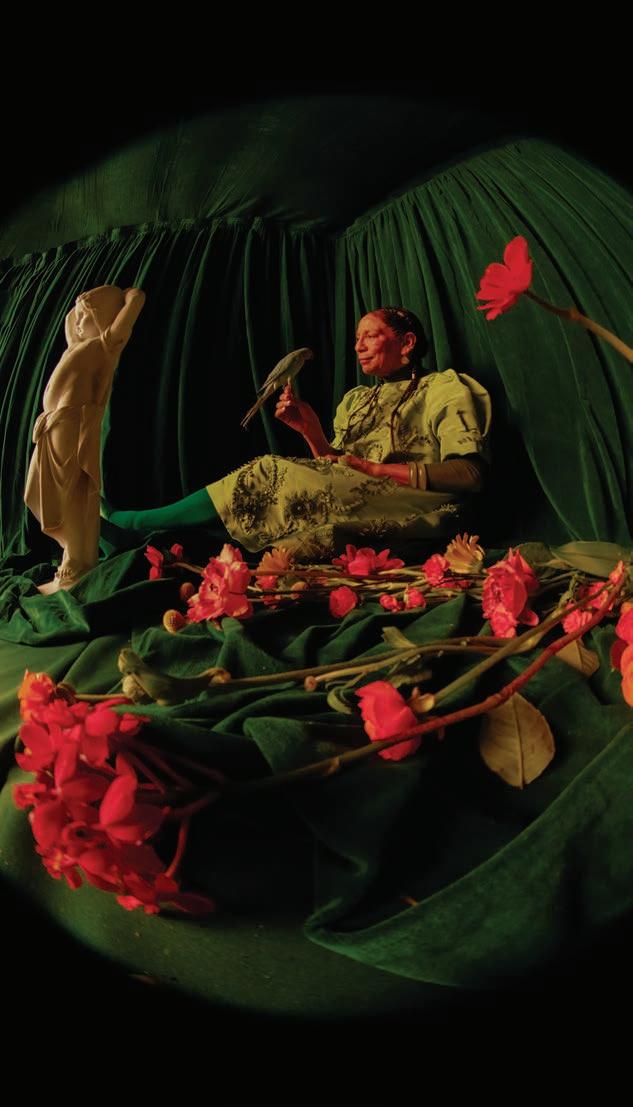
Creating rich tapestries of sound through Indian and Western classical music traditions, Reena Esmail, Swan Family Artist-in-Residence, explores the theme of water in her world premiere. Esmail’s exquisite piece is paired with Fauré’s stunning showcase of the human voice.
*Commissioned through a generous gift from Elizabeth and Justus Schlichting.
PERFORMANCES MAGAZINE 23
LAMASTERCHORALE.ORG TICKETS
START AT $45 213-972-7282
ENDOWMENT DONORS
We are honored to recognize our endowment donors, whose generosity ensures the longterm health of our organization. The following list represents cumulative contributions to the Los Angeles Philharmonic Endowment Fund as of August 15, 2022.
$25,000,000 AND ABOVE
Walt and Lilly Disney Foundation
Cecilia and Dudley Rauch
$20,000,000 TO $24,999,999
David Bohnett Foundation
$10,000,000 TO $19,000,000
The Annenberg Foundation
Colburn Foundation
$5,000,000 TO $9,999,999
Anonymous Dunard Fund USA
Lenore S. and Bernard A. Greenberg Fund
Carol Colburn Grigor
Terri and Jerry M. Kohl
Los Angeles Philharmonic Affiliates
Diane and Ron Miller
Charitable Fund
M. David and Diane Paul
Ann and Robert Ronus
Ronus Foundation
John and Samantha Williams
$2,500,000 TO $4,999,999
Peggy Bergmann YOLA Endowment Fund in Memory of Lenore Bergmann and John Elmer Bergmann
Lynn Booth/Otis Booth Foundation
Elaine and Bram Goldsmith
Norman and Sadie Lee Foundation
Karl H. Loring
Alfred E. Mann
Elise Mudd Marvin Trust
Barbara and Jay Rasulo
Flora L. Thornton
$1,000,000 TO $2,499,999
Linda and Robert Attiyeh
Judith and Thomas Beckmen
Gordon Binder and Adele Haggarty
Helen and Peter Bing
William H. Brady, III
Linda and Maynard Brittan
Richard and Norma Camp
Mr. and Mrs. Michael J. Connell
Mark Houston Dalzell and James Dao-Dalzell
Mari L. Danihel
Nancy and Donald de Brier
The Walt Disney Company
Fairchild-Martindale Foundation
Eris and Larry Field
Reese and Doris Gothie
Joan and John Hotchkis
Janeway Foundation
Bernice and Wendell Jeffrey
Carrie and Stuart Ketchum
Kenneth N. and Doreen R. Klee
B. Allen and Dorothy Lay
Los Angeles Philharmonic Committee
Estate of Judith Lynne
MaddocksBrown Foundation
Ginny Mancini
Raulee Marcus
Barbara and Buzz McCoy
Merle and Peter Mullin
William and Carolyn Powers
H. Russell Smith Foundation
Jay and Deanie Stein Foundation Trust
Ronald and Valerie Sugar
I.H. Sutnick
$500,000 TO $999,999
Ann and Martin Albert
Abbott Brown
Mr. George L. Cassat
Kathleen and Jerrold L. Eberhardt
Valerie Franklin
Yvonne and Gordon Hessler
Ernest Mauk and Doyce Nunis
Mr. and Mrs. David Meline
Sandy and Barry D. Pressman
Earl and Victoria Pushee
William and Sally Rutter
Nancy and Barry Sanders
Richard and Bradley Seeley
Christian Stracke
Donna Swayze
Lee and Hope Landis Warner
YOLA Student Fund
Edna Weiss
$250,000 TO $499,999
Mr. Gregory A. Adams Baker Family Trust
Veronica and Robert Egelston
Gordon Family Foundation
Ms. Kay Harland
Joan Green Harris Trust
Bud and Barbara Hellman
Gerald L. Katell
Norma Kayser
Joyce and Kent Kresa
Raymond Lieberman
Mr. Kevin MacCarthy and Ms. Lauren Lexton
Alfred E. Mann Charities
Jane and Marc B. Nathanson
Y & S Nazarian Family Foundation
Nancy and Sidney Petersen
Rice Family Foundation
Robert Robinson
Katharine and Thomas Stoever
Sue Tsao
Alyce and Warren Williamson
$100,000 TO $249,999
Mr. Robert J. Abernethy
William A. Allison
Rachel and Lee Ault
W. Lee Bailey, M.D.
Angela Bardowell
Deborah Borda
The Eli and Edythe Broad Foundation
Jane Carruthers
Pei-yuan Chia and Katherine Shen
James and Paula Coburn Foundation
The Geraldine P. Coombs Trust in memory of Gerie P. Coombs
Mr. and Mrs. Terry Cox
Silvia and Kevin Dretzka
Allan and Diane Eisenman
Christine and Daniel Ewell
Arnold Gilberg, M.D., Ph.D.
David and Paige Glickman
Nicholas T. Goldsborough
Gonda Family Foundation
Margaret Grauman
Kathryn Kert Green and Mark Green
Joan and John F. Hotchkis
Freya and Mark Ivener
Ruth Jacobson
Stephen A. Kanter, M.D.
Jo Ann and Charles Kaplan
Yates Keir
Susanne and Paul Kester
Vicki King
Sylvia Kunin
Ann and Edward Leibon
Ellen and Mark Lipson
B. and Lonis Liverman
Glenn Miya and Steven Llanusa
Ms. Gloria Lothrop
Vicki and Kerry McCluggage
David and Margaret Mgrublian
Diane and Leon Morton
Mary Pickford Foundation
Sally and Frank Raab
Mr. David Sanders
Malcolm Schneer and Cathy Liu
David and Linda Shaheen Foundation
William E.B. and Laura K. Siart
Magda and Frederick R. Waingrow
Wasserman Foundation
Robert Wood
Syham Yohanna and James W. Manns
$25,000 TO $99,999
Marie Baier Foundation
Dr. Richard Bardowell, M.D.
Jacqueline Briskin
Dona Burrell
Ying Cai and Wann S. Lee Foundation
Ann and Tony Cannon
Dee and Robert E. Cody
The Colburn Fund
Margaret Sheehy Collins
Mr. Allen Don Cornelsen
Ginny and John Cushman
Marilyn J. Dale
Mrs. Barbara A. Davis
Dr. and Mrs. Roger DeBard
Jennifer and Royce Diener
Jane B. and Michael D. Eisner
The Englekirk Family
Claudia and Mark Foster
Lillian and Stephen Frank
Dr. Suzanne Gemmell
Paul and Florence Glaser
Good Works Foundation
Anne Heineman
Ann and Jean Horton
Drs. Judith and Herbert Hyman
Albert E. and Nancy C. Jenkins
Robert Jesberg and Michael J. Carmody
Ms. Ann L. Kligman
Sandra Krause and William Fitzgerald
Michael and Emily Laskin
Sarah and Ira R. Manson
Carole McCormac
Meitus Marital Trust
Sharyl and Rafael Mendez, M.D.
John Millard
National Endowment for the Arts
Alfred and Arlene Noreen
Occidental Petroleum Corporation
Dr. M. Lee Pearce
Lois Rosen
Anne and James Rothenberg
Donald Tracy Rumford Family Trust
The SahanDaywi Foundation
Mrs. Nancie Schneider
William and Luiginia Sheridan
Virginia Skinner Living Trust
Nancy and Richard Spelke
Mary H. Statham
Ms. Fran H. Tuchman
Tom and Janet Unterman
Rhio H. Weir
Mrs. Joseph F. Westheimer
Jean Willingham
Winnick Family Foundation
Cheryl and Peter Ziegler
Lynn and Roger Zino
LA PHIL MUSICIANS
Anonymous
Kenneth Bonebrake
Nancy and Martin Chalifour
Brian Drake
Perry Dreiman
Barry Gold
Christopher Hanulik
John Hayhurst
Jory and Selina Herman
Ingrid Hutman
Andrew Lowy
Gloria Lum
Joanne Pearce Martin
Kazue Asawa McGregor
Oscar and Diane Meza
Mitchell Newman
Peter Rofé
Meredith Snow and Mark Zimoski
Barry Socher
Paul Stein
Leticia Oaks Strong
Lyndon and Beth Johnston Taylor
Dennis Trembly
Allison and Jim Wilt
Suli Xue
We extend our heartfelt appreciation to the many donors who have contributed to the LA Phil Endowment with contributions below $25,000, whose names are too numerous to list due to space considerations. If your name has been misspelled or omitted from this list in error, please contact the Philanthropy Department at contributions@ laphil.org. Thank you.
ENDOWMENT
24 PERFORMANCES MAGAZINE
Next Month at Walt Disney Concert Hall
MAR 3
Ladysmith Black Mambazo

MAR 7 SOLD OUT
Regina Spektor

MAR 8
Nathaniel Rateliff Plays Nilsson
MAR 16-17

Ziggy Marley

MAR 18
The Movie Music of Spike Lee & Terence Blanchard

The evolution of our name from the Los Angeles Jewish Home to Los Angeles Jewish Health reflects the full spectrum of our comprehensive, awardwinning programs and services. Los Angeles Jewish Health has grown from a group of caring neighbors providing shelter, to a leading non-profit senior care organization.
Our mission remains the same: to deliver excellence in senior care for all, rooted in Jewish values. With more than 100 years of trusted care, we meet you where you are in life to provide a customized experience that’s right for you.

COMING SOON
Ladysmith Black Mambazo
Ziggy Marley
Regina Spektor
PERFORMANCES MAGAZINE 25
Angeles Jewish Health is Energizing Senior Life!
Independent Living
Assisted Living
Senior Behavioral Health • Short-Term Rehabilitation • Skilled Nursing
PACE
Hospice & Palliative Care
Nursing School
Geriatric Health
Memory Care
Terence Blanchard
Los
•
•
•
•
•
•
•
•
One call does it all 855.227.3745 www.lajhealth.org
ANNUAL DONORS
The LA Phil is pleased to recognize and thank our generous donors. The following list includes donors who have contributed $3,500 or more to the LA Phil between August 16, 2021, and August 15, 2022.
$1,000,000 AND ABOVE
Anonymous (3) Ann and Robert Ronus
Live Nation-Hewitt Silva Concerts, LLC
$500,000 TO $999,999
Norman and Music Center Foundation
Music Center Foundation
$200,000 TO $499,999
Anonymous
Colburn Foundation
Dunard Fund USA
Gordon P. Getty
Max H. Gluck
Foundation
Jenny Miller Goff
Tylie Jones
Terri and Jerry M. Kohl
$100,000 TO $199,999
Anonymous (2)
Mr. and Mrs. Karl J. Abert
Mr. Gregory A. Adams
Ms. Ursula C. Krummel
County of Los Angeles
Alfred E. Mann
Gregory Annenberg Weingarten/ GRoW @ Annenberg
The Blue Ribbon
The Eisner Foundation
Ms. Erika J. Glazer
$50,000 TO $99,999
Anonymous (6)
Mr. Robert J. Abernethy
Ms. Kate Angelo and Mr. Francois Mobasser
Judith and Thomas L. Beckmen
David Bohnett Foundation
Linda and Maynard Brittan
R. Martin Chavez and Christian Lundberg
Becca and Jonathan
Congdon
Mr. and Mrs. Robert Cook
Donelle Dadigan
Nancy and Donald de Brier
The De Marchena-Huyke Foundation
The Rafael and Luisa De Marchena-Huyke Foundation
The Walt Disney Company
Louise and Brad Edgerton/ Edgerton Foundation
Jane B. and Michael D. Eisner
Ms. Lisa Field
William Kelly and Tomas Fuller
Kiki Ramos Gindler and David Gindler
$25,000 TO $49,999
Anonymous (4)
Anonymous in memory of Dr. Suzanne Gemmell
Airbnb
The Herb Alpert Foundation
Charities
Anne Akiko Meyers and Jason Subotky
The Rose Hills Foundation
Linda May and Jack Suzar
Maureen and Stanley Moore
The Music Man Foundation
Mr. and Mrs. Jason O’Leary
Alexandra S. Glickman and Gayle Whittemore
Lucy S. Gonda MA, Creative Arts Therapies
Good Works Foundation and Laura Donnelley
Lenore S. and Bernard A. Greenberg Fund
Yvonne Hessler
The Hirsh Family
Fritz Hoelscher
Barbara and Amos Hostetter
Ms. Teena
Hostovich and Mr. Doug Martinet
The Ralph M. Parsons Foundation
Pasadena Showcase House for the Arts
Koni and Geoff Rich
Monique and Jonathan Kagan
Linda and Donald Kaplan
W.M. Keck Foundation
Darioush and Shahpar Khaledi
Dr. Ralph A. Korpman
The Norman and Sadie Lee Foundation
Barbara and Buzz McCoy
Mr. and Mrs. David Meline
Michael and Lori Milken Family Foundation
David and Linda Shaheen
Jay and Deanie Stein Foundation Trust
Rosenthal Family Foundation
James and Laura
Rosenwald/ Orinoco Foundation
Allyson Rubin
Sony Pictures
National Endowment for the Arts
David and Noriko Niemetz
M. David and Diane Paul
Peninsula Committee
Ms. Linda L. Pierce
Sandy and Barry
D. Pressman
Richard and Ariane Raffetto
Barbara and Jay Rasulo
Wendy and Ken
Ruby
Nancy S. and Barry Sanders
Marilyn and Eugene Stein
Entertainment, Inc.
Christian Stracke
Margo and Irwin Winkler
Ellen and Arnold Zetcher
Antonia Hernandez and Michael L. Stern
Ronald and Valerie Sugar
Frank Hu and Vikki Sung
Ms. Lois M. Tandy
Sue Tsao
Ellen GoldsmithVein and Jon Vein
Mindy and David Weiner
John and Marilyn Wells Family Foundation
Alyce de Roulet
Williamson
Debra Wong Yang and John W. Spiegel
Debra and Benjamin Ansell
Susan and Adam Berger
Samuel and Erin Biggs
Mr. and Mrs. Norris
J. Bishton, Jr.
Jill Black Zalben
Robert and Joan Blackman Family Foundation
Mr. Jeb Bonner
Kawanna and Jay Brown
Michele Brustin
Steven and Lori Bush
Oleg and Tatiana Butenko
California Office of the Small Business Advocate
Mara and Joseph Carieri
Esther S.M. Chui
Chao and Andrea
Chao-Kharma
Dan Clivner
Mr. Richard W. Colburn
Mr. and Mrs. Gordy Crawford
Lynette and Michael C. Davis
Orna and David Delrahim
Malsi DoyleForman and Michael Forman
26 PERFORMANCES MAGAZINE
ANNUAL DONORS
Estate of Yates Keir
Van and Francine
Durrer Edison
International
Geoff Emery
Marianna J. Fisher and David Fisher
Austin and Lauren
Fite Foundation
Drs. Jessie and Steven Galson
The Rosalinde and Arthur Gilbert Foundation
Mr. James Gleason
Liz and Peter Goulds
Jason Greenman and Jeanne Williams
Renée and Paul Haas
Harman Family Foundation
Mr. Philip Hettema
Mr. and Mrs. James L. Hunter
JPMorgan Chase Foundation
Jo Ann and Charles Kaplan
Mr. and Mrs. Joshua R. Kaplan
Terri and Michael Kaplan
Paul Kester
Winnie Kho and Chris Testa
Vicki King
Mr. and Mrs. Kenneth N. Klee
The Erich and Della
Koenig Foundation
Mr. and Mrs. Keith
Landenberger
David Lee
Ken Lemberger and Linda Sasson
City of Los Angeles, Department of Cultural Affairs
Renee and Meyer Luskin
Roger Lustberg and Cheryl Petersen
Theresa Macellaro / The Macellaro
Law Firm
The Seth MacFarlane Foundation
Pamela Mass
Ashley McCarthy and Bret Barker
Ms. Kim McCarthy and Mr. Ben
Cheng
Ms. Irene Mecchi
David and Margaret
Mgrublian
Mr. Robert W. Olsen
Tye Ouzounian
Mr. and Mrs. Bruce Peters
$15,000 TO $24,999
Anonymous (10)
Drew and Susan Adams
Honorable and Mrs. Richard
Adler
Ms. Olga S. Alderson
Bobken and Hasmik Amirian
Ms. Elizabeth Barbatelli
Susan Baumgarten
Dr. William Benbassat
Miles and Joni Benickes
Mr. and Mrs. Wade Bourne
Mr. Stuart D. Buchalter
Ying Cai and Wann S. Lee
Foundation
Andrea ChaoKharma and Kenneth Kharma
Chivaroli and Associates, Tiffany and Christian
Chivaroli
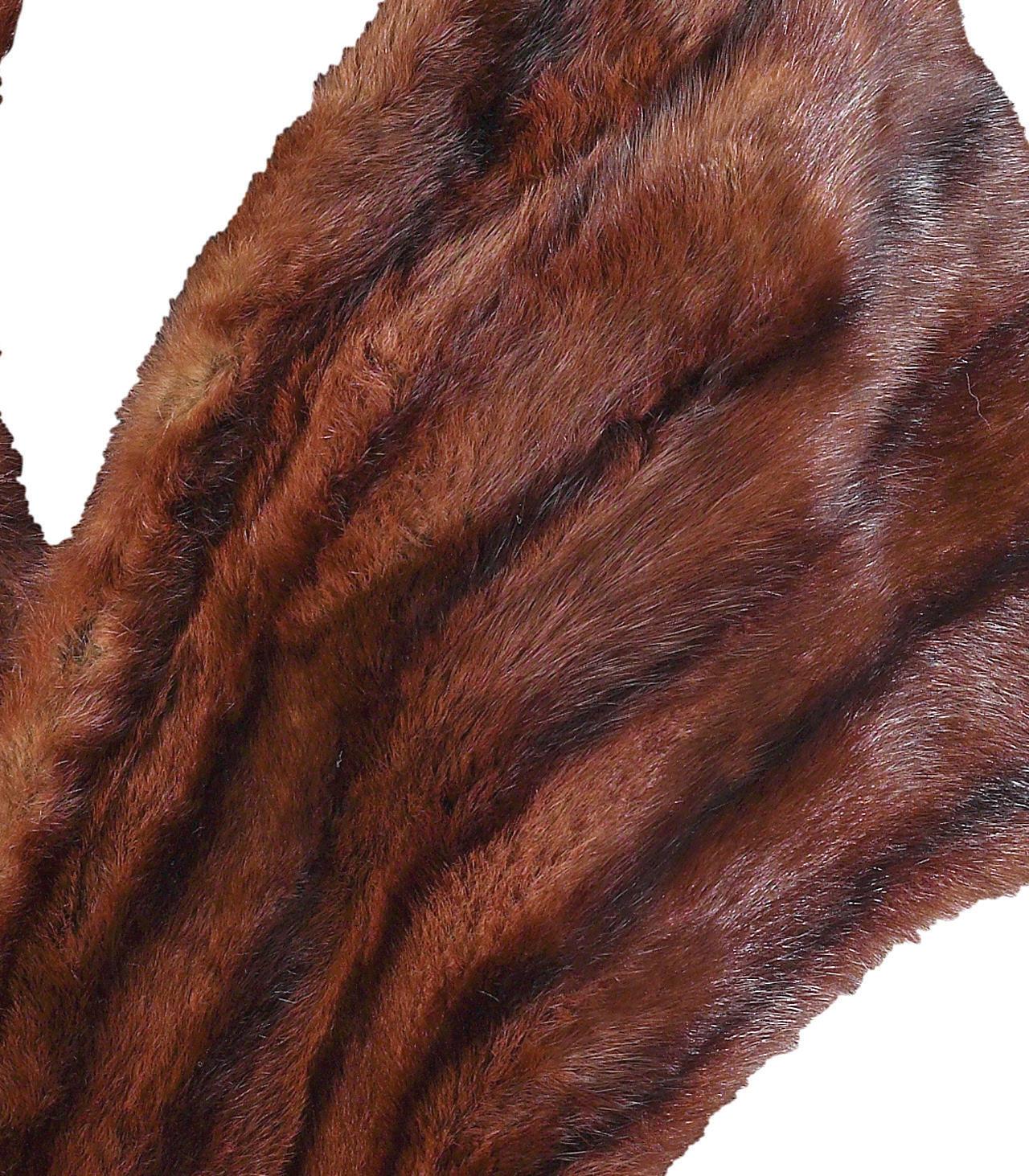
Hyon Chough and Maurice Singer
Sarah and Roger Chrisman
Mr. and Mrs. Jonathan Cookler
Mark Houston
Dalzell and James
Dao-Dalzell
Jennifer Diener
Julia Stearns
Dockweiler
Charitable Foundation
Dr. and Mrs.
William M. Duxler
Daniel and Maryann Fong
Foothill
Philharmonic Committee
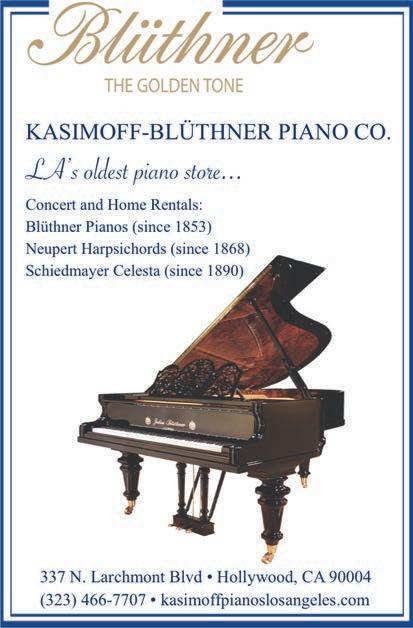
Mr. and Mrs.
Josh Friedman
Gary and Cindy Frischling
Carrie and Rob Glicksteen
Goodman Family Foundation
Robert and Lori Goodman
Allen Greenfield and Vivian
Feintech
Mr. Bill Grubman
Vicken and Susan
J. Haleblian
Carol Henry
Marion and Tod Hindin
Gerry Hinkley and Allen Briskin
Liz Levitt Hirsch
Linda Joyce Hodge
Mr. Glenn P. Jaffe
Meg and Bahram Jalali
Mr. Eugene Kapaloski
Tobe and Greg Karns
Mr. and Mrs. Robert A. Kasirer
Sandi and Kevin Kayse
Larry and Lisa Kohorn
N. Kubasak
Naomi and Fred Kurata
Lauren B.
Leichtman and Arthur E. Levine
Saul Levine
PERFORMANCES MAGAZINE 27
Bond Furs ANNUAL PRIVATE SALE SATURDAY & SUNDAY DECEMBER 7 th & 8 th 626.471.9912 bondfurs.com 114 W. Lime Ave, Monrovia, CA 91016 Custom Designed or Ready Made Garments, Alterations, Restyling, Storage, Cleaning & Glazing.
ANNUAL DONORS
Dr. Stuart Levine and Dr. Donna
Richey
Mr. and Mrs. Simon K.C. Li
Anita Lorber
Los Angeles County
Department of Arts and Culture
Los Angeles
Philharmonic Affiliates
The Mailman Foundation
Raulee Marcus
Jonathan and Delia Matz
Liliane Quon McCain
Dwayne and Eileen McKenzie
Marcy Miller
Mr. John Monahan
Deena and Edward Nahmias
Mr. and Mrs. Dan Napier
Ms. Mary D. Nichols
Shelby Notkin and Teresita Tinajero
Christine M. Ofiesh
Mr. Gary L. Ogden
Ana Paludi and Michael Lebovitz
Soham Patel and Jennifer Broder
Gregory Pickert and Beth Price
$10,000 TO $14,999
Anonymous (4)
B. Allen and Dorothy Lay
The Aversano Family Trust
Lorrie and Dan Baldwin
Judy and Leigh Bardugo
Stephanie Barron
Mr. Joseph A. Bartush
Mr. and Mrs. Phil Becker
Sondra Behrens
Phyllis and Sandy Beim
Mr. Mark and Pat Benjamin
Suzette and Monroe Berkman
Bob and Reveta Bowers
Campagna Family Trust
Ms. Nancy Carson and Mr. Chris Tobin
Chevron Products Company
Suzanne H. Christian and James L. Hardy
Ms. Bernice Colman
Alison Moore Cotter
Mr. Lawrence Damon and Mr. Ricardo Torres
Cary Davidson and Andrew Ogilvie
Victoria Seaver
Dean, Patrick Seaver, Carlton
Seaver
Thomas Denison
The Randee and Ken Devlin Foundation
Tim and Neda Disney
Janet and Larry Duitsman
Emil Ellis Farrar and Bill Ramackers
Bonnie and Ronald Fein
Mr. Tommy Finkelstein and Mr. Dan Chang
E. Mark Fishman and Carrie Feldman
Ella Fitzgerald
Charitable Foundation
Debra Frank
Ms. Kimberly Friedman
Dr. and Mrs. David Fung
$5,500 TO $9,999
Anonymous (7)
Ms. Janet Abbink and Mr. Henry Abbink
Alex Alben
Art and Pat Antin
Sandra Aronberg, M.D., and Charles Aronberg, M.D.
Mr. and Mrs. Arnold Porath
Cathleen and Scott Richland
James D. Rigler/ Lloyd E. Rigler - Lawrence E. Deutsch Foundation
Ms. Anne Rimer
John Peter Robinson and Denise Hudson
Jennifer and Evan Rosenfeld
The SahanDaywi Foundation
Ron and Melissa Sanders
Dr. and Mrs. Bruce Gainsley
Harriett and Richard E. Gold
Mr. and Mrs. Louis L. Gonda
Mr. and Mrs. Daniel
M. Gottlieb
Mr. and Mrs. Ken Gouw
Diane and Peter H. Gray
Tricia and Richard Grey
Roberta L. Haft and Howard L. Rosoff
Laurie and Chris Harbert
Mr. and Mrs. Irwin
Helford and Family
Mr. Tyler Holcomb
Mr. Raymond W. Holdsworth
Joyce and Fredric Horowitz
Mr. Frank J. Intiso
Kristi Jackson and William Newby
Robin and Gary Jacobs
Dr. William B. Jones
Mr. and Mrs. Stephen Keller
Remembering
Dena and Irv Schechter/The Hyman Levine Family Foundation: L’dor V’dor
Evy and Fred Scholder Family
Marc Seltzer and Christina Snyder
Mr. James J. Sepe
Nina Shaw and Wallace Little
Jill and Neil Sheffield
Mr. and Mrs. Howard A. Sherwood
Grady and Shelley Smith
Mr. and Mrs. Richard Sondheimer
Mr. Lev Spiro and Ms. Melissa Rosenberg
Mrs. Zenia Stept
Tom Strickler
Priscilla and Curtis S. Tamkin
Tracey BoldemannTatkin and Stan Tatkin
Hideya Terashima and Megan
Watanabe
Warren B. and Nancy L. Tucker
Elinor and Rubin
Turner
Lynn Wheeler Kinikin
Cary and Jennifer Kleinman
Sandra Krause and William Fitzgerald
Lucien Lacour
Mr. and Mrs. Norman A. Levin
Randi Levine
Ms. Agnes Lew
Ellen and Mark Lipson
Kyle Lott
Macy’s Marshall Field’s
Sandra Cumings
Malamed and Kenneth D. Malamed
Lisa and Willem Mesdag
Ms. Marlane Meyer
Mrs. Judith S. Mishkin
Ms. Susan Morad at Worldwide Integrated Resources, Inc.
Wendy Stark
Morrissey
Mr. and Mrs. James Mulally
Ms. Christine Muller and Mr. John Swanson
NBC Universal
Anthony and Olivia Neece
Dick and Chris Newman / C and R Newman Family Foundation
Kenneth T. and Eileen L. Norris Foundation
Ms. Jeri L. Nowlen
Mr. and Mrs. Peter O’Malley
Steve and Gail
Orens
Dennis C. Poulsen and Cindy
Costello
William “Mito”
Rafert
Lee Ramer
Alexander and Mariette
Sawchuk
Samantha and Marc Sedaka
Joan and Arnold Seidel
Dr. Donald Seligman and Dr. Jon Zimmermann
Neil Selman and Cynthia
Chapman
Walter H. Shepard and Arthur A. Scangas
Nancy Valentine
Noralisa Villarreal and John
Matthew Trott
Tee Vo and Chester Wang
Warner Bros.
Ms. Kelly
Weinhart-Henry and Ms. Bridgett
Henry
Libby Wilson, M.D.
Mahvash and Farrok Yazdi
Katiana and Tom Zimmerman
David Zuckerman and Ellie Kanner
Gloria Sherwood
The Sikand Foundation
Angelina and Mark Speare
Mr. and Mrs. Mark Stern
Marcie Polier Swartz and David Swartz
Mr. Akio Tagawa and Ms. Yui Suzuki
Mr. and Mrs. Randall Tamura
Michael Frazier
Thompson
Mr. Shaw Wagener and Ms. Deborah Heitz
Rachel Wagman
Frank Wagner and Lynn O’Hearn
Wagner
Abby and Ray Weiss
Amy and Norimoto
Yanagawa
Mr. and Mrs. Howard Zelikow
Bobbi and Walter Zifkin
Kevork and Elizabeth Zoryan
Ms. Judith A. Avery
Mr. Mustapha Baha
Dr. Richard Bardowell, M.D.
Mrs. Linda E.
Barnes
Sandra Kay Beckley
Mr. Barry Beitler
Maria and Bill Bell
Mr. and Mrs. Philip Bellomy
Benjamin Family Foundation
Charles Berney
and Family
Ms. Gail K. Bernstein
Helen and Peter S. Bing
Mr. and Mrs. Richard Birnholz
Lisa Biscaichipy
Mitchell Bloom
Mr. Ronald H. Bloom
Roz and Peter Bonerz
Greg Borrud
Mr. and Mrs. Hal Borthwick
Lynne Brickner and Gerald
Gallard
Mr. and Mrs. Steven Bristing
Abbott Brown
Thy Bui
Debra Burdorf
CBS Entertainment
Dr. Kirk Y. Chang
Arthur and Katheryn Chinski
Dr. Stephanie Cho and Jacob Green
28 PERFORMANCES MAGAZINE
Mr. and Mrs.
Ronald Clements
Mr. David Colburn

Jay and Nadege Conger
Mr. and Mrs. Richard W. Cook
Ms. Rosette Delug
Ms. Nancy L. Dennis
Ms. Mary Denove
Kathleen and Jerry L.
Eberhardt

Anna Sanders
Eigler
Ernst and Young LLP
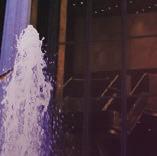
Ms. Penelope Foley
The Franke Family Trust
Jason Gilbert
The Gillis Family
Mr. and Mrs.
Herbert Glaser
Mr. and Mrs. Russell Goldsmith
Lee Graff Foundation

Mr. and Mrs.
Paul E. Griffin III
Marnie and Dan
Gruen


Mr. and Mrs.
Paul Guerin
Cornelia Haag-

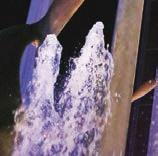
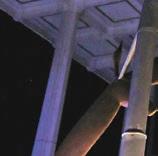


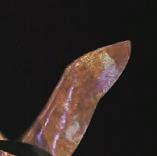


Molkenteller, M.D.
Mr. William Hair
Ms. Marian L. Hall
Stephen and Hope Heaney
Stephen D. Henry and Rudy M.
Oclaray
Ms. Luanne
Hernandez
Myrna and Uri Herscher Family Foundation
Elizabeth HofertDailey Trust
Janice and Laurence Hoffmann
Jill Hopper
Roberta and Burt
Horwitch



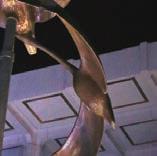
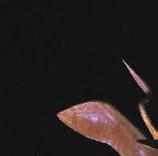
Dr. and Mrs. Mel
Hoshiko



Michele and James Jackoway
Mr. and Mrs. Tim
C. Johnson
Barbara A. Jones
Randi and Richard
B. Jones
Mr. and Mrs.
Steaven K.
Jones, Jr.
Robin and Craig
Justice
Hun and Jee Kang
Eileen and Ken Kaplan
Marty and Cari Kavinoky
UNSUK CHIN Subito con forza

ANNUAL DONORS SYMPHONY
22 23
SERIES AT AMBASSADOR AUDITORIUM
ELGAR Cello Concerto RIMSKY-KORSAKOV Scheherazade SCHEHERAZADE FEBRUARY 11, 2023 BEETHOVEN & RACHMANINOFF MARCH 18, 2023 HUANG RUO Folk Songs for Orchestra RACHMANINOFF Piano Concerto No. 2 BEETHOVEN Symphony No. 3 “Erotica” AN AMERICAN IN PARIS APRIL 29, 2023 GERSHWIN An American in Paris FIRST U.S. PRODUCTION OUTSIDE OF BROADWAY DIRECTED BY KRISTIANNE KURNER a"…atonceashiverysuspenser,ahearthsidefamilyportrait, politicaltragedyandjourneyacrossmythicseas." —Ben Brantley, The New York Times WWW.NEWVILLAGEARTS.ORG 760.433.3245 TICKET INFO THE DEAHURSTON NEWVILLAGEARTS CENTER 2787STATEST. | CARLSBAD,CA 92008 2019 Tony Award Winner Laurence Olivier Award for Best Play during its West End run and the New York Drama Critics’ Circle Outer Critics Circle, and Drama Desk Awards for Best Play for its Broadway run FEB4 –MAR5
ANNUAL DONORS
Mr. Mark Kim and Ms. Jeehyun Lee
Mr. and Mrs. V ictor Kohn
Mr. and Mrs. Stephen A. Kolodny
Mr. and Mrs. Joseph K. Kornwasser
Dr. and Mrs. Mark Labowe
Mr. and Mrs. Ronald B. Labowe
Ellie and Mark Lainer
Lee Lampe
Katherine Lance
Mr. and Mrs. Jack D. Lantz
Mr. George Lee
Marlene and Howard Leitner
Mary Beth and John Leonard
Marie and Edward Lewis
David and Rebecca Lindberg
Mr. Joseph Lund and Mr. James Kelley
Mr. and Mrs. Stanley Maron
Milli M. Martinez and Don Wilson
Vilma S. Martinez, Esq.
Leslie and Ray Mathiasen
Dr. and Mrs. Gene Matzkin
Mr. and Mrs. Thomas E. McCarthy
Cathy and John McMullen
Mr. Sheldon and Dr. Linda Mehr
Lawry Meister
Mr. and Mrs. Dana Messina
O’Malley and Ann Miller
Mr. Weston F. Milliken
Janet Minami
Marc and Jessica Mitchell
Mrs. Lillian Mueller
Craig and Lisa Murray
Mrs. Cynthia Nelson
Mr. Jerold B. Neuman
Mr. and Mrs. Randy Newman
$3,500 TO $5,499
Anonymous (6)
Ms. Rose Ahrens
Edgar Aleman
Adrienne S. Alpert
Stiv Bators
Catherine and Joseph Battaglia
Newton and Rochelle Becker
Charitable Trust
Ellis N. Beesley, Jr., M.D.
Mr. and Mrs. Gregg and Dara Bernstein
Vince Bertoni and Damon Hein
Eileen Bigelow and Brien J. Bigelow
Mr. and Mrs. Dan Biles
Dr. Andrew C. Blaine and Dr. Leigh Lindsey
Ken Blakeley and Quentin O’Brien
Mr. Michael Blea
Bill and Susan Bloomfield
Joan N. Borinstein
Ms. Leslie Botnick
Mr. Ray Boucher
Anita and Joel Boxer
Dr. and Mrs. Hans Bozler
Ms. Kimberly Nicholas
Ms. Margo Leonetti
O’Connell
Irene and Edward Ojdana
Ms. Melissa Papp-Green
Cynthia Patton
Ms. Debra Pelton and Mr. Jon Johannessen
Mary E. Petit and Eleanor Torres
Julie and Marc Platt
Lyle and Lisi Poncher
Robert J. Posek, M.D.
James S. Pratty, M.D.
Diana Reid and Marc Chazaud
Mr. Eduardo Repetto
Hon. Vicki Reynolds and Mr. Murray Pepper
Mr. and Mrs. Norman L. Roberts
In memory of RJ and JK Roe
Murphy and Ed Romano and Family
Amy and William Roth
Mr. Steven F. Roth
Ms. Rita Rothman
Linda and Tony Rubin
Mr. and Mrs. Paul Rutter
Thomas C. Sadler and Dr. Eila C. Skinner
Dr. and Mrs. Bernard Salick
Mrs. Elizabeth
Loucks Samson
San MarinoPasadena
Philharmonic Committee
Santa MonicaWestside
Philharmonic Committee
Dr. and Mrs. Heinrich
Schelbert
Claire and Charlie Shaeffer
Ruth and Mitchell Shapiro
Dr. Stephen and Mrs. Janet
Sherman
Pamela and Russ Shimizu
Mr. Adam Sidy
Mr. and Mrs. Peter R. Skinner
Leah R. Sklar
Mr. Douglas
H. Smith
William Spiller
Joseph and Suzanne Sposato
Lael Stabler and Jerone English
Mr. Adrian B. Stern
Jennifer Taguchi
Andrew Tapper and Mary Ann
Weyman
Mr. Avedis Tavitian
Mrs. Elayne
Techentin
Keith and Cecelia Terasaki
Ms. Evangeline
M. Thomson
Charles and Nicole Uhlmann
Verizon Foundation
Jenny Vogel
Terry and Ann Marie Volk
Wil Von Der Ahe
Dr. Marlene M. Schultz and Philip M. Walent
Lisa and Tim Wallender
Bob and Dorothy Webb
Max and Diane Weissberg
Doris Weitz and Alexander Williams
Westside Committee
Robert and Penny White
Mr. Robert E. Willett
David and Michele Wilson
Mr. Steve Winfield
Karen and Rick Wolfen
Mr. and Mrs. Irwin Wong
Mr. and Mrs. Richard Wynne
Mr. Nabih Youssef
Lynn Gordon and Jon Braun
Ms. Marie Brazil
Mrs. William Brand and Ms. Carla B. Breitner
Mr. Donald M. Briggs and Mrs. Deborah J. Briggs
Drs. Maryam and Iman Brivanlou
Kevin Brockman and Daniel Berendsen
Diana Buckhantz
Business and Professional Committee
Mr. and Mrs. Tom R. Camp
Mr. Jon C. Chambers
Mr. Louis Chertkow
Carla
Christofferson
Ms. Nancybell Coe
Dr. and Mrs. Lawrence J. Cohen
Susan and David Cole
Ms. Ina Coleman
Mr. Michael Corben and Ms. Linda Covette
Mr. and Mrs. Bruce Corwin
Donald Cron
Mr. and Mrs. Leo David
Mr. James Davidson and Mr. Michael Nunez
Mr. Howard M. Davine
Michael Dillon
R. Stephen Doan and Donna E. Doan
Sean Dugan and Joe Custer
Mr. Michael Edelstein
Dr. David Eisenberg
Mrs. Eva Elkins
John B. Emerson and Kimberly Marteau
Emerson
Joyce and David Evans
Jen and Ted Fentin
The Hon. Michael W. Fitzgerald
Dr. and Mrs. Arthur A. Fleisher, II
Mr. and Mrs. Michael M. Flynn
Mrs. Diane Forester
Bruce Fortune and Elodie Keene
Laura Fox, M.D., and John Hofbauer, M.D.
Mr. Michael Fox
Lynn Franklin
Mr. and Mrs. Michael Freeland
Linda and James Freund
Dr. Tim A. Gault, Sr.
Beth Gertmenian
Mr. and Mrs. Ronald Gertz
Mr. and Mrs. Harlan Gibbs
Ms. Malinda
Gilchrist
Mr. and Mrs. Lawrence D. Gilson
Tina Warsaw
Gittelson
Glendale
Philharmonic Committee
Mr. Gregg
Goldman and
Mr. Anthony DeFrancesco
Dr. Patricia Goldring
Nestor Gonzalez and Richard
Rivera
Mr. Peter Anderson and Ms. Valerie Goo
Dr. Ellen Smith
Graff
Sue and Jim Gragg
Rob and Jan Graner
Ms. Linda Graul
Mr. Charles Gross
Mr. Frank Gruber and Ms. Janet
Levin
Mr. Gary M. Gugelchuk
Mr. and Mrs. Pierre and Rubina Habis
Mr. Robert T. Harkins
Mr. and Mrs. Brian L. Harvey
Lynette Hayde
Byron and DeAnne Hayes
Mr. Donald V. Hayes
Mr. Rex Heinke
and Judge
Margaret Nagle
Dryden and Brian Helgoe
The Hill Family
Dr. and Mrs. Hank Hilty
Arlene
Hirschkowitz
David and Martha Ho
Eugene and Katinka Holt
In and Ki Hong
Ms. Michelle Horowitz
Dr. Timothy Howard and Jerry Beale
Mr. and Mrs. Thomas C. Hudnut
Andrei and Luiza Iancu
Illig Construction Company
Carl and Wendy
Jacoby
Mr. Sean Johnson
Mr. and Mrs. David S. Karton
Dr. and Mrs. David Kawanishi
Kayne, Anderson
and Rudnick
Richard Kelton
Ms. Sharon Kerson
30 PERFORMANCES MAGAZINE
Richard and Lauren King
Mr. and Mrs. Jon Kirchner
Stephanie and Randy Klopfleisch
Michael and Patricia Klowden
Mr. and Mrs. Bruce Konheim
David Koontz and Jim Brophy
The Kraft Family
Elaine Kramer and Al Latham
Carol Krause
Brett Kroha and Ryan Bean
Mrs. Joan Kroll
Tom Lallas and Sandy Milo
Thomas and Gloria Lang
Joan and Chris Larkin
Mrs. Grace E. Latt
James D. Laur
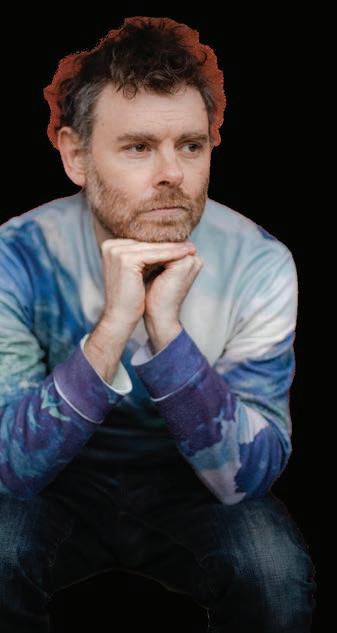
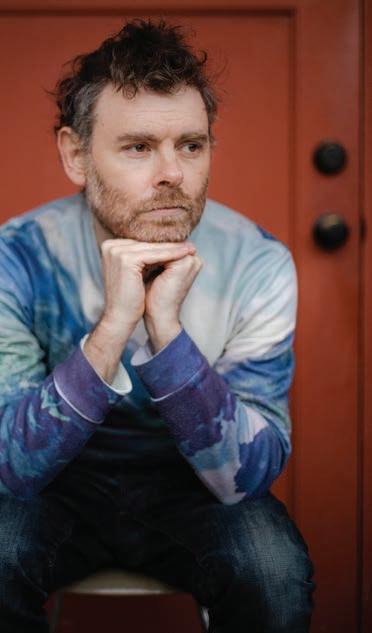
Craig Lawson and Terry Peters
Mr. Randall Lee and Ms. Stella M.
Jeong
Mr. Robert Leevan
Dr. Bob Leibowitz
Lydia and Charles Levy
David and Meghan Licata
Alison Lifland
Ms. Joanne Lindquist
Ms. Elisabeth
Lipsman
Long Beach
Auxiliary
Ms. Diana Longarzo
Mr. Philip Lord
Susan Disney Lord and Scott Lord
Los Angeles
Philharmonic Committee
Kristine and David Losito
Mr. and Mrs. Boutie Lucas
Crystal and Elwood Lui
Luppe and Paula Luppen
Edward and Jamelle Magee
Mr. and Mrs. Ronald Manzani
Mona and Frank Mapel
Mr. Allan Marks and Dr. Mara Cohen
David Matalon and Sheryl Shark
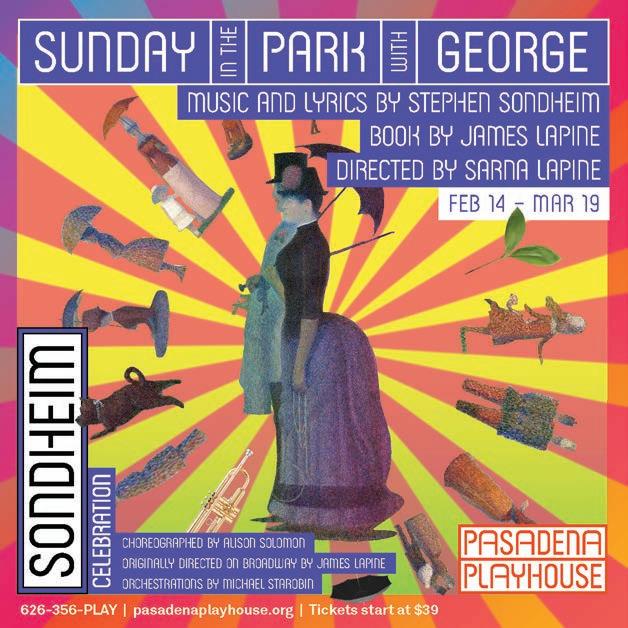
ANNUAL DONORS PERFORMANCES MAGAZINE 31 KAHANE PLAYS KAHANE TICKETS AVAILABLE AT (213) 221-3920 LACO.ORG MAR 11 ROYCE HALL 8 P.M. MAR 12 ALEX THEATRE 7 P.M. CHRISTOPHER ROUNTREE conductor GABRIEL KAHANE composer JEFFREY KAHANE piano
ANNUAL DONORS
Dr. and Mrs. Allen
W. Mathies
Mr. Gary J. Matus
Mr. and Mrs. William F. McDonald
Ms. Barbara
H. McDowell
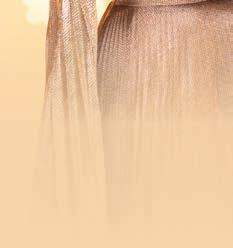
Mrs. Velma V. McKelvey
Professors
Anne and Ronald
Mellor
Robert L. Mendow
Ms. Janet G. Michaels
Mr. and Mrs. David Michaelson
Dr. Gary Milan
Linda and Kenneth Millman
Mr. and Mrs.
Simon Mills
Mr. and Mrs.
William Mingst
Mr. Lawrence
A . Mirisch
Cynthia
Miscikowski
Maria and Marzi Mistry
Robert and Claudia Modlin
Linda and John Moore
Mr. Alexander Moradi
Sheila Muller
Mr. Emory R. Myrick
Ms. Kari Nakama
Mr. and Mrs. Robert Neely
Bill and Mary Newbold
Mr. Richard
Newcome and Mr. Mark Enos
Heidi Novaes
Ms. Becky Novy
Mr. Dale Okuno
Mr. and Mrs.
Richard Orkand
Mr. Ralph Page
January
Parkos-Arnall
Angela Gheorghiu
Saturday, March 4, 2023 7:30 pm



–The New York Times
Vibrant opera star Angela Gheorghiu returns with an unmatched repertoire, including Handel, Strauss, Tosti, Massenet, and more.


Celebrity Opera Recitals at BroadStage are supported by a generous gift from the Lloyd E. Rigler — Lawrence E. Deutsch Foundation.
broadstage.org
Mr. and Mrs. Robert D. Paster
Mr. and Mrs. Joshua Perttula
Nancy and Glenn Pittson
Mr. Albert Praw
Joyce and David Primes
Ms. Marci Proietto
Ms. Miriam Rain
Richard Ranger
Marcia and Roger Rashman
Mr. and Mrs. Wayne Ratkovich
Dr. Robert Rauschenberger
Rita and Norton Reamer
Mary Beth
Redding
Resource Direct
Dr. Susan F. Rice
Rock River Robinson Family Foundation
Hon. Ernest M. Robles
Ernesto Rocco
Mrs. Laura H. Rockwell
Allison and Richard Roeder
Mr. and Mrs. William C. Roen
Peter and Marla Rosen
Mr. Lee N. Rosenbaum and Mrs. Corinna
Cotsen
Dr. James M. Rosser
Mimi Rotter
Mr. and Mrs. Matthew Rowland
Ann M. Ryder
Betty J. Saidel
Valerie Salkin
Mr. and Mrs. Charles M. Sarff
Kevin Savage and Britta Lindgren
Mark and Valerie Sawicki
Elliot Gordon and Carol Schwartz
Carol (Jackie) and Charles Schwartz
Mr. Alan
Scolamieri

Michael Sedrak
Robert Segal in memory of Jeanne Segal
Dr. and Mrs. Hervey Segall
Ms. Amy J. Shadur-Stein
Rayman Mathoda and Avantika
Shahi
Mr. Steven Shapiro
Dr. Alexis M.
Sheehy
Mr. Murray Siegel
Ms. Ruth M. Simon
David Singer
Dr. and Mrs.
Robert Sinskey
Mr. Kurt Skarin
Mr. Steven Smith
Mr. and Mrs. Michael G. Smooke
Virginia Sogomonian and Rich Weiss
Michael Soloman and Steven Good
Shondell and Ed Spiegel
Ms. Angelika Stauffer
Mr. and Mrs. Joseph Stein
Mr. and Mrs.Gene Stoeckly
Maia and Richard Suckle and
The Anna and Benjamin Suckle Foundation
The Sugimoto Family
Mr. and Mrs. Mark G. Sullivan
Ted Suzuki and Deborah May
GLYNDEBOURNE, GARSINGTON & LONDON FESTIVALS
June 18 – 30, 2023
GLYNDEBOURNE FESTIVAL: L’ELISIR D’AMORE; & DON GIOVANNI (New Production).
LONDON (Royal Opera– Covent Garden): WERTHER (Kaufmann); IL TROVATORE.
GARSINGTON FESTIVAL: ARIADNE AUF NAXOS; & Mozart’s MITRIDATE, RE DI PONTO.
HOLLAND PARK FESTIVAL: RIGOLETTO.
PLUS - A West End Musical (TBA).
– 5-Star Hotels –Grand Hotel – Eastbourne Sussex; The May Fair – London
MILAN & VERONA
June 29 – July 10, 2023
MILAN (La Scala): MACBETH (Netrebko); & Prokofiev’s ROMEO & JULIET BALLET.
VERONA (Arena): CARMEN; RIGOLETTO; LA TRAVIATA; & AIDA (New Production).
– 5-Star Hotels –Grand Hotel– Milan; Due Torri– Verona
–Orchestra Tickets to Performances––Selected Gourmet Meals & Wine––Customized Sightseeing and Excursions–
32 PERFORMANCES MAGAZINE
“alluring and expressive”
Celebrity Opera is back!
INTERNATIONAL CURTAIN CALL 2023 Deluxe Opera & Music Tours LIMITED SPACE AVAILABLE Contact International Curtain Call 3313 Patricia Ave. Los Angeles, CA 90064 Ph: (310) 204-4934; (888) 354-0250 E-Mail: Icctours1@aol.com
Photo by Cosmin Gogu
Mr. and Mrs. Larry
W. Swanson
Mr. Marc A.
Tamaroff

Suzanne Thomas

Mr. and Mrs. Harlan
H. Thompson
Mr. and Mrs. Leonard Unger
Christine Upton
Kathy Valentino
Perry Vidalakis
Jay T. Kinn and Jules B. Vogel
Elliott and Felise
Wachtel
Christopher V. Walker
Mr. Eldridge
Walker
Mr. and Mrs. Susan
Washton
Craig R. Webb and Melinda Taylor
Ms. Diane C. Weil and Mr. Leslie R.
Horowitz
Mr. and Mrs. Doug
M. Weitman

Mr. and Mrs. Steven White
Mr. Kirk Wickstrom and Mrs. Shannon Hearst
Wickstrom
Mr. Lee Winkelman and Ms. Wendey
Stanzler
Ms. Eileen Wong Linda and John
Woodall
Mr. Kevin Yoder
George and Eileen Young
Mrs. Lillian Zacky
Rudolf H. Ziesenhenne
Mr. Sanford Zisman and Ms. Janis Frame
Friends of the LA Phil at the $500 level and above are recognized on our website. Please visit laphil.com. If your name has been misspelled or omitted from the list in error, please contact the Philanthropy Department at contributions@ laphil.org. Thank you.
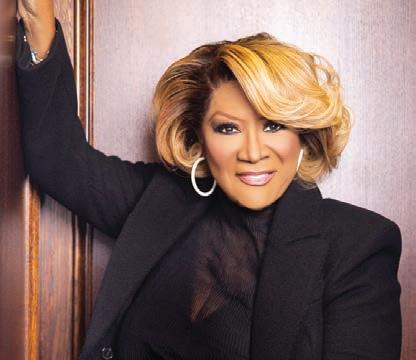
PERFORMANCES MAGAZINE 33 ANNUAL DONORS
March 24, 2023
323-343-6600 April 22, 2023 theluckman.org media partner TICKETS ON SALE NOW DISCOVER OUR FULL SEASON AT THELUCKMAN.ORG
Patti LaBelle Melissa Etheridge
Symphonic Majesty
MAR 2–5
Mehta Conducts Mahler 3
Zubin Mehta, conductor
Gerhild Romberger, alto
Los Angeles Master Chorale
Grant Gershon, Artistic Director

Jenny Wong, Associate Artistic Director
Los Angeles Children’s Chorus
Fernando Malvar-Ruiz, Artistic Director
MAR 10–12
Symphonie fantastique with Mehta
Zubin Mehta, conductor
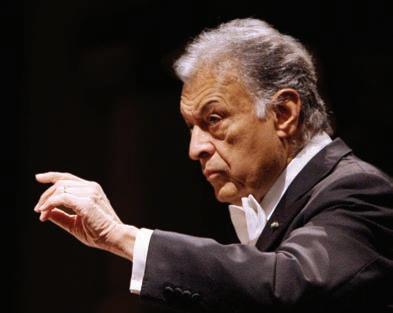
Nadine Sierra, soprano
MAR 23–25
Mälkki Leads Dvořák
Susanna Mälkki, conductor
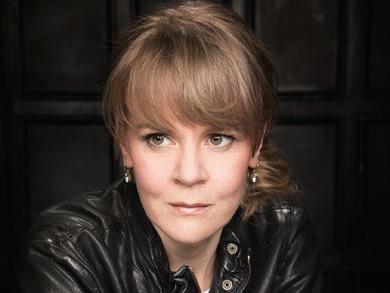
Claire Chase, flute esperanza spalding, bass
MAR 30–31
Tchaikovsky and Sibelius
Dalia Stasevska, conductor
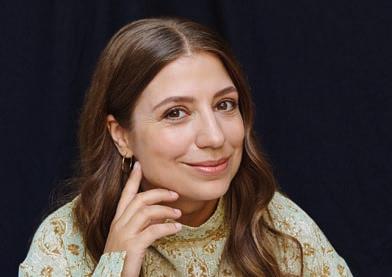
Randall Goosby, violin
COLBURN CELEBRITY RECITALS
MAR 12
Igor Levit, piano
MAR 15
Hilary Hahn, violin
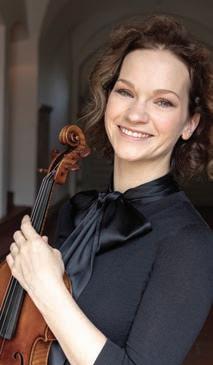
34 PERFORMANCES MAGAZINE
Dalia Stasevska
Hilary Hahn
Susanna Mälkki
Igor Levit
Zubin Mehta
Get Your Tickets Today! Programs, artists, prices, and dates subject to change. laphil.com | 323 850 2000 LOOKING AHEAD
City of Los Angeles
Karen Bass Mayor
Hydee Feldstein Soto
City Attorney
Kenneth Mejia Controller
CITY COUNCIL
Bob Blumenfield
Kevin de León
Marqueece Harris-Dawson
Heather Hutt
Paul Krekorian President
John S. Lee
Tim McOsker
Traci Park
Curren D. Price, Jr.
Nithya Raman
Monica Rodriguez
Hugo Soto-Martinez
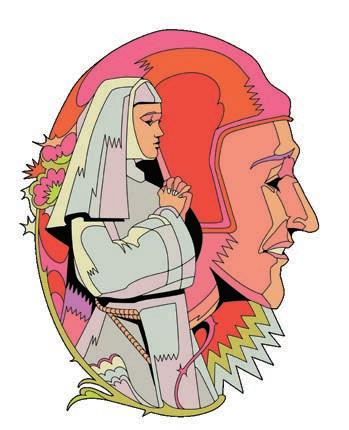
Katy Young Yaroslavsky
DEPARTMENT OF CULTURAL AFFAIRS
Daniel Tarica
Acting General Manager
CULTURAL AFFAIRS COMMISSION
Elissa Scrafano President
Thien Ho Vice President
Evonne Gallardo
Charmaine Jefferson
Ray Jimenez
Eric Paquette
Robert Vinson
WALT DISNEY
CONCERT HALL

HOUSE STAFF
Marcus Conroy
Master Electrician
Kevin F. Wapner
Master Audio/Video
Greg Flusty House Manager The stage crew is represented by the International Alliance of Theatrical Stage Employees and Moving
PERFORMANCES MAGAZINE 35
ANNUAL DONORS 2022 / 2023 SEASON TICKETS START AT $25!
11, 14, 17 & 19 A hysterical comedy, a heartbreaking tragedy, from one of the greatest composers of all time. Visit sdopera.org or call 619-533-7000
Picture Machine Operators of the United States and Canada, Local No. 33.
FEBRUARY
Welcome to The Music Center!
We are incredibly honored you have chosen to join us at L.A.’s only performing arts destination!
The Music Center is your place, where you can experience all the arts have to offer, from self-expression and connection to the joy of witnessing live performance and events in our four incredible theatres, at Jerry Moss Plaza and in Grand Park. With safety as our number one priority, we promise to provide you the best, safest experience possible on our campus.
Be sure to visit musiccenter.org to learn about upcoming events and performances.
Enjoy the show!
#BeAPartOfIt
@musiccenterla
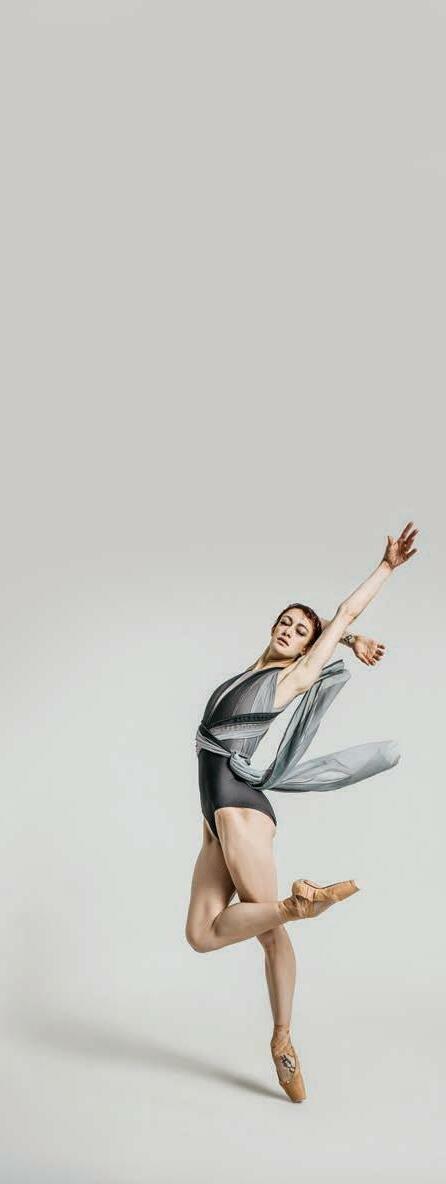
General Information (213) 972-7211 | musiccenter.org
Support The Music Center (213) 972-3333 | musiccenter.org/support
2022/2023 BOARD OF DIRECTORS
OFFICERS
Cindy Miscikowski Chair
Robert J. Abernethy Vice Chair
Darrell R. Brown Vice Chair
Rachel S. Moore President & CEO
Diane G. Medina Secretary
Susan M. Wegleitner Treasurer
William Taylor Assistant Treasurer and Chief Financial Officer
MEMBERS AT LARGE
Charles F. Adams
William H. Ahmanson
Jill C. Baldauf
Susan E. Baumgarten
Phoebe Beasley
Thomas L. Beckmen
Dannielle Campos
Greg T. Geyer
Jeffrey M. Hill
Carl Jordan
Terri M. Kohl
Kent Kresa
Lily Lee
Cary J. Lefton
Keith R. Leonard, Jr.
David B. Lippman
Susan M. Matt
Mattie McFaddenLawson
Elizabeth Michelson
Darrell D. Miller
Shelby Notkin
Teresita Notkin
Michael J. Pagano
Cynthia M. Patton
Karen Kay Platt
Joseph J. Rice
Melissa Romain
Beverly P. Ryder
Maria S. Salinas
Lisa See
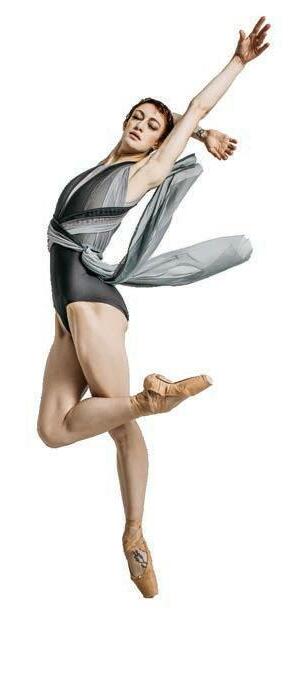
Mimi Song
GENERAL COUNSEL
Rollin A. Ransom
DIRECTORS EMERITI
Wallis Annenberg
Peter K. Barker
Judith Beckmen
Ronald W. Burkle
John B. Emerson **
Richard M. Ferry
Brindell Gottlieb
Bernard A. Greenberg
Stephen F. Hinchliffe, Jr.
Glen A. Holden
Edward J. McAniff
Walter M. Mirisch
Fredric M. Roberts
Richard K. Roeder
Claire L. Rothman
Joni J. Smith
Lisa Specht **
Cynthia A. Telles
James A. Thomas
Andrea L. Van de Kamp **
Thomas R. Weinberger ** Chair Emeritus
Current as of 12/12/2022
Share Your Love for the Arts with Others!
Do you love the arts and want to share your enthusiasm for The Music Center?
Become a volunteer docent and part of The Music Center Symphonians! This dedicated group offers tours of The Music Center and enjoys a wonderful network of like-minded fans of the arts.
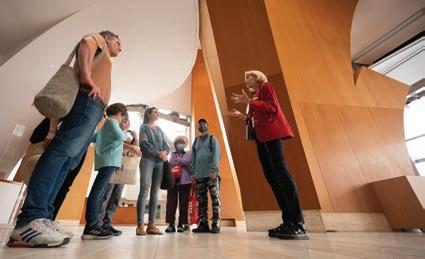
More information at symphonians@musiccenter.org.
Matthew J. Spence
Johnese Spisso
Philip A. Swan
Timothy S. Wahl
Alyce de Roulet
Williamson
Jay S. Wintrob
Complexions Contemporary Ballet’s Jillian Davis. Photo by Rachel Neville.
BOARD OF SUPERVISORS
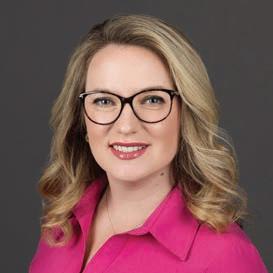
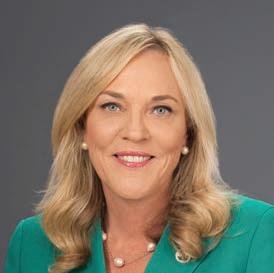

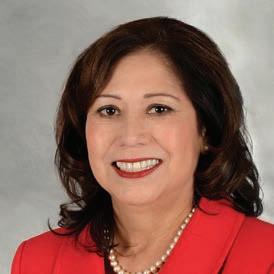
COUNTY OF LOS ANGELES
Support from the Los Angeles County Board of Supervisors plays an invaluable role in the successful operation of The Music Center.
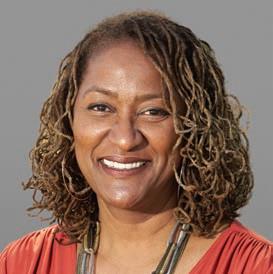 Hilda L. Solis Supervisor, First District
Janice Hahn Chair Supervisor, Fourth District
Kathryn Barger Supervisor, Fifth District
Holly J. Mitchell Supervisor, Second District
Lindsey P. Horvath Supervisor, Third District
Hilda L. Solis Supervisor, First District
Janice Hahn Chair Supervisor, Fourth District
Kathryn Barger Supervisor, Fifth District
Holly J. Mitchell Supervisor, Second District
Lindsey P. Horvath Supervisor, Third District
Live at The Music Center
WED 1 FEB / 8:00 p.m.
Colburn Celebrity Recital
Emanuel Ax
LA PHIL
@ Walt Disney Concert Hall
FRI 3 FEB / 8:00 p.m.
Ray Chen plays Mendelssohn
LA PHIL
@ Walt Disney Concert Hall
Also 2/4/2023
SAT 4 FEB / 7:30 p.m.
The Marriage of Figaro
LA OPERA
@ Dorothy Chandler Pavilion
Thru 2/26/2023
SAT 4 FEB / 11:00 a.m.
The Firebird
— Symphonies for Youth
LA PHIL
@ Walt Disney Concert Hall
TUE 7 FEB / 8:00 p.m.
Green Umbrella
LA Phil New Music Group with Paolo Bortolameolli
LA PHIL
@ Walt Disney Concert Hall
THU 9 FEB / 8:00 p.m.
Yuja Wang & Dudamel: Rachmaninoff Concerto 1
LA PHIL
@ Walt Disney Concert Hall
FRI 10 FEB / 11:00 a.m.
Yuja Wang & Dudamel: Rachmaninoff’s “Rhapsody”
LA PHIL
@ Walt Disney Concert Hall
SAT 11 FEB / 8:00 p.m.
Yuja Wang & Dudamel: Rachmaninoff Concerto 2
LA PHIL
@ Walt Disney Concert Hall Also 2/12/2023
SUN 12 FEB / 7:00 p.m.
Choose Something
Like A Star
LOS ANGELES
MASTER CHORALE
@ Walt Disney Concert Hall
THU 16 FEB / 8:00 p.m.
Yuja Wang & Dudamel: Rachmaninoff Concerto 3
LA PHIL
@ Walt Disney Concert Hall Also 2/17/2023
SAT 18 FEB / 2:00 p.m.
Yuja Wang & Dudamel: Rachmaninoff Concerto 4
LA PHIL
@ Walt Disney Concert Hall Also 2/19/2023
SUN 19 FEB / 8:00 p.m.
The Secret Garden
CENTER THEATRE GROUP
@ Ahmanson Theatre Thru 3/26/2023
THU 23 FEB / 8:00 p.m.
Lang Lang Plays Grieg
LA PHIL
@ Walt Disney Concert Hall
FRI 24 FEB / 8:00 p.m.
Bruch and Brahms
LA PHIL
@ Walt Disney Concert Hall
Thru 2/26/2023
SAT 25 FEB / 11:00 a.m.
Very Special Arts Festival
— Community Day
THE MUSIC CENTER
@ Jerry Moss Plaza
SAT 25 FEB / 2:00 p.m.
Sounds About Town
American Youth Symphony and National Children’s Chorus
LA PHIL
@ Walt Disney Concert Hall
TUE 28 FEB / 8:00 p.m.
Chamber Music
Schubert and Prokofiev
LA PHIL
@ Walt Disney Concert Hall
Visit musiccenter.org for additional information on all upcoming events.
@musiccenterla
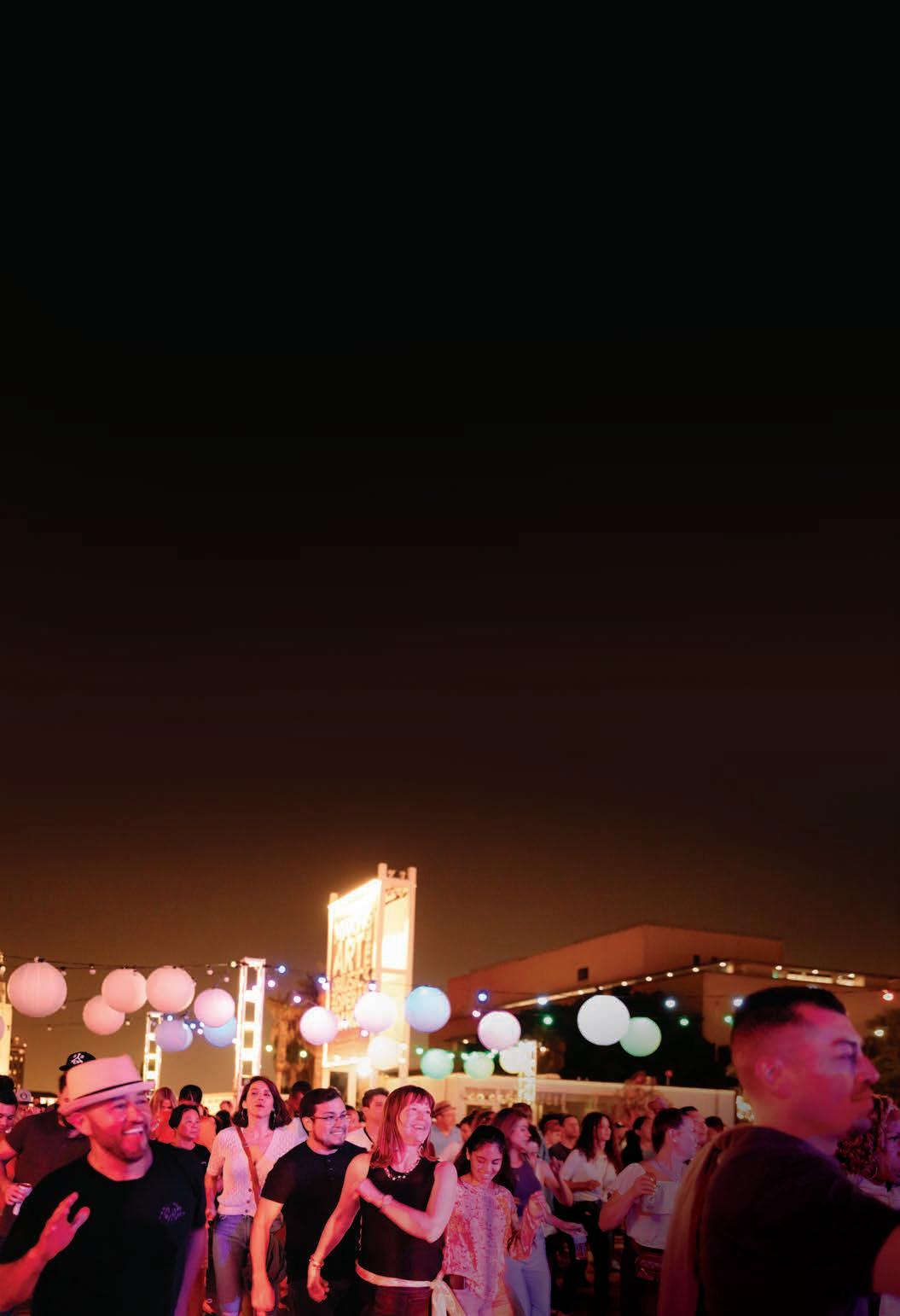
FEB 2023
Photo: Will T. Yang for The Music Center
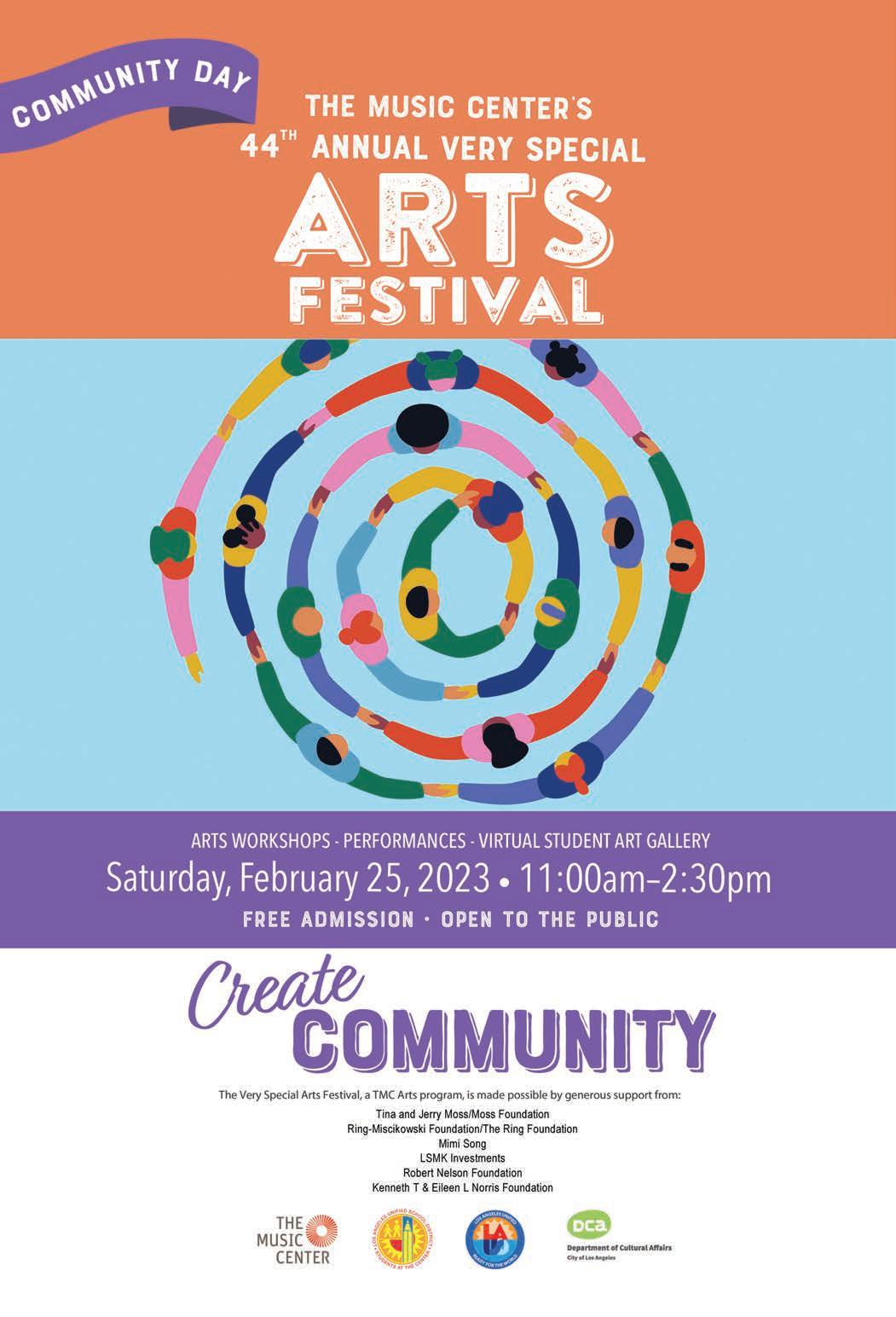
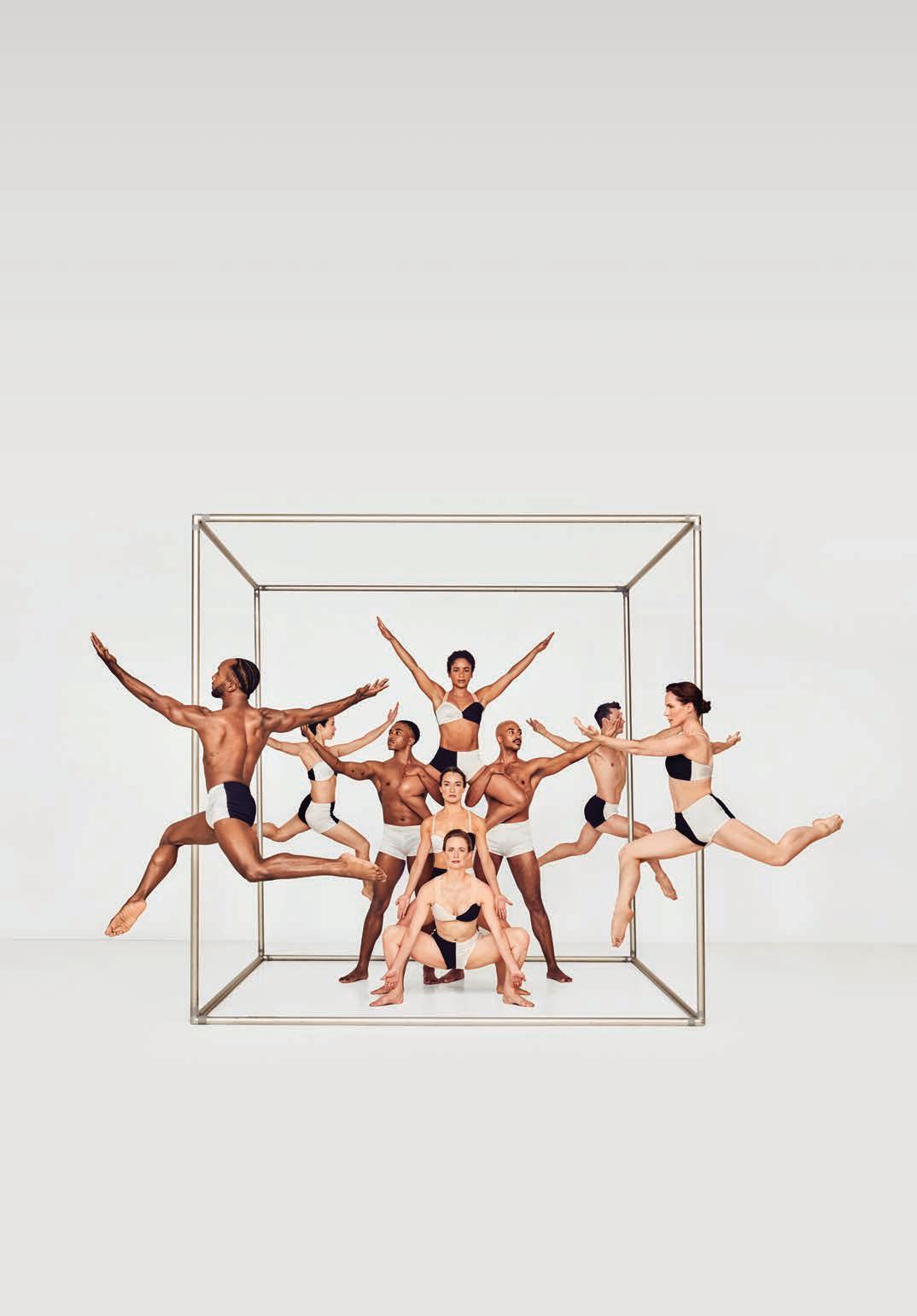
musiccenter.org | (213) 972-0711 Company in Polaris
Experience one of the most famous and dynamic dance ensembles in the world! Paul Taylor Dance Company The Music Center’s Dorothy Chandler Pavilion April 28–30, 2023 TICKETS ON SALE NOW!
. Photo by Ruven Afanador.
Wed Feb 15 | 8pm
Filharmonie Brno: Janáček, Martinů and Dvořák
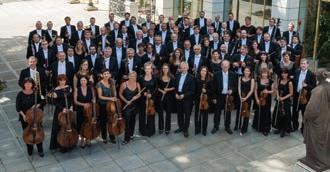
Dennis Russell Davies, Chief Conductor and Artistic Director
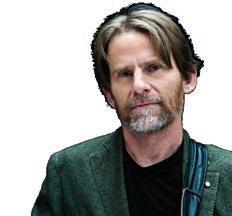
Sat Feb 18 | 8pm
Requiem: Fire in the Air of the Earth

A.I.M by Kyle Abraham
Thu Feb 23 | 8pm
Treelogy: A Musical Portrait of California’s Redwood, Sequoia and Joshua Trees
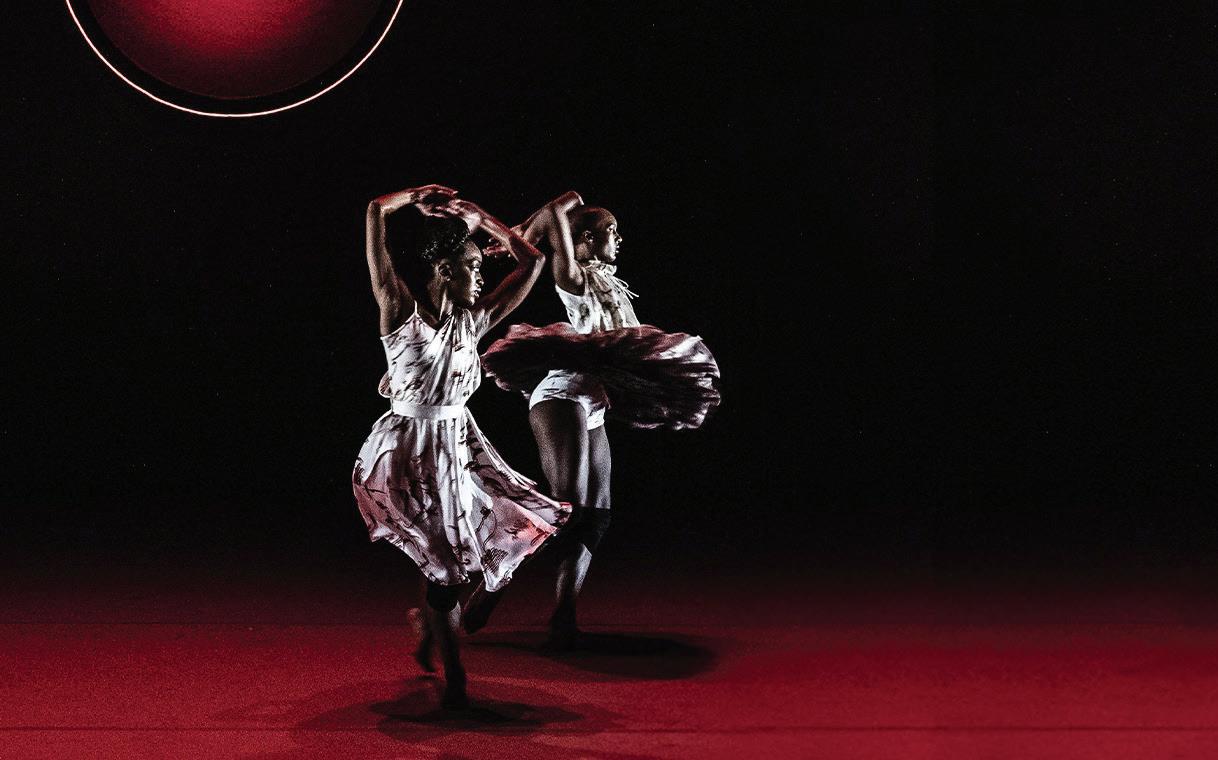

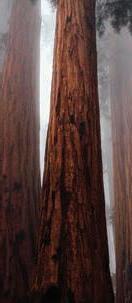
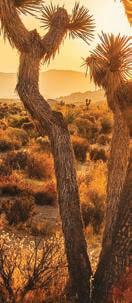
Sat Mar 4 | 3pm
Yamato – The Drummers of Japan

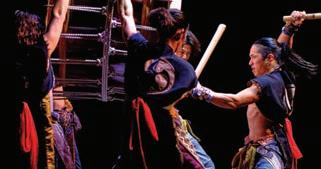
Hinotori: The Wings of Phoenix
Renowned composers Billy Childs, Steven Mackey, and Gabriella Smith — all with deep California roots of their own — have each composed original music for this three-part concert. Commissioned, produced, and presented by The Soraya, Treelogy is a celebration and a call to action to save California’s beloved and iconic trees.
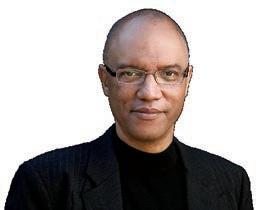
Yamato
 Filharmonie Brno
A.I.M. by Kyle Abraham
Filharmonie Brno
A.I.M. by Kyle Abraham


Affiliated real estate agents are independent contractor sales associates, not employees. ©2023 Coldwell Banker. All Rights Reserved. Coldwell Banker and the Coldwell Banker logos are trademarks of Coldwell Banker Real Estate LLC. The Coldwell Banker® System is comprised of company owned offices which are owned by a subsidiary of Realogy Brokerage Group LLC and franchised offices which are independently owned and operated. The Coldwell Banker System fully supports the principles of the Fair Housing Act and the Equal Opportunity Act. CalRE# #030716398 JadeMillsEstates.com | 310.285.7508 Encourage Creativity Support the Arts




























































































































































 Hilda L. Solis Supervisor, First District
Janice Hahn Chair Supervisor, Fourth District
Kathryn Barger Supervisor, Fifth District
Holly J. Mitchell Supervisor, Second District
Lindsey P. Horvath Supervisor, Third District
Hilda L. Solis Supervisor, First District
Janice Hahn Chair Supervisor, Fourth District
Kathryn Barger Supervisor, Fifth District
Holly J. Mitchell Supervisor, Second District
Lindsey P. Horvath Supervisor, Third District













 Filharmonie Brno
A.I.M. by Kyle Abraham
Filharmonie Brno
A.I.M. by Kyle Abraham

